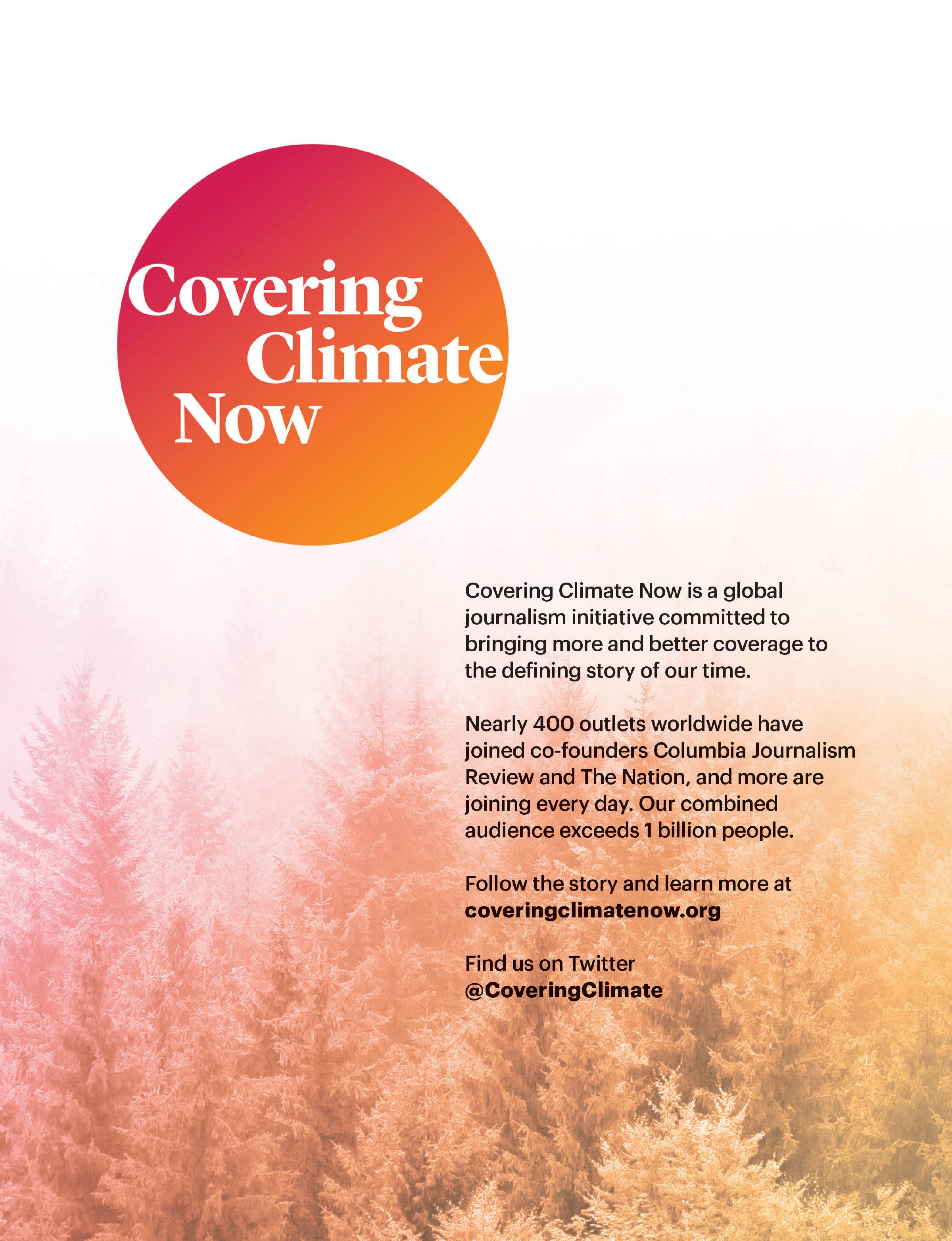EDEN



Plant-Powered Pioneer Journey to Animal Advocacy


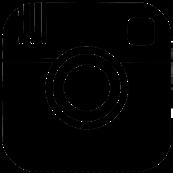



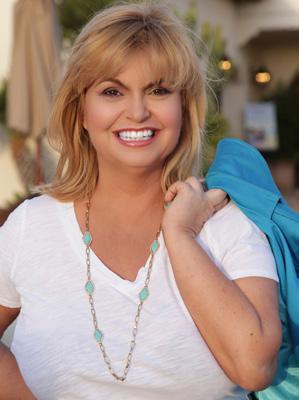

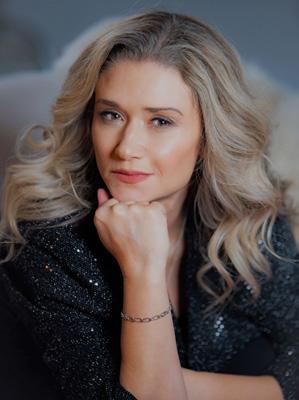


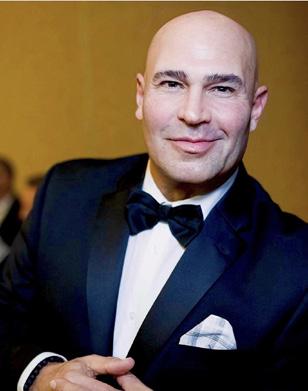


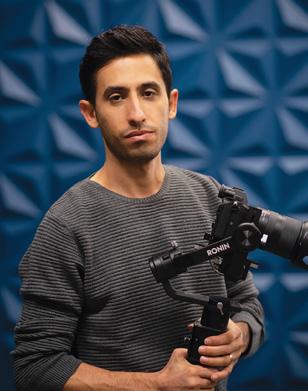
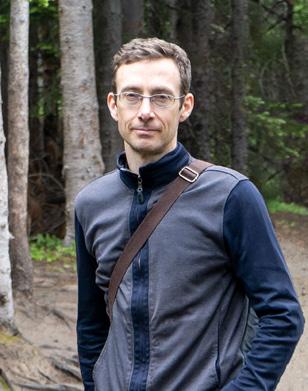

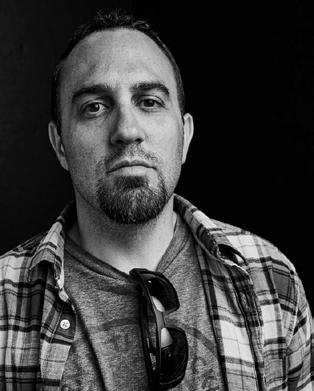

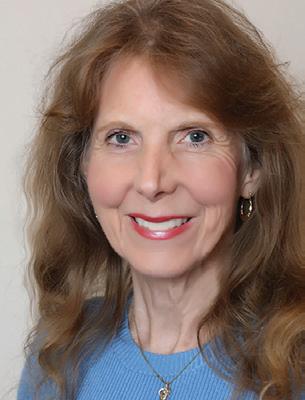



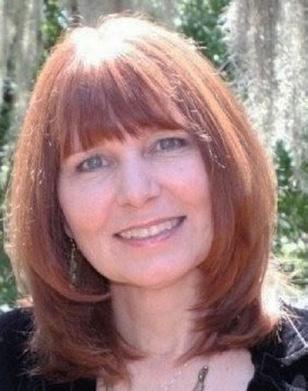

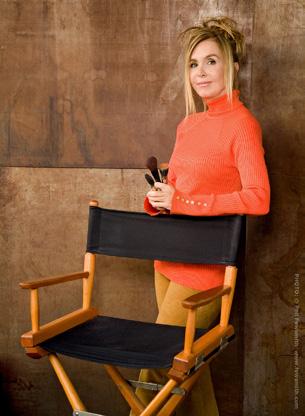


The Eden Magazine is a free online publication is your guide to healthy living, spiritual awareness, compassion and love for all living beings, holistic lifestyle, mindfulness, organic living, positive thinking, sustainability, and personal development
Founder & Editor-in-Chief
Maryam Morrison
Executive Editor/Contributing Writer
Dina Morrone
Communication Director/Contributing Writer
Alexia Melocchi
Contributing Writers
Susanna Schroadter
Polly Wirum
Nikki Pattillo
Emilie Macas
Dulce Garcia-Morman
Jan Wakefiled
Polly Wirum
Joe Santos, Jr.
Sherri Cortland
zee
Guest Writer
Philip Smith
Contributing Stylists + Makeup Artist
Edward Hakopian
Lisa Joy Walton
Graphics & Photography
JSquared Photography @j2pix
Artin Mardirosian (Nexision)
Sheri Determan
Greg Doherty
Ben Rollins
Isabelle Ruen
Web developer
Brad wallace
https://bradwallacedesign.com/
325 N. Maple Dr. Po Box 5132 Beverly Hills, CA 90209


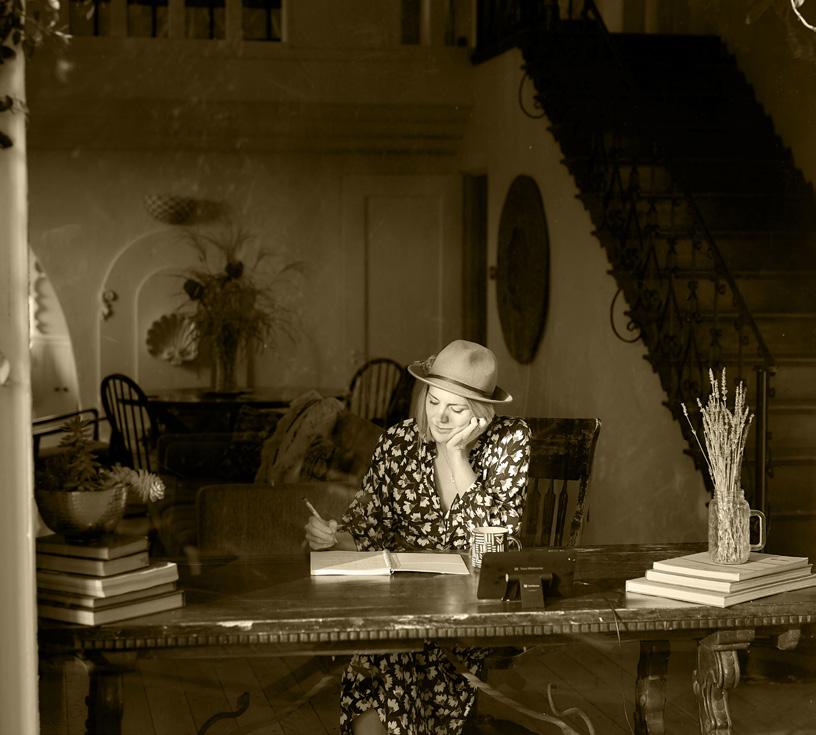

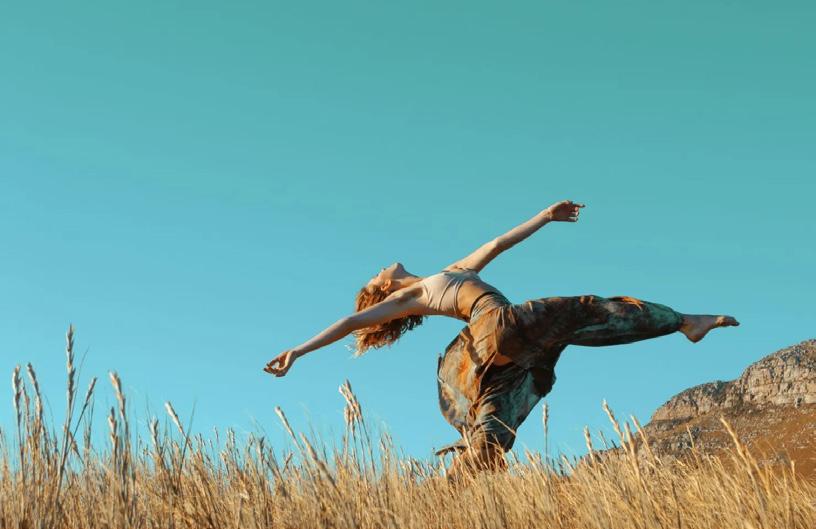
62
EQUINE-ASSISTED INTERVENTIONS FOR MENTAL HEALTH by
Dulce Garcia-Morman66
A SPIRITUAL EVOLUTION by Nikki Pattillo
72
UNIQUE WAYS TO ASSESS YOUR COMPLETE by Polly Wirum
76 CAN ENERGY HEALING IMPROVE OUR HEALTH? by Emilie Macas

62
80
THE WORLD OF SPECIFICS AND GENERALIZATIONS by Zee
84
INTO THE HEART OF GIANTS A JOURNEY THROUGH THE REDWOOD FOREST by Jan Wakefiled
90
BECOMING SOCIAL by Sally Fryer Dietz
98
EVS AREN’T FAILING THEY’RE JUST FOLLOWING THE ADOPTION CYCLE by Gabrielle Dore Covering Climate Now

66
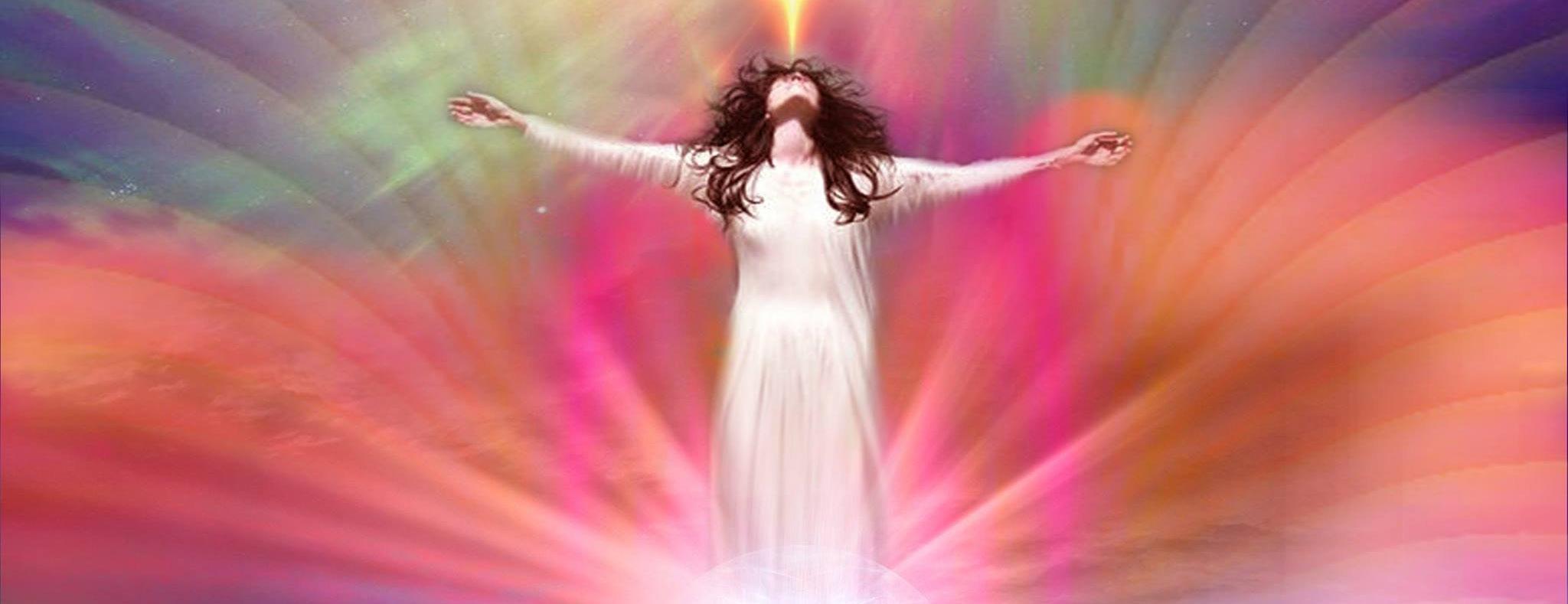

76
Cover by Denise McCarthy
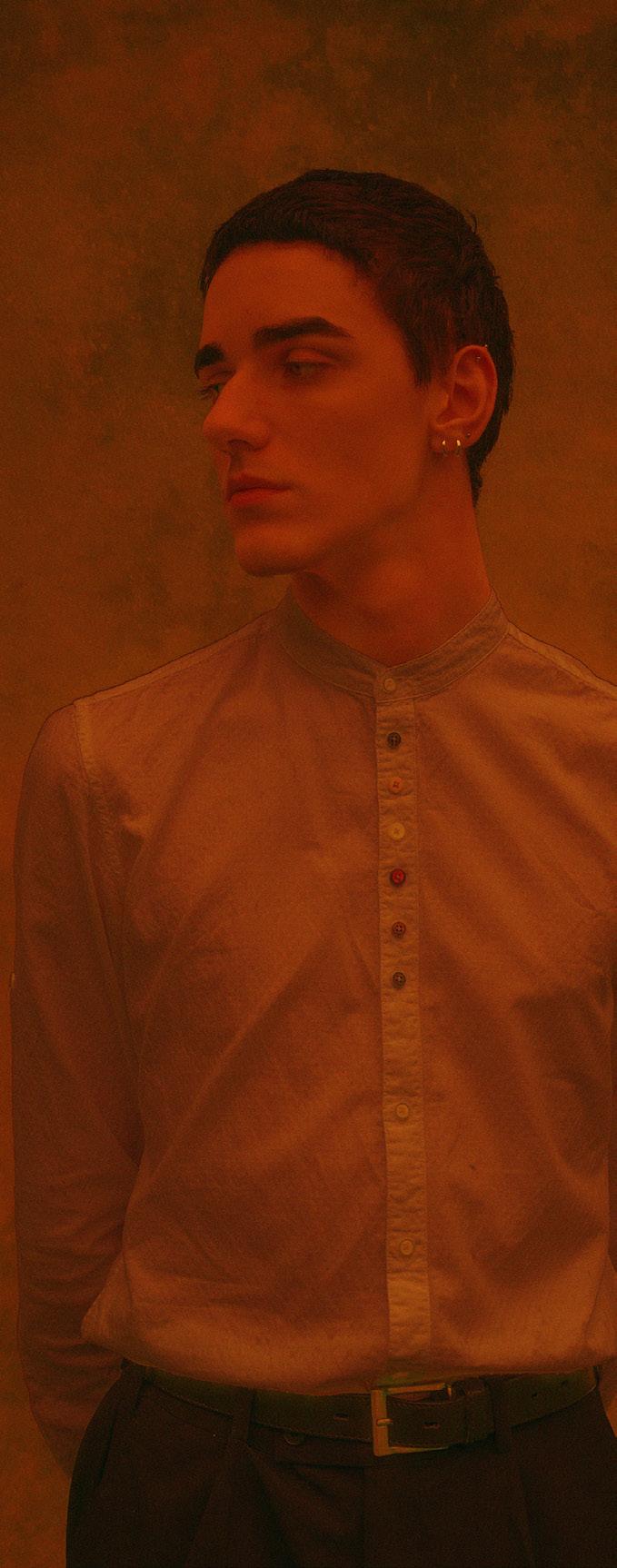
80
72

90

98




What is wisdom? Can it be scientifically defined? For millennia, people defined wisdom in a variety of ways, yet all seemed to rely on an idea that could be phrased as “I know it when I see it.” Can something so important be left to intuition, or can wisdom actually be quantified?
Answering this question became the basis for a research study called The Wisdom Research Project, and the results of this study became the basis of the book Common Wisdom: 8 Scientific Elements of a Meaningful Life by Laura Gabayan, a world-renowned physician-researcher. The goal of this study was to scientifically determine if wisdom is what in Latin would be called sui generis (“of its own kind” or “in a class by itself”) or if wisdom was a combination of different elements. In other words, is the purpose of life to attain wisdom, or do we use wisdom for the purpose of attempting to understand the meaning of life? Or both?
Common Wisdom scientifically determined the 8 most common elements of wisdom, and discusses what they are and how to better attain them.
Of the 8 elements, the most common was resilience. Here is a brief, edited excerpt of the discussion about resilience
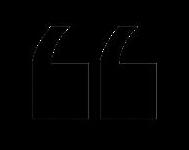
found in Common Wisdom:
Resilience was the most common element associated with wisdom. It makes sense. When we think about people who have encountered a difficult life challenge and resolved it with grace, we tend to regard them with special admiration. We become intrigued by how that person managed to not only survive the obstacle but thrive. They have turned a potentially negative experience into a positive learning opportunity, making them wiser. The more of these life challenges they overcome, the wiser they seem to be. As Oprah Winfrey once noted, they turned their “wounds into wisdom.”
Although we mentally compare the types of obstacles and their gravity, all obstacles are difficult, regardless of how we quantify them. What may seem like a minor challenge to us may be a major life-altering event to someone else. Whether it be a strained relationship, health crisis, or loss of a loved one, wise people view life’s challenges as lessons. They don’t view themselves as victims but rather as students—here to learn lessons that would have otherwise never been learned. In essence, they believe they needed that obstacle. It helped further shape who they are and built their character. The bigger the obstacle, the bigger the lesson, and as is often said, “The harder you fall, the higher you bounce.”

Another way to attain resilience is to believe that things do not happen to you but for you. When things seem to be going wrong, and your life seems to be encountering great turbulence, think of the bigger picture.
Resilience is a way of being. It is a mindset that you are not a victim but a warrior. Life is not always fair and is full of obstacles that have to be overcome. Helen Keller said, “Although the world is full of suffering, it is also full of the overcoming of it.” In many ways, it is accepting that notion that puts us at peace and lets us be prepared to fight. It’s not that we are on high alert every moment of our lives; it is that we know life will throw us obstacles, but we are prepared to take them head-on and are confident we will overcome them.
Inner resilience first starts with how you feel about yourself. It’s the knowledge that you are strong and you are capable of overcoming anything that comes your way. It’s a sense of self-confidence and integrity. It is knowing that what you stand for matters for yourself and others. By having self-respect, you ensure that others have respect for you as well. All these things combined contribute to an inner strength that’s necessary for resilience. At the end of the day, we all want to be loved and respected. Being respected by others will lead to more feelings of self-confidence, and this, in turn, will lead to a greater sense of self-worth. It’s a self-perpetuating cycle.
Remember the famous saying, “What doesn’t kill you makes you stronger”? An obstacle serves as a lesson, resulting in a more resilient and wiser you. In fact, after each obstacle, you become more and more equipped to say, “I can do it,” to the next obstacle. This inner confidence feeds how you interact with the outside world. Resilience also instills in you a sense of gratitude for the challenge. You welcome the obsta-
cle and think, Bring it on. Over time, you view every obstacle as a challenge to be overcome, secure in the knowledge that you will come out the other end with even more knowledge, experience, and confidence in yourself.
An obstacle can also serve as an awakening or major life-changing experience. Maybe you or someone you know has gone through a horrible life event and completely changed their perspective and life as a result. This is often referred to as a “spiritual awakening.” Deepak Chopra said, “Awakening is not changing who you are, but discarding who you are not.”
In spiritual terms, a way to view an obstacle is that it is there to develop your soul. In many ways, the fact that it is there is a sign that the divine feels you can master it, and it won’t break you but will make you stronger. In a surprising way, the obstacle is a gift.
Another way to attain resilience is to believe that things do not happen to you but for you When things seem to be going wrong, and your life seems to be encountering great turbulence, think of the bigger picture. Realizing that these experiences help us become stronger, smarter, more resilient, and thus wiser changes these experiences into something much more powerful and transformative. It’s easy to ask Why? or Why me? Instead, try asking Why not me? That question, along with the confidence that you can handle it, will lead to greater resilience.
You can learn more about resilience and the other 7 elements of wisdom, in Common Wisdom: 8 Scientific Elements of a Meaningful Life, available, on Amazon.

Dr. Laura Gabayan is a world-renowned physician-scientist. Regarded internationally as an expert in the field of research, she has received multiple research grants and awards for her work. She has also published dozens of papers cited by hundreds of researchers. https://lauragabayan.com/

Reports coming in from around the world left no doubt. Last year was the hottest in recorded history. The Earth’s average temperature rose from the preindustrial average by 1.48 degrees Celsius (2.66 degrees Fahrenheit), perilously close to the 1.5 degrees Celsius mark drawn in the sand by scientists as the threshold not to cross. Scientists were at a loss to explain how the jump in temperature could be so much larger than their models predicted. With much talk about carbon dioxide in the atmosphere, they did not see, like the emperor with no clothes, that the land had been stripped of vegetation and degraded.
George Perkins Marsh saw more clearly back in 1847. When speaking to the Agricultural Society of Rutland County, Vermont, he described the situation: “Man cannot at his pleasure command the rain and the sunshine, the wind and frost and snow, yet it is certain that climate itself has in many instances been gradually changed and ameliorated or deteriorated by human action. The draining of swamps and the clearing of forests perceptibly affect the evaporation from the earth and, of course, the mean quantity of moisture suspended in the air. The same causes modify the electrical condition of the atmosphere and the power of the surface to reflect, absorb, and radiate the rays of the sun, and consequently influence the distribution of light and heat and the force and direction of the winds. Within narrow limits, domestic fires and artificial structures also create and diffuse increased warmth, to an extent that may affect vegetation.”
Marsh explained that deforestation leads to desertification. He noted that
once lush lands gone to deserts around the Mediterranean from Morocco across the Sahara to the Steppes of Asia and Mongolia, “the operation of causes set in action by man has brought the face of the earth to a desolation almost as complete as that of the moon.”
Environmental degradation and resource scarcity result from misbalancing an environmental equilibrium, said Marsh. As long as we manage to keep resources in good condition, the welfare of future generations will be secured.
Much of the Adirondack Forest was timbered following the Civil War. Marsh argued in 1875 that if the watershed were allowed to deteriorate, there would be insufficient groundwater to provide rivers with adequate water. The Erie Canal would cease to be navigable for the barge transport that was vital to New York’s burgeoning economy. As a result, the Adirondack State Park (9,375 square miles) was created for watershed protection.
Today, the problem is too large to be solved with public parks. Instead, the government could harness market forces with a carbon offset fund that pays the value of the timber harvest. States with forests are obligated by law to raise revenue from timbering. For participating states, the Let Forests Grow Carbon Offset Fund would be matched by local private funds to pay the value not to cut timber on public lands. Private woodlot owners who have registered a timbering plan would also be paid the value at harvest time to leave the forest standing. Market forces reward those who reduce the destructive practice of clear-cutting, let trees pull down carbon dioxide to store more carbon, and let the soil become a bigger sponge to hold more water.

Standing trees provide much more carbon drawdown and water storage than planting new trees. Researchers have found that despite conventional wisdom, an 80-year-old forest has more than twice the carbon stored annually and wildlife values than a 40-year-old stand of trees. The oldest one percent of trees hold 30% of the stored carbon in the forest.
Measuring the amount of carbon dioxide in the atmosphere is the dipstick we use to quantify the climate calamity. Greenhouse gases have risen from 350 parts per million carbon to 420 parts per million carbon. We have gone from 700 billion tons of carbon in the atmosphere to 800 billion tons, and added a whopping 100 billion more tons of carbon dioxide. Where else can all the carbon go to get us back to 350 ppm?
The world’s biomass amounts to 564 billion tons. Packing that much carbon to increase the volume of plants and animals, an increase of 20%, will take decades and may not always be welcomed. Instead, we must look beneath the
ground cover. The world’s soil contains 2800 billion tons of organic carbon. A four percent increase in soil volume would be more than 100 billion tons of carbon. There’s more: when the soil goes through a chemical process to become the black gold called humus, it stores carbon for thousands of years.
Whenever plants use photosynthesis, they draw down carbon dioxide and manufacture liquid carbon in the form of carbohydrates (lipids and sugars). For most plants, two-thirds of the carbon goes to their biomass, and one-third is pushed out of roots to feed the soil. Grasses are exceptional. Salt marsh hay, sea grass, and lawn grasses are the champions. They always exude half of the manufactured carbohydrates from their roots and keep only half for their biomass. Walk on the grass or cut it, and the grass is stimulated to draw down more carbon dioxide to repair itself and provide more for the soil. A New England lawn can put down an inch of soil in one year, weather permitting.


Standing trees provide much more carbon drawdown and water storage than planting new trees. Researchers have found that despite conventional wisdom, an 80-year-old forest has more than twice the carbon stored annually and wildlife values than a 40-year-old stand of
trees. The oldest one percent of trees hold 30% of the stored carbon in the forest.
Applied nitrogen burns soil microbes and kills beneficial nematodes Unless quick-release fertilizer is spread on the lawn. The grass plants become addicted to food and water from above, and the plants are pushed apart so roots may be at the surface. The bare spots, called sun spills, bake in the sun. The soil compacts and dies and only the toughest weeds can grow there. The wimpy leaves restricted to a fertilizer diet provide easy munching for pests. The lawn care company comes to the rescue, punching holes, spreading more seeds, and spraying herbicides and pesticides. A chemical lawn has replaced a natural lawn. Rabbits, robins, and turkeys need not apply.
If, instead, established residential lawn owners did not apply quick-release fertilizer, the plants would stay closer together, and roots with fungi and bacteria would go down, opening the soil for living organisms, which include mites, springtails, insects, and worms. Bacteria provide enzymes, make accessible minerals, and fix nitrogen. A fertilizer-free lawn supports complex food webs topped by apex predators, foxes, hawks, and owls.
The Slow Water Carbon Offset Fund incentivizes residential property owners to
have natural lawns and to add more lawn grass by paying those who pledge not to use quick-release fertilizers and harmful chemicals $1 per square foot of lawn up to 1000 square feet. The maximum amount granted to a property owner for making the lawn care pledge is $1,000.
The Slow Water Carbon Offset Fund would also pay property owners to slow the runoff by installing green infrastructure with a grant program modeled on Maryland’s Stormwater Program and Los Angeles County’s Safe Clean Water Program. Granted funds would be distributed to residents installing rain barrels, green roofs, permeable pavers that provide a hard surface that can also infiltrate water, a native plant garden designed to absorb water, and Miyawaki forests.
A Miyawaki forest is a micro-forest of perhaps 1,000 square feet, with around 40 different woody plant types representing all stages of succession, from field-loving blueberries, sumac, and pines to old forest oaks, ash, beech, and maples. The plants thrive, growing rapidly as the products of bacteria, including enzymes that thicken plant blades, are shared with all plants by the fungal mycorrhizal network.

Forests have been called the world’s lungs because they inhale carbon dioxide and exhale oxygen. Plants successfully moved onto dry land long ago by packing fungi and bacteria around their roots and releasing bacteria and fungi into the atmosphere. Water vapor nucleates around the micro-organic particles to form water droplets that come together to form cumulus clouds. Cumulus clouds, mostly white and drifting low in the atmosphere, reflect sunlight and cast shade to cool the Earth. Decades ago, over 50% of the world was draped in cumulus clouds. Now, cumulus clouds cover a bit less than 50%. The cumulus cloud cover balance has been upset by 1-2%.
The Sun sends 342 watts of energy per square meter to Earth. The outgoing thermal energy has fallen to 339 watts of energy per square meter. One percent less thermal energy leaving Earth has changed the climate and is warming the globe. Several factors are retaining energy from escaping the planet. Greenhouse gases, primarily water vapor (66 to 85%) in the form of high-thin cirrus clouds, reflect energy back. The water vapors that cling to dust, smoke, and other dry particles form a haze where a polar charge prevents cloud formation. Haze holds thermal energy. Finally, changes in the Earth’s surface’s retention of more heat play a big role in the balance of Earth’s energy received and energy released.
Water vapor is the elephant in the climate change room that too few acknowledge because fluctuating concentrations and shifting clouds have not made a compelling hockey-stick graph over the years.
A water droplet, rising and falling in the air, rapidly changes state from gas to water to ice to snow to water (and there may be additional states in between). Water oscillates between endo-
thermic and exothermic reactions, drawing in and releasing heat. It is too quick hurtling through space in multiple states, too unpredictable, and too chaotic for climate scientists to model – predicting tomorrow’s weather is hard enough.
Meanwhile, over the forests where cumulus clouds form out of water vapor, there is a drop in atmospheric pressure. Moist air from high-pressure areas flows into the new lows over forests. Plants have developed a biotic pump to gain water in the moist air drawn off the ocean. When a forest is cut, the biotic pump is severed, and moisture stays over the ocean. Gathering moisture over the ocean gives it more energy. Heavier rains and stronger hurricanes will follow. When trees fall in a forest, the ocean has more energy, and storms become more destructive.
Our folly is to believe we can fix the climate without addressing what we are doing to the land. We have tipped several balances by 1-3%. Our actions causing climate change resulted in the hottest year on record. However, we could have avoided damages from droughts by taking better care of the land. We have worked against water instead of with it. We strip vegetation, bare the land, and destroy soils. Erosion and sedimentation carve and smother. We dry the land with hardened surfaces and spillways. Then, we blame climate, changing weather, industrialization, and people’s use of fossil fuels.
The Let Forests Grow and Slow Water Carbon Offset Funds do much more than offset our carbon footprints. The funds restore the natural cycles of water and carbon to advance responsible stewardship of the land. By acting locally, beginning at home, in our neighborhoods and states, we benefit everyone with a healthier, more verdant, and cooler Earth.

Rob
is a nationally-recognized and award-winning environmentalist. He is president & executive director of Cambridge, MA-based Ocean River Institute, a nonprofit providing expertise, services, resources, and information unavailable on a localized level to support the efforts of environmental organizations. For more information. please visit www.oceanriver.org


Gene Baur is a pioneering advocate for animal welfare, sustainability, and veganism. As the co-founder of Farm Sanctuary, he has dedicated his life to promoting compassion for farm animals and raising awareness about the ethical and environmental implications of factory farming. Gene continues to inspire individuals worldwide to make more compassionate choices for animals and the planet through his activism, writing, and public speaking engagements.
Gene Baur, a leading figure in the animal rights movement, has left a significant mark through his writings. His books, including Farm Sanctuary: Changing Hearts and Minds About Animals and Food and Living the Farm Sanctuary Life, delve into the ethical, environmental, and health-related aspects of veganism and animal welfare. Gene’s profound insights and experiences shared in his writings empower readers to make informed choices that align with their values, extending his mission to promote a more compassionate and sustainable world for all beings.
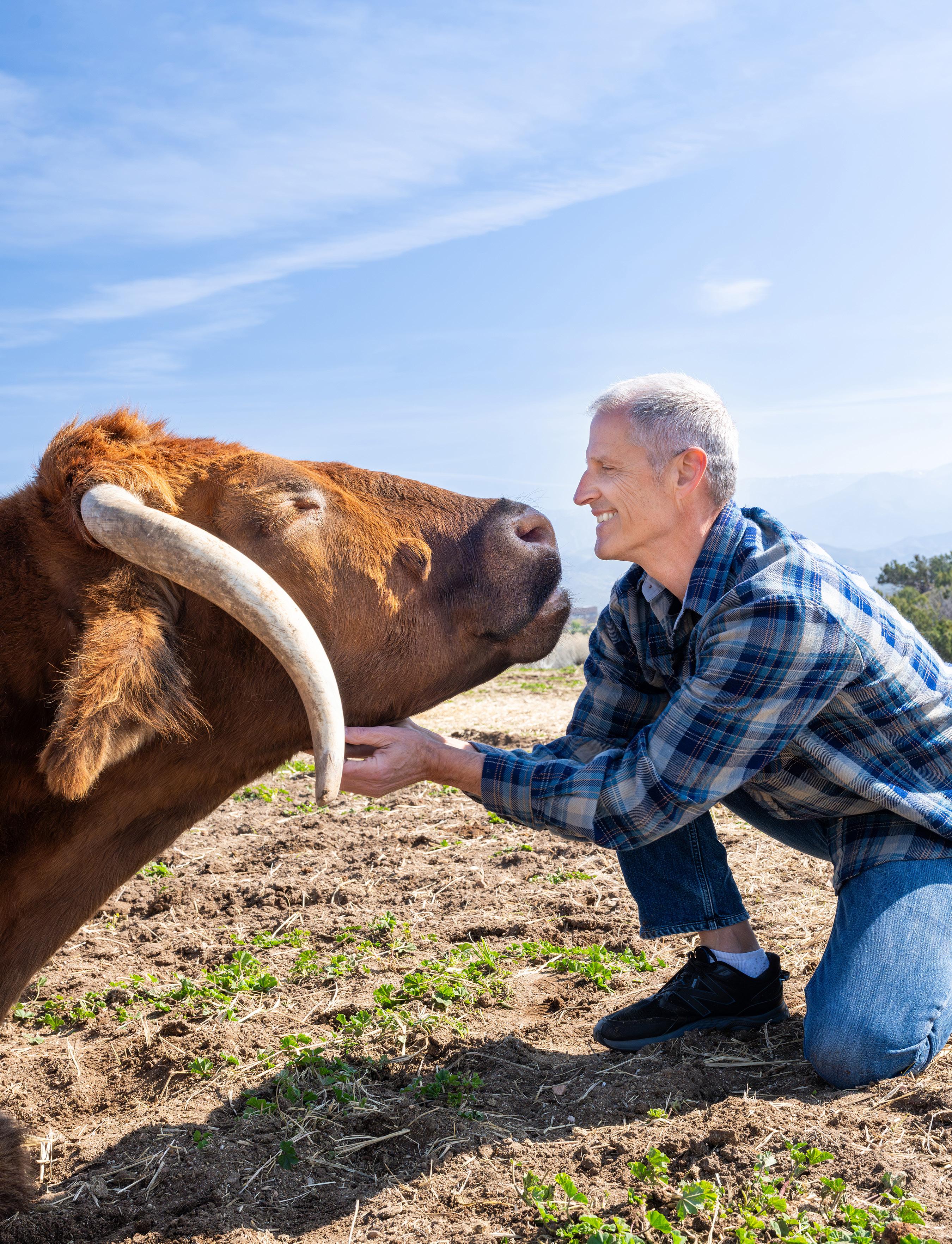
In our country, ten times more land is used for animal agriculture than plant-based agriculture. We can feed more people with less land and fewer resources by shifting to plant-based agriculture, which means we can create more wildlife habitat and ecosystems in biodiversity.
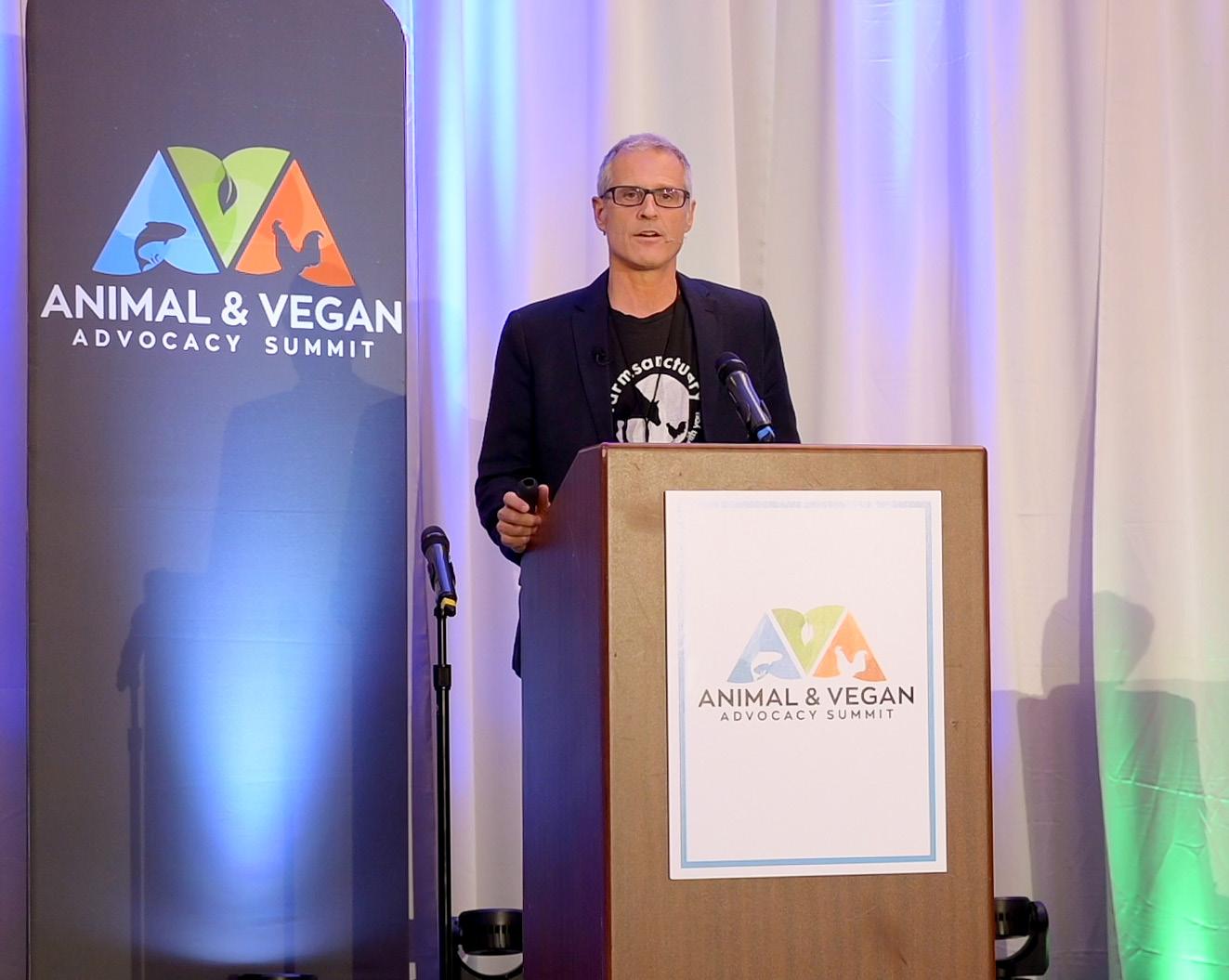

Can you share the inspiration behind founding the Farm Sanctuary and how it has evolved over the years?
One of our most important values at Farm Sanctuary is to speak to people where they are on their journeys. We need to be able to talk to many folks from different backgrounds, including farmers, and have empathy and understanding for why they may do what they do or believe what they believe.
I’m a vegan activist who has been vegan since 1985. I enrolled in the agriculture department at Cornell University and took animal science classes. I was in classes with students who learned things and were indoctrinated to believe certain things.
I found it to be abhorrent, but I was able to understand how people come to accept bad things as normal and then begin to justify and rationalize cruel behavior. It was eye-opening.
Going to Cornell, taking animal science classes, and taking agricultural economics classes helped me to understand the culture and belief system and understand, to the best of my ability, how we can reach these folks and find common ground toward building a food system that is good for humans, as well as other animals on the planet. It is important to understand the perspectives of others, especially those who have different perspectives from mine.
What challenges have you faced in running a sanctuary, and how have you overcome them?
Farmers have come up with a system where they believe we need to use animals for food production. What we’re trying to do now at
Farm Sanctuary is to demonstrate that we can produce food without exploiting animals.
In our sanctuaries, the animals are our friends, not our food. It’s beautiful to watch these animals recover from the abuse they experienced in the factory farming system and begin to enjoy life, play, and frolic. When we watch these other animals experience joy, it brings joy to us. And if you contrast that feeling, that experience, and that interaction with what it’s like to be in a slaughterhouse where the animals don’t want to be there, they’re stressed. They’re ultimately killed, and the people who work there are also stressed and doing things that are violent and bloody. Slaughterhouses are not only bad for cows and pigs and chickens and turkeys and other animals; I believe they are bad for people. So, each of us must make our own choices, but we should recognize that we have the option, in many cases, to choose a more compassionate way of living. Each of us has to make our own choices. I can’t tell others how they must or must not live.
Most of us, including myself, grew up eating animals without thinking about it. But as time passed, I recognized that I could live well without eating animal products. And I thought, if I can live well without causing unnecessary harm, why wouldn’t I?
I encourage people to make good choices and align with their values. Too often, when I bring up the issue of factory farming, people say, “Don’t tell me. I don’t want to know.” If we’re supporting this industry, we must be aware of that and ultimately act in a way that we can hopefully feel good about.
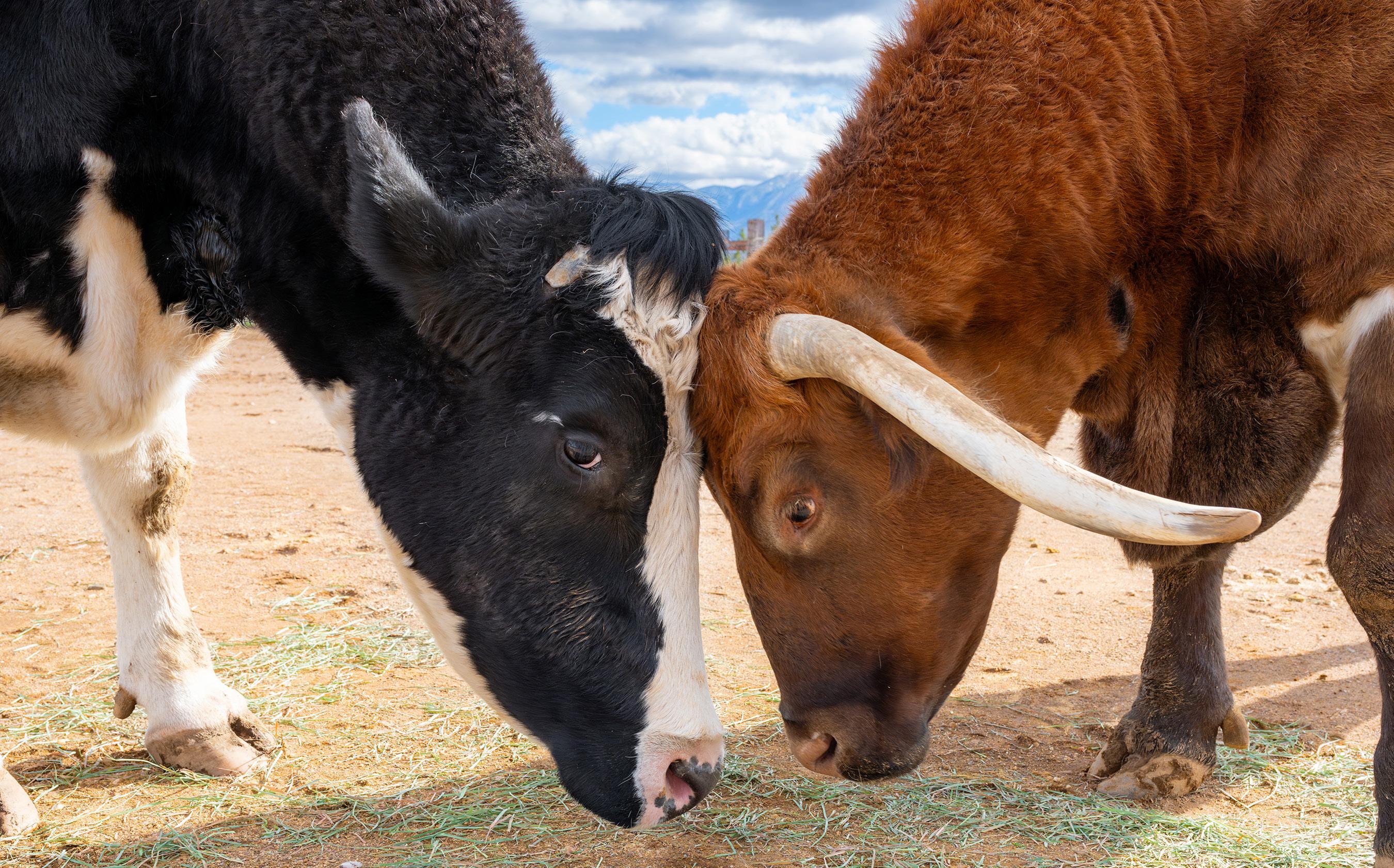
We certainly don’t want our pets to be our meals and feel the same about farm animals. What makes a domestic animal different than a farm animal? They should be treated the same. But as long as people keep eating meat, there will be farming. In your opinion, how can we manage this situation?
There are many parts to this. It isn’t easy. First, we must acknowledge that we have a choice and can decide if we want to or don’t want to buy and consume animal products. So many consumers can make those kinds of choices, but we have to challenge this myth that we have to eat meat for strength and we have to drink cow’s milk for calcium. Those are absolute myths.
We must start investing in a food system that makes healthy plant foods much more accessible.
Right now, the U.S. government and other governments spend billions of dollars to promote animal agriculture, to promote the excess production of cow’s milk, for example. When we have all this extra milk, it goes into the school lunch program, and the government buys it and then uses that program ultimately.
We need to look at the systems in place and start investing in different kinds of systems that ulti-
mately serve our interests as consumers because eating too many animal products the way we do today is contributing to heart disease, diabetes, and some forms of cancer.
Shifting to a whole-food, plant-based diet could save 70% on healthcare costs. The way we eat is hurting us and making us sick. Unfortunately, the government is subsidizing a food system that is harmful not only to us and other animals but also to the Earth.
In our country, ten times more land is used for animal agriculture than plant-based agriculture. We can feed more people with less land and fewer resources by shifting to plant-based agriculture, which means we can create more wildlife habitats, ecosystems, and biodiversity. A survey was done looking at mammals living on Earth a few years ago, and they found that of all mammals living on Earth today, only 4% live in the wild, 96% are domesticated, humans and mainly farm animals.
It’s because animal agriculture has such a massive presence and footprint. The more animal products consumers eat, the more wildlife and natural spaces are being taken up to grow corn and soybeans for animal feed or for grazing farm animals.
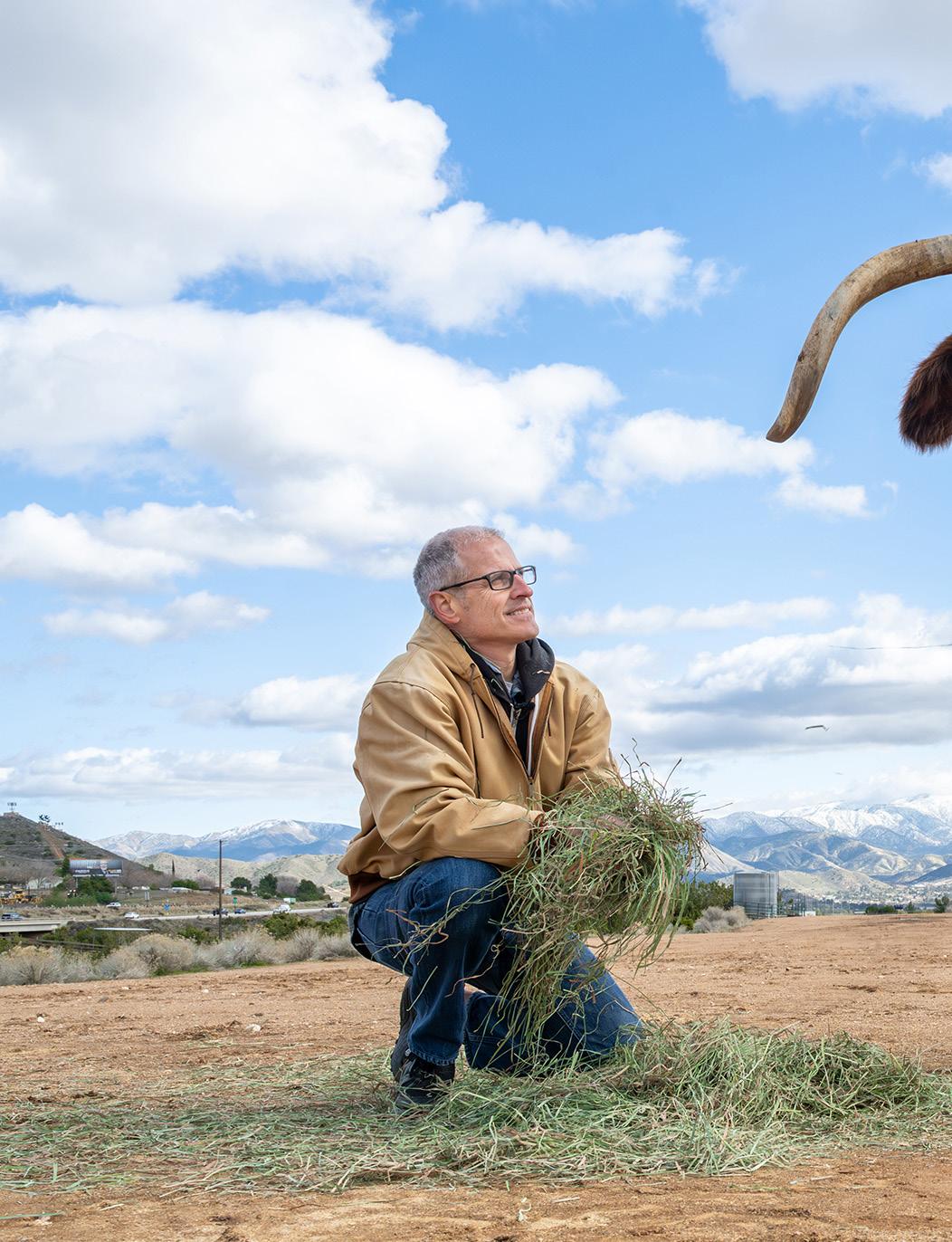


This system is immensely destructive and a significant contributor to the climate crisis. It is a harmful industry, and most people unwittingly support it.
First, people must be aware of the consequences—the impacts—of their food choices. Then, ideally, as I mentioned, they should make food choices aligned with their values and interests. And if people did that, we would see a revolution.
You run triathlons and demonstrate to yourself and others that you can be in peak physical health while being vegan. Is it something that you did to demonstrate that being vegan is the path? Or was it just a personal challenge? Yes, I went vegan when I was in my 20s in 1985, and I’ve been vegan for many years.
One of the arguments we often hear is that vegans don’t get enough protein or other nutrients. As a long-time vegan, I was getting everything I needed to be able to run marathons, and I did an Ironman triathlon and an ultramarathon. However, elite athletes also perform at the highest levels on a plant-based diet. People like Scott Jerick, legendary ultramarathon runner, did that as a vegan, winning many races.
Harvey Lewis is another elite runner, winning Badwater 135 and other significant ultra-races as a vegan. The only U.S. male weightlifter to qualify for the Olympics in Rio a few years back is a vegan. So, it’s not only athletes but also strength athletes who are getting everything they need by eating plants instead of animals.
I did some things, but it’s not quite what some of
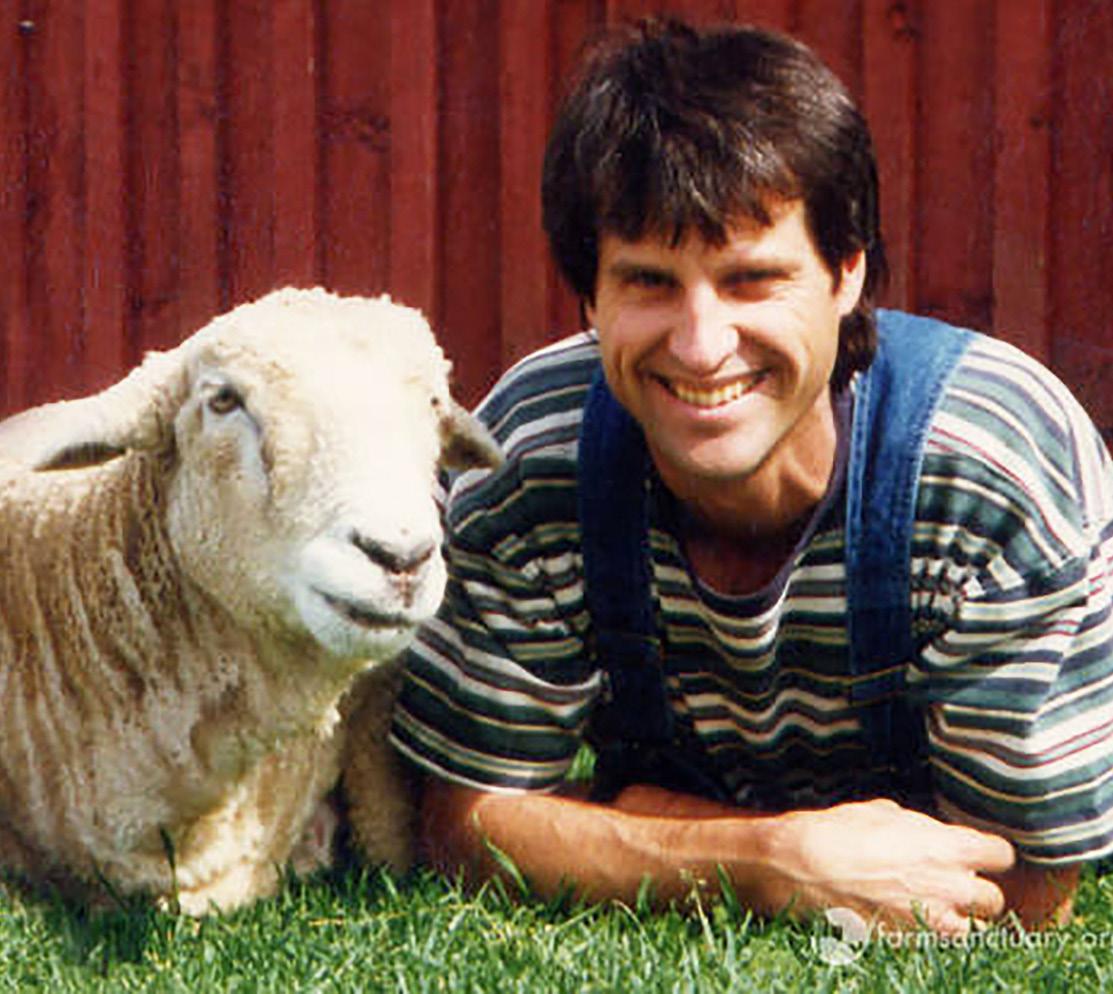
these other athletes are doing. But it shows that you can get everything you need. You can perform at the highest level, eating plants instead of animals.
You were a guest on Tony Robbins’ blog. Was there an inciting moment in your life where you decided that this is the path you want to take?
I grew up in Hollywood, California, and as a kid, I did Extra work. Believe it or not, I was in the background in McDonald’s commercials, so I didn’t recognize what I was contributing to through my dietary habits and some of the work I was doing when I was younger.
I grew up in the 1960s and 1970s; I saw many disturbing things around me.
There was the threat of nuclear war. There was environmental destruction. I saw wild animals being hit by cars and being harmed by human development and activities, and I felt that I didn’t want to be part of a system that was causing so much harm.
So, from high school, I started exploring what I could do to live more compassionately and less harmfully. I first learned about how veal calve are raised. When I was in high school, my grandmother told me that these baby calves were taken from their mothers and chained by the neck in crates for their whole lives. I said I’d never eat veal.
Then, in college, I learned more about the environmental consequences of animal agriculture, how inefficient it is, how harmful it is, and, again, how cruel it is to animals and workers, and how our health is suffering.

Then, when I finally learned that it was possible to live well without being part of the system and without eating animal products, I went vegan. Once again, that was in 1985.
In 1986, I co-founded Farm Sanctuary and started investigating factory farms. I saw firsthand how bad the conditions were, which cemented my commitment to this lifestyle. I believe this system is harming everybody, and we can play a role in changing it.
The founder of The Eden Magazine, Maryam Morrison, visited one of your farm sanctuaries outside Los Angeles and said it was magical. Are you planning to have other farm sanctuaries throughout the United States? What are people going to learn when they visit?
As you mentioned, Farm Sanctuary operates sanctuaries in New York and California, just outside Los Angeles. In addition to us, there are hundreds if not thousands of farm sanctuaries across the country and around the world.
We are collaborators; we work with our colleagues to create experiences where people can get to know a cow or a pig, a chicken, a turkey, or another animal who was seen as a piece of meat before coming to a sanctuary.
Earlier, you mentioned how many of us live with cats and dogs, which are part of our family. But at the same time, people often say they’re animal lovers, but at the same time, they’re eating other animals. I think it can be somewhat sobering to recognize that in some countries, they eat cats and dogs, but in some countries, they don’t eat cows, or they don’t eat pigs. So, which animals we eat and which ones we see as companions are quite arbitrary distinctions. The bottom line is that we can live without killing or eating any of them. Still, in our sanctuaries, people can interact with a cow like they might interact with a dog. People can go up and pet them. Pigs love belly rubs, so often you’ll walk up to a 500-pound pig and touch their belly, and because they’ve been at the sanctuary for a
while, they recognize getting a belly rub, and they do flop over on their side for a belly rub. Animals who’ve been at the sanctuary for a while become familiar with people; they come to trust people and recognize that human beings are going to be kind to them and seek out our company, which is an evolution.
Do you have any collaborations or partnerships that have been significant and to spearhead the type of work that you’re doing?
Yes, we work with various members of Congress to advance legislation that will limit the harms of animal agriculture and promote a healthier plantbased food system.
We work with environmental groups, farmer groups, and frontline food worker organizations. So, we seek to build a broad coalition of animal rights organizations, human rights organizations, social justice organizations, and environmental organizations that share the same interest in creating a healthier food system. We collaborate with a diverse number of individuals and organizations within the animal rights movement and far beyond it.
And our goal is to create solutions. Historically, our work has focused on the problems with factory farming. We’ve also worked to pass laws to end some of the worst cruelties, such as keeping animals in cages and crates where they can’t turn around or move.
We’ve been able to ban some of that cruelty in several states, but we also need to build solutions.
One of the things we’re focused on now is taking a resource-based approach to system change. So, resources are things like government programs, which cost billions of dollars. Suppose we can get those billions of dollars out of factory farming and invest instead in plantbased agriculture, local food systems, and healthy, community-oriented agriculture. In that case, that is a much better investment. That’s one of the

system-oriented approaches we’re taking. Another resource is land. And as I mentioned earlier, the vast majority of land in the U.S. is used for animal agriculture. Government programs have incentivized it to grow corn, soy, and other feed crops. We need to incentivize farmers to grow fruits, vegetables, legumes, and healthy crops that will be sold directly to consumers instead of for animal feed.
That’s another significant effort we’re in the midst of. We’re also creating agricultural programs that help sequester carbon in the soil and combat the climate crisis.
Right now, our system is creating enormous amounts of greenhouse gas emissions. Shifting to plant-based agriculture and engaging in more sustainable farming practices can also create opportunities for farmers to receive conservation dollars from the systems, and healthy, community-oriented agriculture. for doing the right thing, protecting the environment, and producing food without harming us. We have several things we’re doing, but they are all rooted in this resource-based approach to system change.
What inspired you to write your book, or speak about what is happened behind those closed doors, and how does it align with your mission and advocacy for farm animal rights?
The key part of our message is to say that farm animals, like other animals, matter. They have lives. They want to enjoy their lives. They each have one life to live. And it’s tragic the type of violence and abuse they experience at a massive scale.
It’s hard to wrap our heads around how massive this problem is. In the U.S, nearly 10 billion farm animals are raised and slaughtered annually. That is more individuals than there are human beings who live on Earth. And we’re killing that many every year in the U.S. If you go global, it’s even more. And if you include fish, the numbers are in the trillions. So, this is a massive, harmful industry, hurting individual animals, hurting the environment,
hurting our health, hurting communities, hurting farming communities. I want folks to be aware of the negative impacts of this system, but I also want people to feel empowered and have hope that they can make a difference. Part of that is helping the Farm Sanctuary care for the animals at our sanctuary. That’s one way.
We can also play a role with our fork daily and choose not to buy products from this factory farming system. Each time we make a conscious choice that is more compassionate, it empowers us to make more choices and take more steps to live more compassionately.
Change usually happens incrementally, so we support things like Meatless Mondays, where, for instance, one day a week, people go meatless. Isn’t that wonderful? Sometimes, that leads to meatless Tuesdays and then meatless Wednesdays, but you have to start somewhere.
I support every step toward living kindly and withdrawing our support from an industry that causes so much harm.
Different people will approach this in various ways. For some, it will involve getting to know individual animals, whether they’re cows, pigs, chickens, or whatever they may be.
For some people, it will be concern about the climate. And they don’t want to support an industry causing so much harm to our planet and the climate.
For some, the loss of biodiversity will be a concern. Others, it will be their health or concerns about the way workers are abused, or children are abused working in slaughterhouses.
There are so many reasons that we should care about this issue. Each person’s going to come to it in their own way.
A big part of what I try to explain is the impacts of our food choices and ultimately empower people to make better choices for themselves, other animals, and the planet.

I support every step toward living kindly and withdrawing our support from an industry that causes so much harm.

Was there ever a moment when you reached a dark place in your life and said, “I can’t do this anymore? I feel Hopeless. What’s the point?” And if so, what pushed you to continue plowing through this massive issue that takes more than a village and a few billion people to overcome?
Yes. I have seen a lot of horrible things. Instead of focusing on what I can’t do and dwelling in pain and despair, I can continue doing this work. I look at what I can do and get hope from that.
This is where celebrating small victories helps one cope with the massive problems we’re addressing. You have to take it step by step, do what you can, and then dwell on the success, the hope, and what you can do and feel empowered by it.
This is my mission. The industry and the system are causing such tragedy. And it needs to be addressed. And I will continue addressing it to the best of my ability.
Are there actionable things beyond what we eat that parents can do for their kids to help them become more active in this issue and create a lasting change?
We live in a democracy where voting and involvement in the process matter. So, showing up is essential, whether it’s a demonstration and protest or whether it’s reaching out to your elected officials or getting involved, even at your school, to encourage the school to have
more plant-based foods in the cafeteria. Speaking out about what is important, the younger generation is rightfully concerned about the state of our planet, the climate crisis, the loss of biodiversity, and the threats we’re all facing.
People can get involved with Farm Sanctuary through our website, FarmSanctuary.org. We have internship and volunteer programs, and we love for people to get involved and play a role in trying to create a more compassionate, healthier, and more just world.
What are the most pressing issues regarding farm animal rights, and how can individuals contribute to positive change?
People can donate to our website, FarmSanctuary.org, and any contribution is much appreciated. Interacting with animals at the sanctuary can also be a magical and transformative experience. It is an essential way for people to connect and to recognize that we share this world with other animals. Often, factory farms hide animals from public view. Ag-gag laws are being enacted to prevent consumers from seeing how farm animals are mistreated.
When visiting the sanctuary, you learn the animals’ stories, and look into their eyes,and see that they’re not that different from our cats, dogs, or even humans. In fact, apig’s eyes look a lot like a human’s eyes.
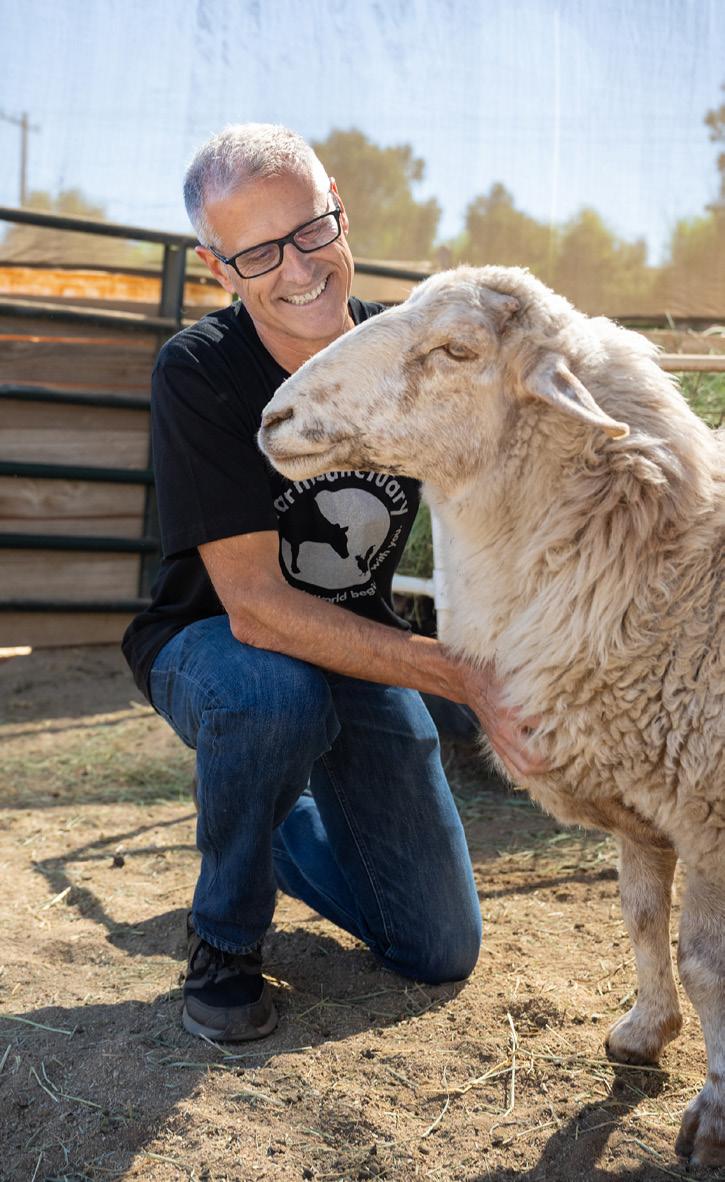




These animals are individuals, and when we get to know them, our empathy grows. Empathy is an essential part of our humanity, and the more disconnected we are from others and the more we mistreat others, the more likely we are to rationalize our mistreatment of others and often denigrate the victims of our cruelty. There are subtle ways that this happens every day, and we don’t even think about it. Calling somebody a pig, for example, is a put-down, and it’s also a way to put down the pig inherently, or calling somebody a turkey is also a put-down. These are subtle ways we denigrate the victims of our cruelty, and they enable us to continue to lose our empathy. And when we lose our empathy, we’re in trouble. We need empathy more than anything today.
Hollywood is one of the primary sources that can impact the public’s mind. In your opinion, how can Hollywood contribute with its storytelling to advocate for everything that you Gene stands for, but also foreign sanctuary stands for?
Hollywood plays a significant role in influencing how people see the world. Incorporate more messages of kindness and responsibility and act humanely and kindly.
It is very helpful to model that through different characters or tell stories about transformation and how human beings can live kindly and generously.
Creating positive examples for people is something that Hollywood can play a vital role in doing.
Also, I think exposing the violence and the cruelty of animal agriculture, although that’s going to appeal to a different audiences differently, is important.





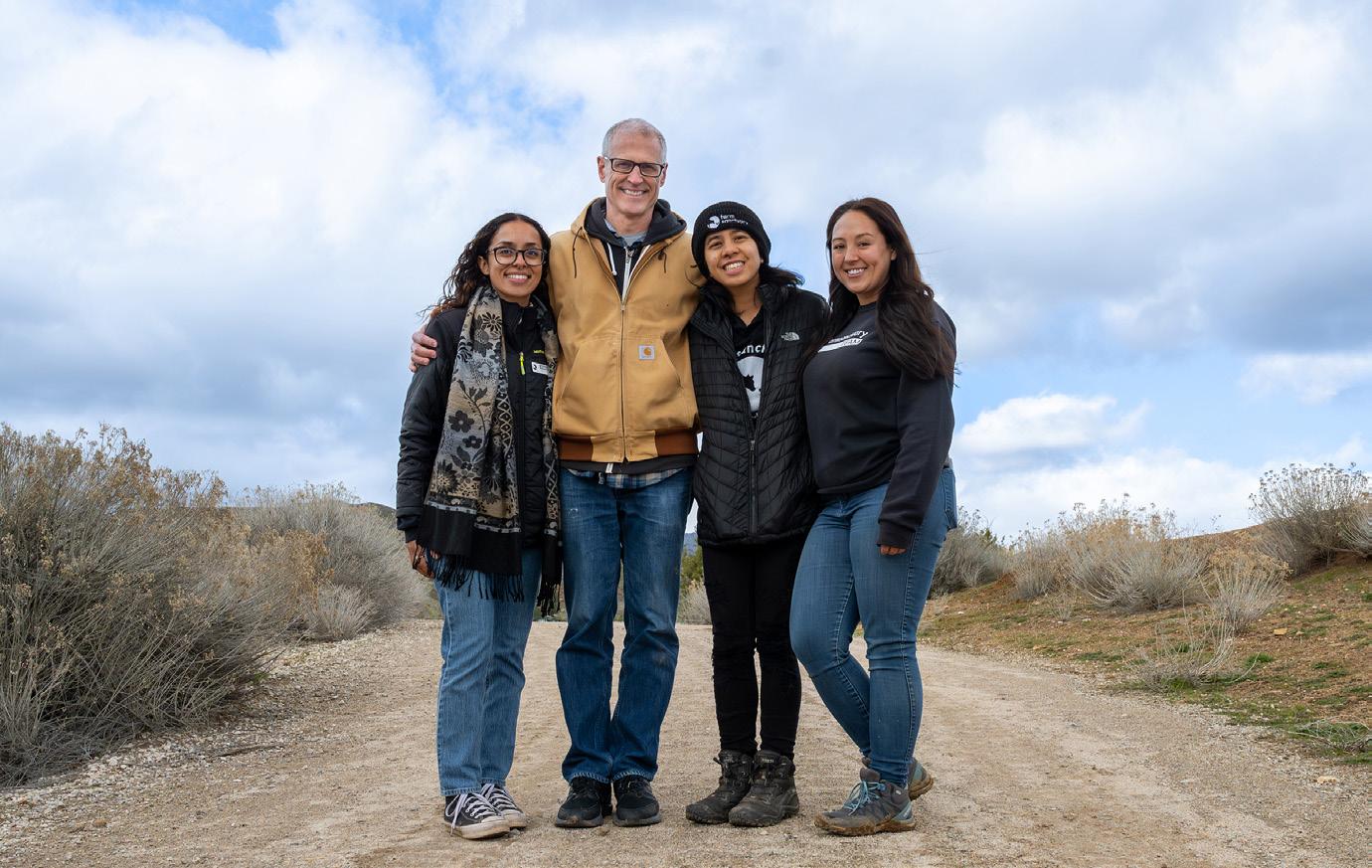

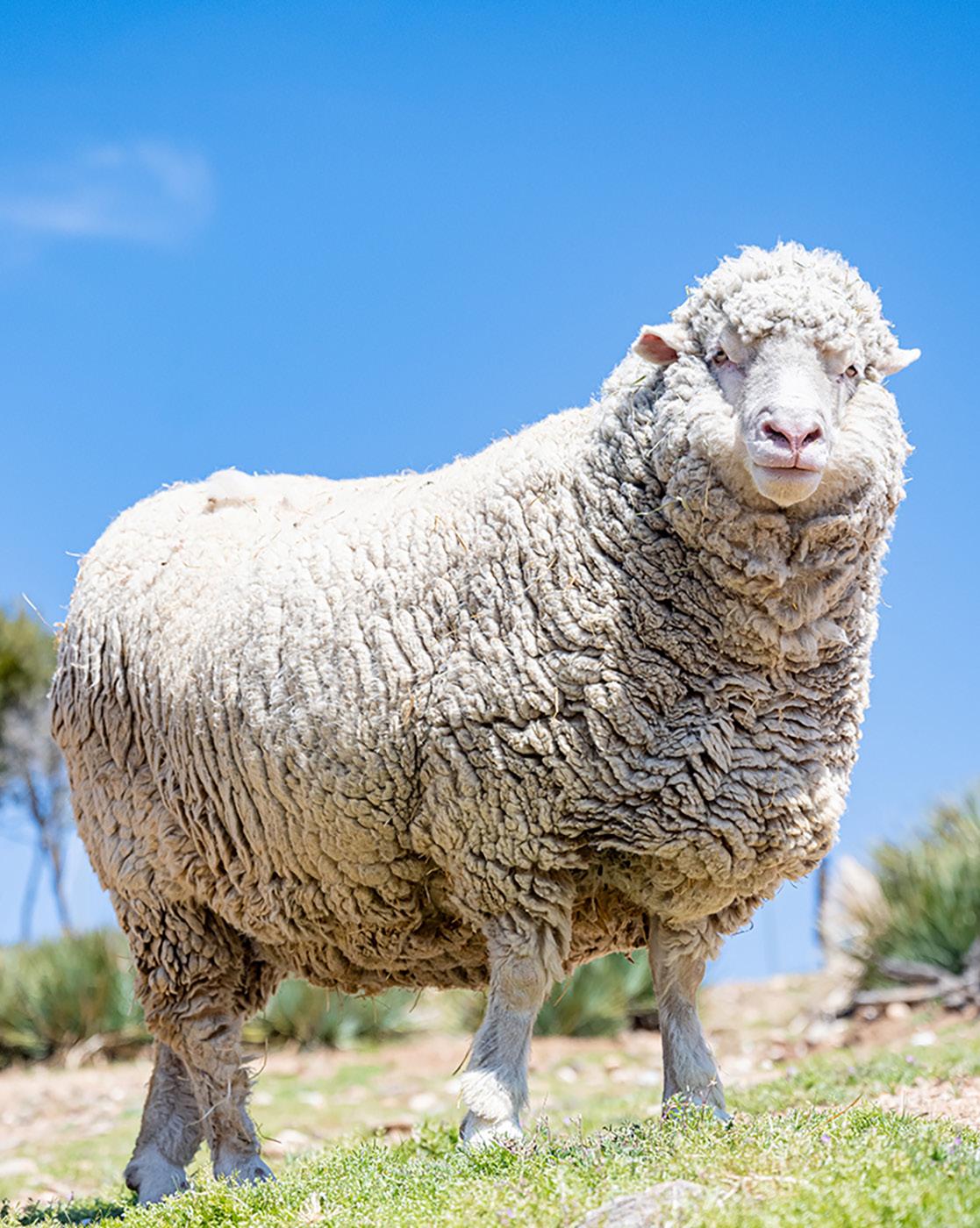
Do you have a meditation or spiritual practice that keeps you centered through all the ups and downs in life?
I remember what’s important: breathe, recognize that I’m lucky in many ways, practice gratitude, and live in gratitude, as difficult as things may be from time to time.
There are also responsibilities. I want to do everything I can within my power and within my means to create a kinder world. And that’s my purpose, my drive, and you can put up with a lot when you have a purpose.
Please tell us how you would define yourself in three words. Do you have any life mantras?
I am doing my best or trying my best, constantly learning, trying to grow and evolve. In terms of a mantra, there’s the serenity prayer. Lord give me the strength to change the things I can, the serenity to accept the things I can’t change, and the wisdom to know the difference. I do my best and recognize that there’s a lot outside my control. Human beings need to remain open-minded and humble because none of us has all the answers. We need to grow and learn and listen constantly, and often, we need to listen to those who have very different ideas from ours.
Special Thanks to:
Gene Baur
All the volunteers at Farm Sanctuary
Editing: Dina Morrone
Photography: Denise McCarthy
Videography: Meg Weck


As an introvert, I have always been drawn to the world of thought and feeling. In the field of psychology, it is generally accepted that where we come on the introvert/ extrovert spectrum forms the basis of our personality. Very often, the pressure on introverts to present themselves as extroverts in order to fit in is immense. The effort involved in subverting the most fundamental dimension of one’s personality often causes what Susan Cain, in her book ‘Quiet,’ refers to as ‘deep psychic pain.’ And so it was for me in my early years.
Whether primarily introverted or primarily extroverted, what matters is to live authentically. It is essential to know oneself and to be true to that self. There is little value in living an inauthentic life, nor is there any honour in being false. In my final two years in school, I was lucky enough to have one of those exceptional teachers who gave me a lifelong love of learning. In college, I chose to study the Humanities. Immersed in the great works of French, Spanish, and South American literature, I gained a lot of insight into humanity and the human condition.

In my professional life, I worked for many years as a Certified Employee Assistance Professional. Having completed a Diploma in Counselling, Hypnotherapy, and NLP, I provided a counseling and referral service, together with a health and well-being program for over a thousand staff members. It was an enormous privilege to be trusted with people’s innermost thoughts and feelings as they explored and dealt with their personal and work-related stresses.
Over many years, I have read widely in the Mind/Body/Spirit genre, starting with Louise Hay’s ‘You Can Heal Your Life.’ The two books that influenced my thinking more than any others were Eckhart Tolle’s ‘Stillness Speaks’ and Wayne Dyer’s ‘The Power of Intention. I sat in Stillness regularly, and I would later go on to sow the seed of my own book in the field of intention and water it regularly using affirmations and visualization. One day, an unusual email landed in my inbox at work. It was from a company called Xenergie, offering a course in self-mastery.
What attracted me to the course initially was the proposed location. The Burren, in County Clare in Ireland, is a UNESCO geopark. It is a mystical and spiritual landscape.
I signed up right away. I was required to complete a Myers-Briggs personality test in advance. It turned out I am an INTP, which stands for Introverted, Intuitive, Thinking, and Perceiving. This in itself was interesting to me. Although aware of the Myers-Briggs test, I had never actually completed it. The course itself appealed to me as it was to cover ‘ examining one’s life with a view to living deliberately’. It was Socrates, after all, who said the unexamined life was not worth living and Thoreau who ‘decided to live deliberately’ so that when he came to die, he would not discover that he had not lived.
And so it was in The Burren that the inspiration to write a MIND/ BODY/SPIRIT book came to me. Sometime after that, a serendipitous
event, one of those ‘meaningful coincidences’ that Carl Jung referred to, led to a year-long course in KI/ Energy training with a Korean master. The course involved Calisthenics, Chanting, and Meditation. The KI training deepened my connection to my soul/spirit self. It was to have a profound effect on the book I would eventually write. I gained a deeper understanding of what science has proven is the one unified field of energy in which everything exists.
The universal energy system only ever exists in the eternal present moment. To live in awareness, one needs to be consciously present, through the senses, in one’s immediate experience. Being instead of thinking is key. In this way we are in flow with our innate creativity and our intuition which is our natural guidance system.
I had a cabin built in my garden so that I would have a peaceful place to write. As it turned out, most of the writing was done at my kitchen table in the early morning hours. The book took three years to research and a further two years to write and edit. It has been the most enjoyable work I have ever engaged in.
The title for the book ‘OF HUMAN BEING’ was a nod to Somerset Maugham’s ‘OF HUMAN BONDAGE’, a title that stayed with me over many years. Having accumulated so much research, I was on the
Whether primarily introverted or primarily extroverted, what matters is to live authentically. It is essential to know oneself and to be true to that self.

point of abandoning the entire project. I had no idea how to find my way into the research to begin the writing. In one of those light bulb moments, the idea for an A to Z structure came to me. By introducing the tagline ‘an A to Z of the power and art of human being’, I was then able to extract the relevant knowledge from the research and begin the writing. Each chapter covers the power and the art of two distinct concepts. There are twenty-six chapters in all, covering fifty-two separate concepts. Each piece has been distilled down to its essence. There are no wasted words.
The purpose of the book is to demonstrate how we can each use our power better in the art of living. I don’t believe, as is sometimes said, that we fear our power. I think we simply doubt it or have become disconnected from it. As Michelangelo said, ‘The greatest danger lies for most of us not in setting our aim too high and falling short, but in setting our aim too low and reaching our mark. Disconnected from our own powerful spiritual essence, we get caught up in the mundane world. By connecting to our power through Stillness and meditation, we discover who we really are. Likewise, when we are ‘being’ rather than thinking, when we are present, through the senses, in our immediate experience, we are in sync or in flow with the universal energy system. What Dostoyevsky referred to as ‘the river of life’. This is how we connect to our creativity and to our intuition, which is our innate guidance system.
The first chapter in the book explores ‘The Power of Appreciation’ and ‘The Art of Awareness’. A quick look at the contents page shows the range of ideas that are covered in the book, for example,’ The Power of Inspiration’ and ‘The Art of Intention.’ The final chapter covers ‘The Power of the Zeitgeist’ and ‘The Art of Zest’. When we let go of a sense of zest, that love of life, we begin to experience life as routine and mundane. We may even begin to take for granted the magic and the mystery that is life. When we are lucky enough to find ourselves in pursuit
of any aspiration, great or small, that pursuit is its own reward. Winston Graham put it beautifully when he said, ‘Give me the comma of imperfect striving, thus to find zest in the immediate living’. By living with a sense of zest, we honor life.
If, as Gandhi suggested, we are to ‘be the change’ we would like to see in the world, we need to foster a global culture of kindness. This is so much needed now in our homes, our communities, our schools, and our workplaces. Relationships thrive on kindness and flounder when kindness is withheld. It is good to remember that kindness itself has a built-in feel-good factor!
Throughout history, the principle of inequality has underpinned almost all our political, economic, and social structures. As part of the human species, we are all, by our very nature, equal. The fundamental inequality between any of us and the one that matters most is income inequality. Any system that presides over the existence of beggars and billionaires is a dysfunctional system, and our endless wars reflect shamefully on our species. To quote Willian Cockran, ‘The Earth is a generous mother. She will provide, in plentiful abundance, food for all her children, if they will but cultivate her soil in justice and in peace.
While we are a highly evolved species, we are not the All. Living as if human intelligence is the highest intelligence system operating in the universe can sometimes cause us to experience an underlying sense of anxiety, dissatisfaction, and a lack of purpose or meaning. It is only by engaging the power of our own higher intelligence in the art of being that we live life as it was originally intended. In this way, we honor ourselves, and we honor life.
If you do get to read ‘OF HUMAN BEING - an A to Z of the power and art of human being, I hope you enjoy reading it as much as I enjoyed researching and writing it. My favorite comment on the book so far is that ‘it keeps your mind in a good place.’

Orla Ryan grew up in County Tipperary, Ireland. She went on to study the Humanities at University College Dublin. Because of her interest in the human condition and her work as a Certified Employee Assistance Professional, she went on to do further studies in Counselling, Hypnotherapy and KI Training.
Her book OF HUMAN BEING - an A to Z of the power and art of human being is described as a unique guide to how we can use our power better in the art of living.
To purchase Orla book in Amazon, please visit https://a.co/d/5GeD4rV
It
Ifirst began to struggle with anxiety and depression when I was a teenager.
Despite a loving and happy childhood, by high school, isolation, rejection, and impossibly high standards for myself had led to intense feelings of self-hatred and despair. I don’t think it was a coincidence that, though I continued to make straight As and participate in sports, I’d lost touch with much of what lies at the core of who I am—my sensitive nature, my love of writing stories, and my deep connection to the moss-covered forests near my home.
Similarly, I don’t think it’s a coincidence that the world is experiencing record rates of anxiety and depression at a time when we’re as alienated from the natural world as we’ve ever been.
Everyone is different, but for me, reconnecting with nature was powerful medicine and the key to healing. And it wasn’t just the cortisol-lowering benefits of being outdoors, powerful as that is—it was relating to other living beings in a different way and realizing that I’m neither separate nor alone. Rather, I belong to a wider, living world— something far larger than myself. We human beings are animals, after all—an idea I explore in my novel This Animal Body.

 Photos by Raamin Ka
Photos by Raamin Ka
It took years of trial and error with help from many others, including a therapist, but here’s what I learned about how we can heal by reconnecting with the natural world:
In my mid-thirties, I went off antidepressant medication, moved cross-country, and started a new career as a coach all at the same time. Perhaps not the best decision, and perhaps unsurprisingly, depression soon resurfaced with a vengeance.
I started going on walks through nearby parks to decrease my stress and anxiety. As I trekked the same trails every day, I began to recognize the beings around me. The lizard with the electric blue tail who always darted behind the rock when he sensed my approach; the beech tree with the smooth, silver bark that all the slugs loved to climb after every rain; or the spider who re-engineered her beautiful, iridescent web across the path every morning just high enough so I didn’t walk into it—they first became acquaintances, then neighbors, then friends. Eventually, they felt like family.
My stress and anxiety decreased, but something bigger happened as well. As I spent more time with the wild ones, I noticed how different all the beings were—some were loud, some silent, some fast, some slow, some impressively colorful, and others undeniably drab. Many were weird, awkward, or ungainly, yet all of them had their own unique beauty and an important role to play.
Eventually, I came to understand that I did too.
As these beautiful, diverse beings showed up and embraced me
over and over, I came to realize that whatever I do, I am worthy, and however imperfect, I am always welcome.
When I was first starting to get depressed, someone observed that I was always in my head. At the time, I was utterly confused— where else could I possibly be?
It was only decades later, when learning a new way of walking through the woods that I discovered the answer.
I’d just learned a technique where you tune into your body and let it lead you wherever it wants to go. As I wandered this way through the woods, my body would often lead me to things I loved—deer, hummingbirds, or cranefly orchids. Frequently, I found myself playing in ways I hadn’t since I was a child—balancing across a fallen log, trying to sneak up on a turtle, or imitating a great blue heron. Always I felt a sense of freedom, joy, and childlike wonder—all absent for long periods of my life.

A great way to spend time with your wild family is to sit quietly outside in the same spot day after day and season after season. Your wild family will get used to you, you’ll get to know them, and you’ll build strong connections to the imperfect and exquisite life both around and within you.

Over time, I’ve learned that the answer to my childhood question is this—my body. When I’m in my head and focused on my thoughts, I’m trapped in rumination and hopelessness, anxiety and fear.
When I bring my attention to my body, on the other hand, I’m suddenly in the present moment. It’s a much more inviting place than my brain. Rather than constantly trying to figure out what might be wrong, my body simply responds to whatever’s happening with a neutral understanding and calm wisdom.
Also known as intuition or instinct, this wisdom of my body connects me to the wider living world, both because it’s closer to how animals know things and because when I’m aware of it, I’m more in touch with my own wild side. In my head, I’m separate and alone. In my body, I can feel how similar I am to the squirrel, the oak tree, or the stream.
As I spent more time with the wild beings around me, I got curious about their stories.
Who are they? Where do they go when I can’t see them? Why do they do what they do?
I began to learn as much as I could about the animals and plants I came across in my daily walks and sits. As I did, two things happened. First, I felt closer to them. Green anoles turn brown when stressed, and blue jays store food in trees and underground. Who can’t relate to letting your tension show sometimes and stashing a snack for later?
The second thing that happened is I noticed how all animals have a role in supporting the larger ecosystem. Bees probably don’t intend to help plants reproduce when they gather nectar and pollen, but they do. Squirrels may not realize they’re
planting trees when they forget to dig up their buried acorns, but they are.
I became aware of a truism in the natural world: All animals contribute to the well-being of others by doing what comes to them naturally.
It blew my mind. I’ve spent more hours than I’d like to admit worrying about whether I was doing as much as I should as well as I should.
I’ve exhausted myself trying hard to do everything exactly right. And here were all these plants and animals doing all these amazing things for the world without even trying.
Clearly, I’d missed that memo.
I began to experiment with doing less and only what came more easily. Over time, I discovered what gifts I can give to the world naturally, just by being who I am. As I write my stories, coach my clients, or take a nap on the sofa while the bee pollinates her flowers nearby, I feel a special kind of satisfaction knowing that we’re both doing our unstressed best to make the world a better place.
A great way to spend time with your wild family is to sit quietly outside in the same spot day after day and season after season. Your wild family will get used to you, you’ll get to know them, and you’ll build strong connections to the imperfect and exquisite life both around and within you.
To practice letting your body lead you, find a place outdoors where it’s safe to wander (a small park or backyard can work well). To learn about the wild things around you, you can observe them in real time or use online searches, field guides, and walks with naturalists.
It all begins with simply being. And being outdoors.
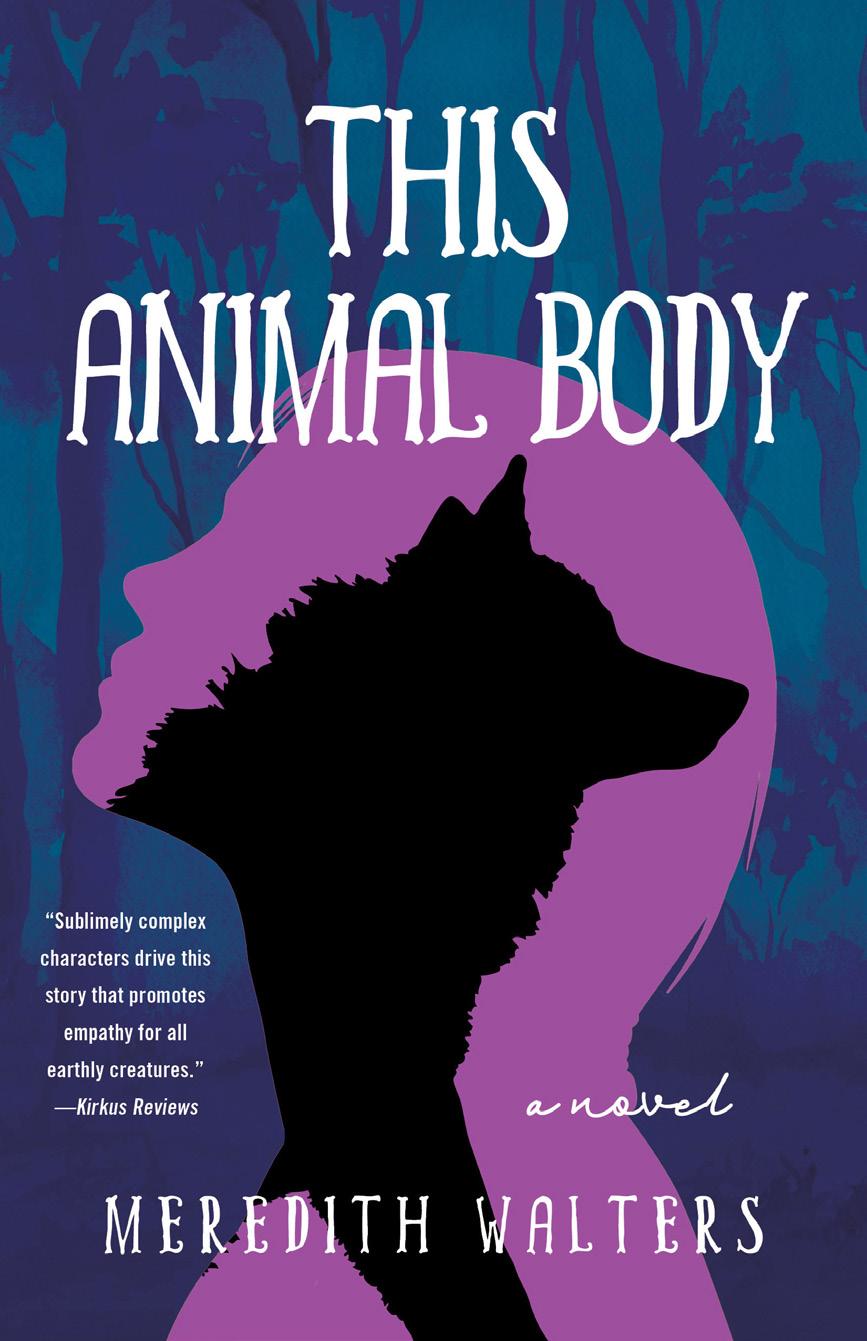

For as long as she can remember, Meredith Walters, author of This Animal Body, has wandered in forests looking for animals and magic and writing stories about what she found. Her life adventures have included volunteering for a nonprofit in Mexico, studying literature at UC Berkeley, getting an MBA, and working for a social enterprise startup.
Her short story collection, The Adventures of Little One, was published in 2018.
Today Meredith lives in Atlanta, Georgia, working as a life/career coach helping others rediscover their lost magic and once again writing stories about what she finds on her wanderings through the woods.

Winning with Laughter
Craig Shoemaker, widely known as “The Lovemaster,” is not just a comedian; he’s a pioneer in the art of laughter therapy and healing through humor.
Craig Shoemaker has performed comedy for four US Presidents, has specials on Netflix and Showtime, and won Standup Comedian of the Year at the American Comedy Awards.
Craig is a prominent speaker and coach; the founder and creator of the Laughter Heals Foundation, as well as the Winning With Laughter live events, one-on-one coaching, and
training system. Shoemaker has been included on the IMDB “Top 100 Stand-Up Comics” list.
Born out of personal struggles, his journey to becoming one of the most respected figures in comedy is as inspiring as humorous. Shoemaker’s comedic career took flight at the tender age of 17. Since then, he’s soared to great heights, earning numerous accolades. In this interview, we talked about ex-wives, cancel culture, social media obsessions, and living with a mask on to navigate the pandemic, all leading to Craig’s latest online course, life philosophy, and upcoming book.
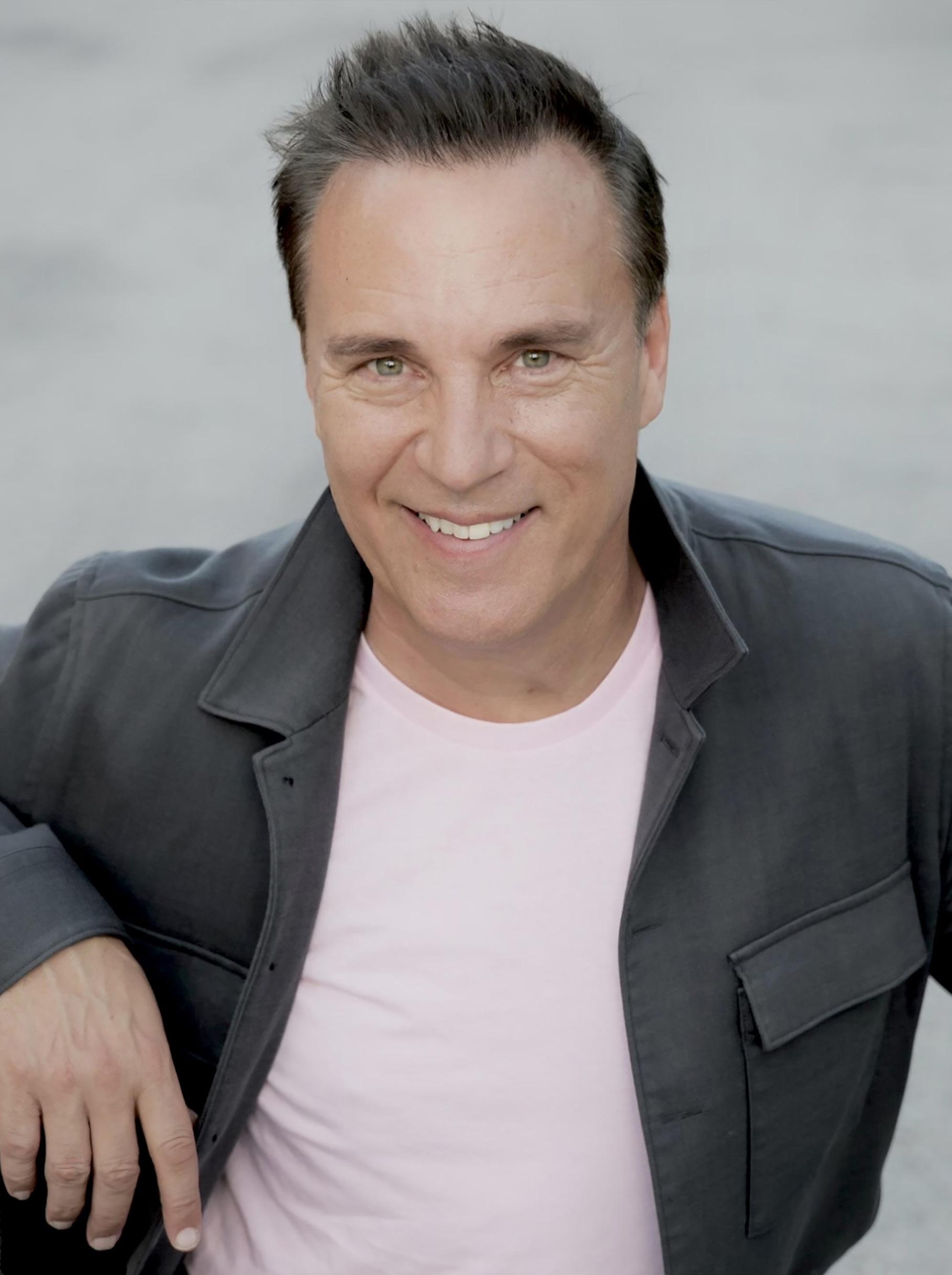
What was your original reason for starting with comedy?
I can share a powerful moment from my past that changed the purpose of laughter and its healing properties. Despite facing significant pain in my childhood due to poverty, parental absence, and abuse, I experienced a transformative moment. As I recounted a painful story to my classmates, I witnessed their animosity turn to empathy and joy as they laughed with me. Even when punished for my antics, I heard a divine voice urging me to continue spreading happiness and sharing my pain to help others.
This experience led me to embrace comedy as my profession, earning recognition and awards along the way. Rather than succumbing to victimhood, I chose forgiveness and empathy, recognizing vulnerability as strength; inspired by this journey, I established a coaching program called Winning With Laughter to empower others through laughter and resilience.
How do you use comedy daily and share your personal journeys on your podcast Still Standing Up and during your speaking engagements?
It is all about personal growth and self-discovery. In my comedy, I search into these themes, creating a space where my experience is invaluable and no one can cancel me, which happens often nowadays. By sharing my authentic self, I invite others to embrace their own truths, free from judgment or anger. Mistakes become a story, opinions are respected, and authenticity reigns supreme. This, I believe, is the essence of genuine expression.
Do you wish there was more genuine dialogue and understanding in the world?
Why not learn? I have an acronym for ego. It’s Evading Growth Opportunity. Every time you let your ego run, it shows that you
must be correct, dominate, and control. You must try to manipulate results, anytime you do that, you avoiding growth. Instead put your ego aside, step back, and listen to a different perspective. I have a new book called Winning With Laughter. It’ll make you laugh. Laugh at the ironies, laugh at the hypocrisy, laugh at our failures, laugh. There are rumbles, stumbles, fumbles, crumbles, and tumbles- laugh at it all.
What is a comedian’s intention?
A comedian’s intention is a great intention. We want to uplift, inspire, and make you laugh. Period.
Sometimes, people get offended by a comedian’s humor, but honestly, the key is going on a search to find yourself. And in finding yourself, you won’t want to take anyone else down. You’re actually going to be curious and ask them what they meant. Go into yourself. And this is something I did to the maximum.
With all that is going on in the world, let’s try to embrace one another and work towards unity instead of seeing such division where you’re being labeled and put out to pasture because someone decided this for you.
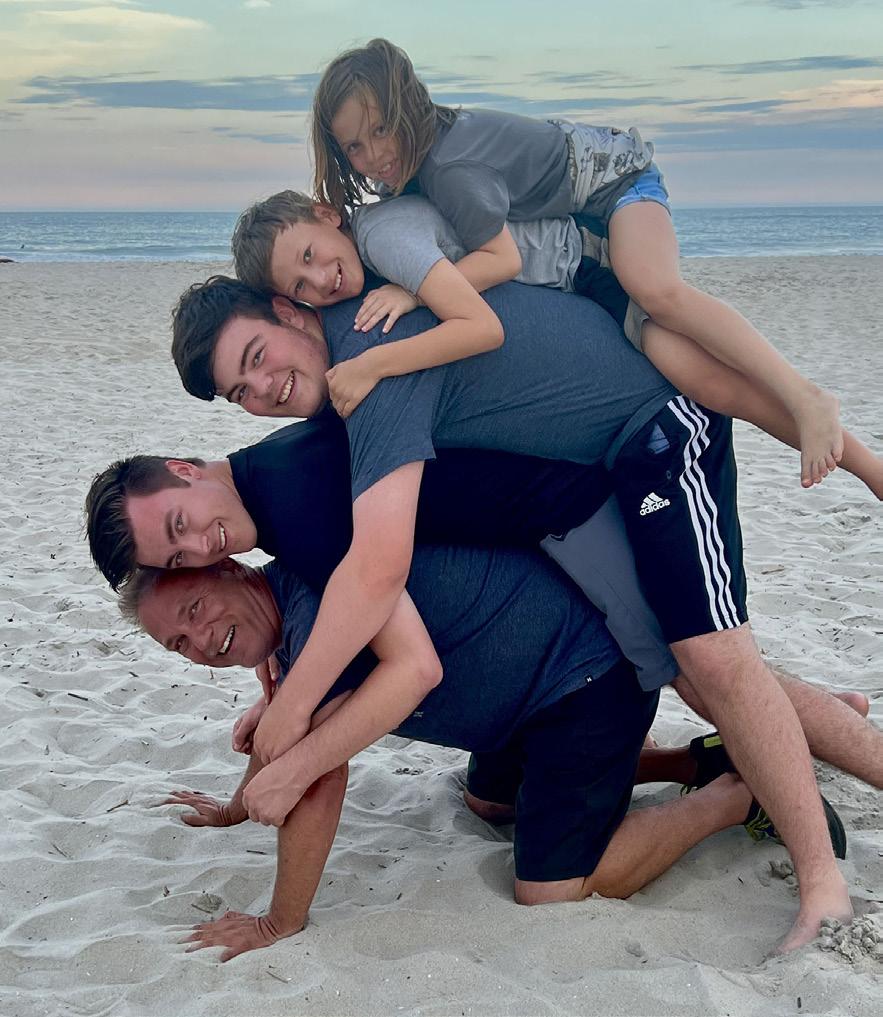

Regarding your comment on being in flow, what is your definition of flow?
Energy flow is everything. It’s who you are authentically. We are all born this way until we get programmed and conditioned by our leaders and thoughts based on fear, doubt, and limitation. There are many things on my resume because I believe in abundance.
And I live it. It’s not just something I’d say, “Oh yes, I wrote a book.” No, I live daily with “You’re not going to label me and put me in a box.” For example, I came up with a food concept, and I am a comedian. Now working with one of the most prominent chefs in the world, who is partnering with me based on something I had envisioned. So, I went with the flow with my creator, whom we tap into; it’s filled with potency.
What inspired you to start Laughter Heals Foundation?
This might sound funny but during my Lovemaster days, several people told me that they couldn’t conceive a child, and after seeing my show they went home with the husband acting like my character The Lovemaster. I would later hear that they then conceived. And when my friend Michale “Golds” Goldberg and I were filming the movie, he said he and his wife were also challenged so he tried it, and baby Kayla was born.
Michael and I first bonded with our Philadelphia roots, and the love of comedy, our connections with friends, and creating the “family” that we were not born into. Needless to say, we forged a very deep friendship that evolved into our chosen family, creating a tight-knit and supportive circle.
When Golds announced he had brain cancer, that moment was transcendent for me. Contemplating my options, I recognized urgency and commitment were vital. This became my “aha” moment or in my case perhaps a “ha ha”
moment. The question arose: Is laughter truly the best medicine? While I lack professional qualifications, I can attest to the transformations that occur when I make people laugh. There’s a visible and palpable change. It struck me that I might utilize laughter to help my friend.
I worked on creating ways to use humor with people to assist their healing process. I was motivated by the people who were going through illnesses with Guided Laughitations, (another exercise I created as a combination of meditation and laughter) to help relieve symptoms in the healing process. Comedy is individual, and so is the healing process.
Gold showed up to participate. One prescription was to share favorite comedy shows. Letting go of the fears that were being offered by the medical experts. When I would see him laughing in the audience, it warmed my heart. We laughed at how many times we said goodbye. He lived way past the 3 months prescribed by these “experts.” Instead, he lived 15 years, and got to know his daughter.
When Golds died, we gave him a FUN-eral. We ripped on him, and everyone would laugh and cry. We expressed our sorrow and showed how much we loved him. That’s what I believe healing is all about. We should be more expressive with our feelings, let people around us know we love them. Imagine we made that our stamp and our legacy.
How has your personal life contributed to your growth and healing?
If you want to go deeper, you’ll find yourself. This is something I did to the maximum. Such transformation is taken. It’s not just the word transformation people banter about. This is a literal transformation: I’ve had healings with my mom. We only spoke for six years.

Craig utilizes these eight LAUGHTER principles within his keynote speaking engagements and coaching sessions.
L - love
A - acceptance
U - unique
G - gratitude
H - humility
T - truth
E - ego
R - reboot, refresh, rejoice

I was bleak. I was done. I’ve done everything I can. Then, I got into this real state of radical acceptance and gratitude for who she was and what she gave me. She has an enormous sense of humor, and how look at all the money I made being funny. We have the most significant relationship; she could still say something, pushing buttons.
She can still do all that motherly stuff that they do. And it doesn’t matter. It is meaningless; It is just her being her, and it is all OK.
And that radical acceptance because I made this new space. She is safe now with me. Another word I like to use is magnificence.
And I can’t wait to talk to my mom now. These are the experiences I have. How did I get there? It’s from not living in these boxes that you were talking about. Just live in the infinite. And how beautiful is that? That’s what we’re meant to do.
How do you ensure you do the right thing when dealing with people who upset you? Have integrity, but integrity and accountability are lost art forms. All I know is that my process has been beautiful in being accountable, really looking within, and making sure that I find my own faults and not the faults of others. Even if my fault was that I didn’t vet the process, then that’s my fault.
Let’s talk about your course Winning with Laughter, it has exciting and unique modules. Why did you create it, and what are the expectations of people going to get?
Everything that I do comes out of life experience. I will tell you something I have gone through myself, and here are the results. I’m going to share that with you. It’s like sharing grapes. I have these delicious grapes that I find delicious. I
will share them with you. It’s your choice whether you like the grapes or go for the grapes or not. I share these life experiences with people and can’t say anything about what they do with it. You asked me about homework. I call them FUNsignments. Words have a lot of meaning for people. That’s what happens also when you laugh. We have joy, and it is such an amazing experience again that I’ve seen how people have transformed before my eyes by doing some of these things.
Is that why everybody loves laughter yoga?
Yes, but it goes further. I teach a form of that I call de levitation. You could meditate here to levitate. And you end up levitating. It’s like a bullet train to your higher source, God, light, or whatever you want to call it. Once you laugh, everything’s removed; all your fears, doubts, worries, diseases, illnesses, and pain are relieved when you’re laughing. Depression and laughter can’t exist in the same space. So whatever you’re doing, it is through comedy, and again, you are telling your story in many ways.
You have speaking engagements and courses, write scripts, produce movies, and have your own parts. How do you manage it all?
Yes. I’m doing a TED talk this weekend. I do have a team and people loyal to the team.
Lastly, how do you define yourself in three words and/or your life mantra?
Love, light, levity. I am those things. We all are. I like your word, amplify. I amplify, share, and present it to whomever I’m with, whether it’s a large crowd or one other person if I can be those things and live my life in this light with great love, divineness, levity, and laughter that I win in my life.

Energy flow is everything. It’s who you are authentically. We are all born this way until we get programmed and conditioned by our leaders and thoughts based on fear, doubt and limitation.


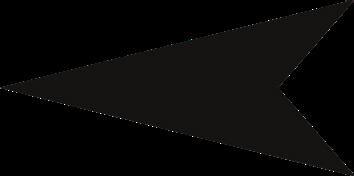
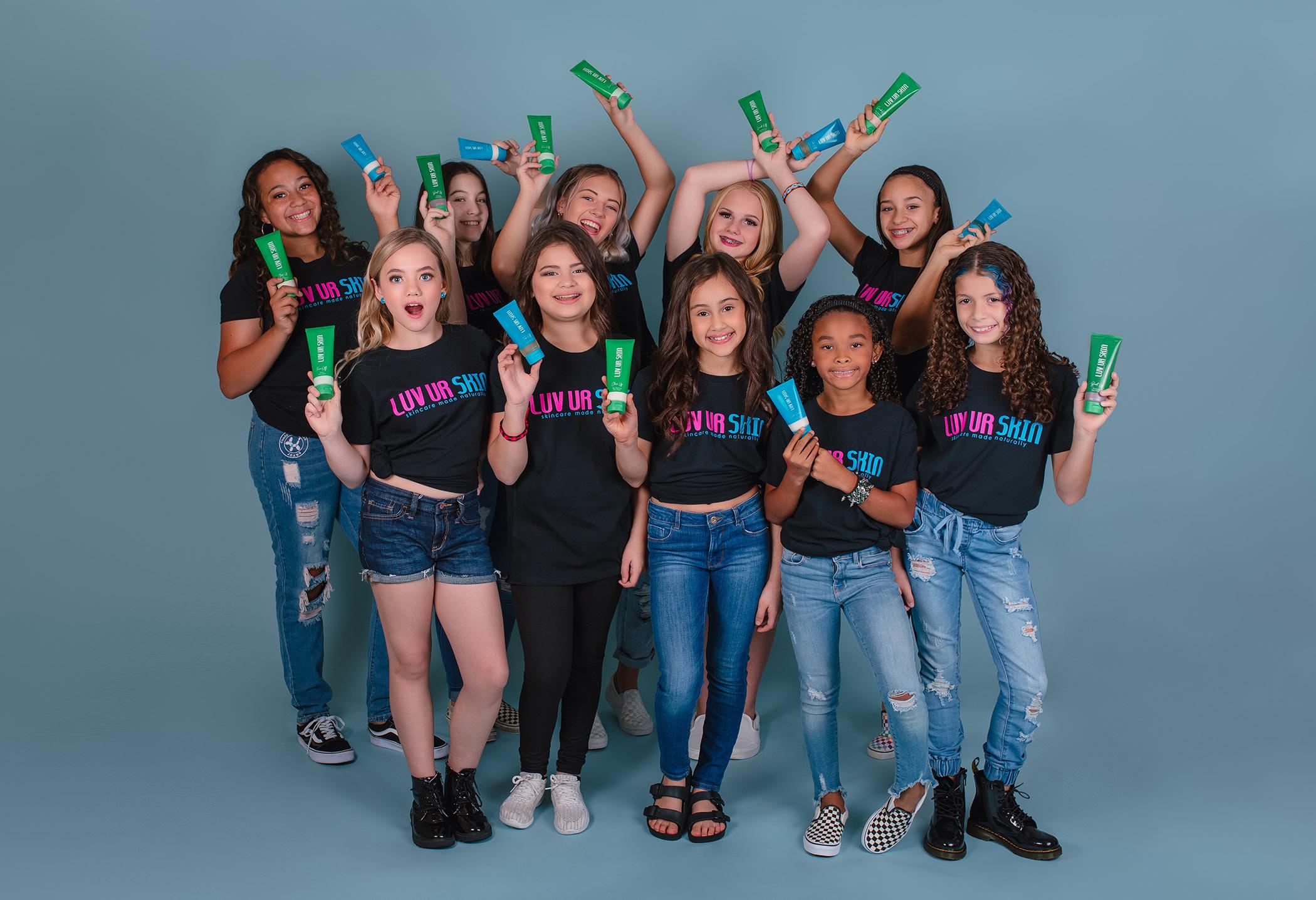


is made Naturally
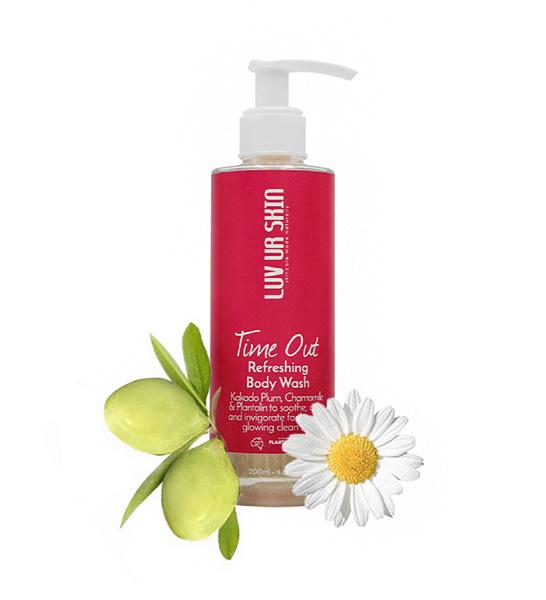
Creating natural skincare for teens and tweens young, sensitive skin. We believe that beauty begins with a positive lifestyle as we celebrate diverse beauty and bringing out the best in everyone.
Luv Ur Skin (LUS) offers tweens and teens the best natural skincare bundles. A brand from down under that speaks to this generation from a place of honesty and relatability, LUS has everything to do with its teen founder and her solution for acne-prone and sensitive skin.

Izzi Dymalovski launched Luv Ur Skin when she was 13 years old. While dealing with her skincare issues and searching for the right products, this go-getter put her trust in nature and a powerful native Australian plant extract, Plantolin, to give others her own age a better way to address their skincare needs gently. It’s the hero ingredient in all of their products.

We believe in loving, e mpowering and r espective each other and the environment, by using natural whole ingredients.

Today, Izzi goes beyond the ‘GRWM’ skincare videos. She recognizes how to care for her skin by turning to nature for ingredients, helping all skin types, including sensitive skin. If you have a skin problem, Luv Ur Skin has the solution! Everyone deserves to be comfortable and confident in their own skin.
With 85% of teens dealing with acne, Luv Ur Skin is a terrific natural solution that’s green, clean, and not mean.
Simple products with effective ingredients make it easy, so tweens and teens can focus on their skincare yearround. The brand provides the best natural skincare solutions for your skin.

Beauty begins with a lifestyle of positivity as we celebrate diverse beauty and bring out the best in everyone. They believe in loving, empowering, and respecting each other and the environment by using natural and whole ingredients.




I’ve always been fascinated by what happens—or doesn’t—when I sit down at my desk with pen and paper and the intention of writing. When I was younger, and my emotional life was more volatile, writing was urgent. It is still an essential need and desire, but over time, I’ve come to experience writing quite differently. Over time, I became obsessed with learning through the body, which began for me on the aikido mats and continued with committing to the study of somatics at Strozzi Institute, where I became certified as a master somatic coach.
Aikido practice led me to somatic learning and teaching. All along, I kept writing my poems. The more I engaged in somatic work—with myself and then with others—the more I began to see the difference it could make in terms of my own and others’ creative lives. One major aspect of somatic learning that is both simple and profound is the concept and practice of centering. Most of us have some exposure to what it means to “center” ourselves. But what you may not have considered is what a difference this could make to your writing.
I always remember the admonition of my aikido sensei, which was to “do everything from the center.” At the time, I was just beginning my exploration of the physical center of my body, and yours: the hara. I remember my sense of puzzlement when I considered what it would mean to drive from center, a scary proposition at first! But as I found myself more and more able to settle deeply within and to feel that center, I began to understand the relationship between moving from hara and living from hara. And that knowing came from many years of practice—on the mats in the aikido dojo, yes, but also “on the mats” in my writing studio and, of course, in my life.
When we begin the practice of centering, it can be disorienting. We’re learning to move differently, to place our attention differently, to let go of old ways of being. It’s a little like learning a new language. So, we have to find ways to help ourselves grow in the direction of becoming more aware. And as we become more aware, more options open to us. We begin by centering in and through our bodies. As we practice, we see the fairly immediate effects centering has on our ability to perceive. We begin to understand what the center is in our own body. We let ourselves feel the difference that center makes to our writing, yes, and to our daily lives.
When we center ourselves physically, we’re bringing our attention into the realm of sensation first. We stand and drop our breath into our hands, relax our knees, and relax any tendency we might have to grip or hold. We let ourselves feel how the force of gravity holds us on the earth. We take the time to be held by this force, which we usually take for granted. Although we can tend to close our eyes when we get quiet and start to pay attention in a new way, experiment with keeping your eyes open. This tends to keep our attention both inside ourselves and outside ourselves. We want to build our center as we face into the world as well as into ourselves.
Once settled in this way—relaxed but not slack—begin adding to your practice of centering in this way. Feel into these dimensions, one by one, building awareness as you go. First, feel your length—the way your body occupies the vertical plane. Feel your spine and the spaces between your vertebrae. Both exaggerate and then relax different areas of your length, all along the vertical dimension. You might lift your head higher than you usually carry it; let yourself feel space in the cervical spine, too; let your torso stretch itself up; let your legs elongate, even if only imaginatively. Keep breathing into your length, feeling both uplifted into the sky and grounded by feeling your feet and the force of gravity holding you.
Once you’ve felt into your length for at least a minute, start to energetically feel your width or your breadth. You might want to hold your hands at your sides but open them palm-up, which will expand your shoulders’ width and open your chest a bit more. Extend your energy to the right, then to the left of your body. Always bring in curiosity—is it easier to extend on one side of your body than another? Just notice. Your curiosity might start to bring up questions about why you can or can’t feel your width. Let these thoughts go and drop back into sensation—what does it feel like to expand your energy to one side, then the other?
Next, you will add the dimension of depth. Keep feeling your length and your width, but now also feel the field in front of you and the field behind you. Settle again and feel into front and back some more. You might notice what happens to your length or width as you do this. Or you might not! Again, curiosity is your guide. Let sensations come and go. Keep feeling. As another aspect of depth, now feel into the deep insides of your body—check in with your heart, your gut, the centerline of your body. Just notice.

Finally as you allow yourself to feel all the dimensions—length, width and depth—add in what it is that you care about. Right here, right now, what is most alive for you? Whatever arises, let that be your answer. Let yourself feel like you are in this newly centered state, besides what you care about.
Once complete with this practice of centering, walk around your house or yard, just letting yourself feel what it is to come into yourself in this manner. What difference does centering make to your feeling-thinking self? Again, be curious and let yourself have your own experience. Consider what has come alive in you now that was only a glimmer before.
It can be such a powerful move to simply drop our attention into our bellies, into our hara, and to move from there. Hara is much more than physicality. When we drop our attention from our (generally) all-powerful heads, it’s as if we’re acknowledging that there is another intelligence within us. As if on cue, that intelligence comes alive and begins to speak to us! As we begin to live more and more from the physical center of our bodies, we begin to experience what it’s like to feel a new kind of balance in ourselves—not only physically but intellectually, emotionally, and spiritually, too. The Japanese see the belly as a source of knowing and have elevated the concept of harm to an art form: haragei, the art of living through the belly. Haragei echoes the value of developing a sixth sense, which allows you to know another’s move or thought because you feel it. With haragei, the Japanese might say they exchange thoughts and feelings from one belly to another without words. This belly-to-belly quality means we know another through feeling into our own hara and then feeling into theirs.
When we access our hara, we sit more deeply in what we are, which settles and quiets our more frenetic, achieving natures. Rather than getting caught up in others’ opinions or in ambition or worry, we are left with only the present moment. We become more able to connect with what
is emergent, with what wants to live through us. We increase our ability to see and feel what is outside and beyond ourselves—including new ideas and expression. When we’re deeply seated, we have access to what is beyond us.
The Center has its own intelligence. From a centered presence, we know what to say. Doubt tends to ebb away. Our thinking self quiets. From center we are more decisive. Being in a centered state can lead us into a clearer, fearless means of expressing ourselves. Center also gives us access to deeper, wider, more inclusive listening. When we’re centered our peripheral vision opens, and we make ourselves ready for whatever arises. From center, too, you’re settled enough to see anew what you want to create.
Center is a connected place—both within ourselves and outside of ourselves. From centered presence, a state that is alert, attentive, focused, clear, without agenda, open, connected, and alive to what is--we can allow language to arise. Feeling into the dimensions of center can allow us to know ourselves anew and create from this newfound sense. In the dimension of length, as we experience “being longer”, we might even feel our “be-longing” anew. We can feel a sense of our own dignity. In the dimension of width, we might feel how we are able, or not, to include others in our attention. We can be curious about how increasing our width might also let us increase our ability to be inclusive. With depth, we feel the core of ourselves and, next to that, our histories and our longing.
When we’re centered, we’re the most authentic and the most trustworthy we can be. Present to ourselves and to the world that surrounds us, we’re ready to receive whatever is being offered and able to connect deeply with what is inside us and around us. We open our chests and lift our heads, feel our feet on the ground, feel our gravitas, and move into the world and into our writing from this newfound state of openness and connection. We write what we must write.
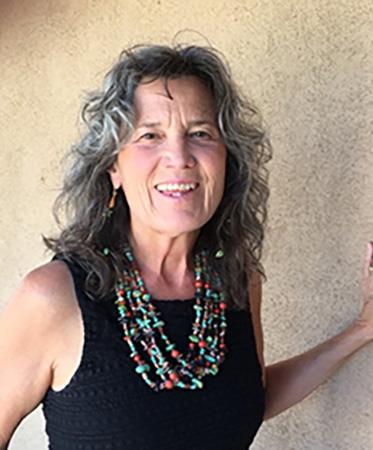
Renée Gregorio’s poetry is informed by the expansive landscape of northern New Mexico as well as by journeys to Cuba, Vietnam, Laos, Thailand, India, Bali, the Himalayas, Italy, and Greece. In her work it is evident that she loves foreignness as well as form.
Her long-time practice of the Japanese martial art aikido taught her what it means to occupy form through the body. Her poems emerge from the blood and heart of the every day as much as from her travels.
With a few like-minded others, she founded and edited The Taos Review, one of New Mexico’s foremost literary journals.
At present, Renée is a co-founder of the publishing collective Tres Chicas Books alongside Joan Logghe and Miriam Sagan. Their collaborative book, Love & Death: Greatest Hits, won the New Mexico Book Award for poetry.
Besides publishing many volumes of poems over the past four decades, Renée has worked as a freelance literary editor, a proofreader and drafter for the state legislature, a writing teacher, and a somatic coach.
She’s taught poetry around the state and served as a visiting professor at Colorado College. She and her husband, John Brandi, led a course for San Juan College students in Chiapas, Mexico, on crafting poems from travel.
Try these mindful methods to SNAP out of stress and into calm
By Julie Potiker Photo by AdobeStock
Photo by AdobeStock
Any time we pay attention to what we are thinking, feeling, and doing in the moment, we are practicing mindfulness. When we practice being present, observing, and accepting our thoughts and feelings without judgment, we give our overworked nervous systems a break.
With the constant news of war and political strife that dominates our news and social media, it’s no surprise that we may experience uncomfortable emotions such as fear, frustration, anger, and worry.
One reason we have survived on this planet for so long is that our brains have adapted to constantly consider “what if” scenarios. But in modern humans, “What if a lion is in this cave?” has been replaced with a never-ending drumbeat of fears, from worries about gun violence and global warming to anxiety stoked by another divisive election.
Ages ago, checking to see if a man-eating feline was in the cave before we entered had real benefits for our survival. But today, constantly ruminating on things over which we have little control creates chronic stress that can harm our health and sap our joy in life.
Fortunately, there’s a wonderfully simple tool we can use to break the cycle of stress and refocus our attention on what’s most important to us. That tool is mindfulness.
Any time we pay attention to what we are thinking, feeling, and doing in the moment, we are practicing mindfulness. When we practice being present, observing, and accepting our thoughts and feelings without judgment, we give our overworked nervous systems a break. This calms the amygdala, the part of the brain responsible for processing fearful or threatening stimuli. By reducing the flow of stress hormones in our bodies, mindfulness also helps reduce inflammation and boosts the immune system.
Here are some mindful methods you can practice throughout your day to help you stay calm in the chaos:
1. Get outside. Spring and summer are a great time to enjoy all the health benefits that come from being in nature. While you are out there, notice sensations such as the temperature of the air and the feeling of the breeze as it touches your skin. Notice any smells as you inhale through your nose, and really look at the sights — leaves, flowers, etc. While you are noticing all these sensations, you are not ruminating and worrying.
2. Walk mindfully. Whenever and wherever you walk, pay attention to the soles of your feet as they meet the ground, the rhythm of your steps, your breathing in and out, and how your arms feel swinging at your sides.
3. Practice mindfulness while brushing your teeth or taking a shower. Slow down and enjoy the sensations of the moment.
4. Take time to eat mindfully, savoring each bite and focusing on the flavors of your food and drink.
5. Meditate. Download the Insight Timer app and pick a guided meditation to do every day. Insight Timer now has over 100,000 meditations, but don’t freak out — they are organized and searchable by length, topic, and author. I’ve got a nice collection on there, including ones on Giving and Receiving, Compassion and Loving Kindness, and Letting Go, which are good for emotional wellness. Try a few and pick the ones that speak to you and fit your schedule.
6. Practice taking in the good. Just like mindful eating or walking, this means savoring the beautiful moments of your life. Whenever you experience one, really take it in for a few breaths and relish it. The more you do this, the more you will rewire your brain for happiness.
7. Be in the moment with your favorite music. Make a playlist of songs that move you, and play them to give yourself a boost when you need it.
8. Practice the Sending-Receiving Meditation. This is a great mindfulness practice to use when you experience moments of strife in your own life or you want to support those around you. Breathe in the pain; breathe out goodwill. Breathe in the chaos; breathe out peace.
9. Try calling yourself “sweetheart,” “dear,” or another term of endearment.
10. Engage in Loving Kindness Meditation for yourself and others. Combining mindfulness with self-compassion is a great way to soothe yourself and strengthen your emotional wellness.
As you may recall from my previous articles, I developed a simple method called SNAP to help people regain their sense of calm and equanimity when they feel overwhelmed, anxious, triggered, exhausted or just plain stressed out. Remember the acronym SNAP to guide you through the steps. You can even snap your fingers to start the process!
S: Soothing Touch — When you feel stress, place your hands on your body wherever you find it soothing. It might be your chest, your belly, hugging your upper arms, or cradling your face — experiment to find what works for you.
Or put your hands on any area where you feel constriction and envision a warm compress or warm oil softening the tension. Soothing, supportive touch releases oxytocin and endorphins that help calm your nervous system.
N: Name the Emotion — Name what you are feeling right now. Is it worry? Sadness? Anger? Loneliness? This helps calm your body’s stress response, gives you time to locate it in your body, and puts some perspective between you and your feelings.
A: Act —
Ask: 1. What do I need to hear right now, then say it! 2. What do I need to do right now? Perhaps you need to take a few deep breaths, exhaling slowly to lower your blood pressure and slow your heart rate. Or choose any of the 10 activities listed above to give yourself a few moments of mindful calm and relaxation.
P: Praise —
Give thanks for the things you can do to help manage stress. Thank yourself for showing up day after day and trying to do your best. Thank the universe, or your spirit of choice, for giving you the strength and courage to keep going.
Practicing gratitude is another powerful way to break the cycles of negativity and stress we sometimes find ourselves stuck in and a comforting way to rewire our brains for happiness. So take some time each day to feel grateful for the blessings in your life, and don’t forget the strategies above when your emotional and mental health needs a boost.

Julie Potiker is a mindfulness expert with extensive certifications and teacher training in a variety of tools and methods, including Mindful SelfCompassion. Her new book is SNAP! From Chaos to Calm. Through her Mindful Methods for Life program offerings, Julie helps others bring more peace and wellness into their lives. Julie’s first book, Life Falls Apart, but You Don’t Have To: Mindful Methods for Staying Calm in the Midst of Chaos, is now available on audiobook.


Welcome to Our Contributor Writers’ Neighborhood
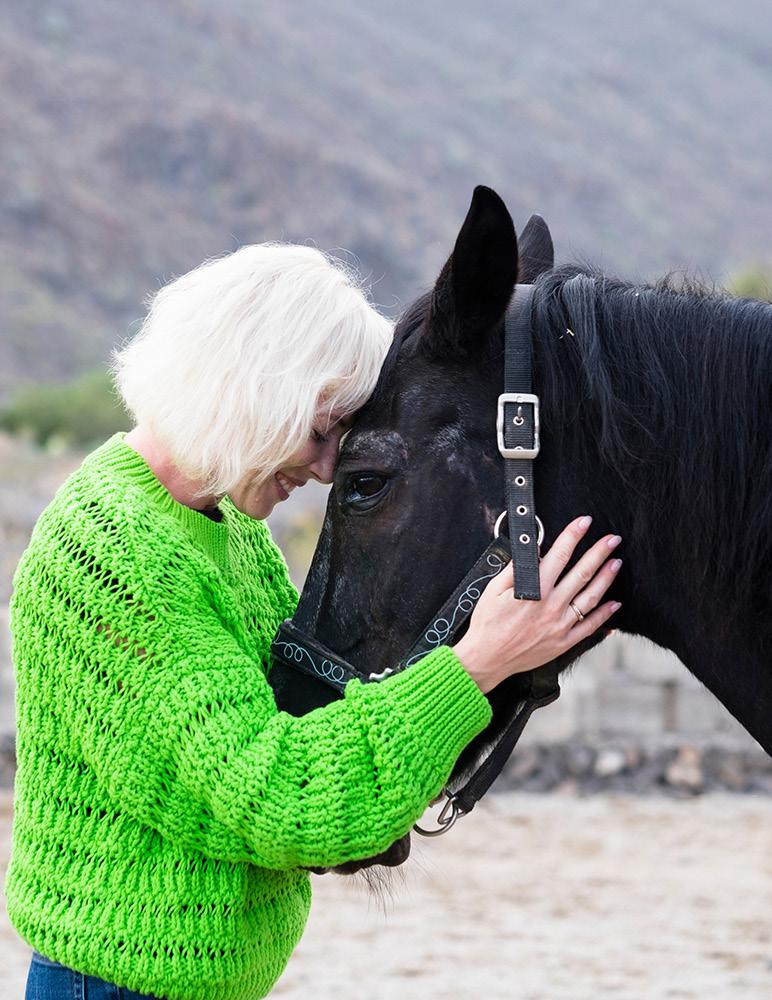
by AdobeStock
In honor of Mental Health Awareness Month, I’d like to write about the growing field of equine-assisted interventions (EAI) for self-development and mental health. According to PATH International, “Partnering with horses can have a major physical and emotional impact on people with a wide variety of physical disabilities, cognitive delays, or emotional challenges” (https://pathintl.org/benefits-of-eas/). The field of EAI began with a focus on “riding for the handicapped,” or therapeutic riding, as an effort to help in the lives of individuals suffering from physical and cognitive disabilities. In the 1990s, EAIs began their evolution into the fields of learning and psychotherapy.
The learning piece is designed with personal growth and development in mind and helps people in building skills related to creativity, problem-solving, decision-making, communication, leadership, and self-esteem. In my own EAL (equine-assisted learning) practice, I utilize a Jungian coaching model to help clients explore the more unconscious aspects of the self and integrate the learnings offered by the horses into conscious awareness. In my experience, both personally and as a coach, I see the horse-human bond through an alchemical lens. I view the horse as the alchemist that can help us catalyze what is dormant -the great potential of our human lifeinto a process of self-actualization and destiny-building. Different EAL practitioners focus on different areas of interest, such as leadership and professional development, alongside the many dimensions of self-inquiry. While most EAL practitioners hold credentials from reputable organizations that uphold standards and best practices, it is important to note that this is not a regulated field.
Unlike EAL, equine-assisted mental health (EAMH) requires someone who is licensed or under the supervision of a licensed mental health practitioner, working either alone, if they have equestrian skills, or in partnership with an equine expert. To give the reader a well-informed overview of the benefits of EAMH, I interviewed Rebecca Wara-Goss, LMFT, PhD, PATH Intl. CTRI and ESMHL, an EAMH expert who is executive director of Eudaemonia Equine Connections Inc., a 501(c)(3) non-profit in the Portland, Oregon area (www.equineconnections. org ). The mission of the non-profit is to provide EAMH treatment services, raise awareness of the benefits of this modality, and expand access to this type of therapy by offering affordable options for patients.
I started our conversation by asking Dr. Wara-Goss about the differences between traditional forms of psychotherapy and the equine-assisted model. She mentioned that traditional forms of counseling, such as Cognitive Behavioral Therapy (CBT), Dialectical Behavioral Therapy (DBT), Motivational Interviewing, and EMDR (Eye Movement Desensitization and Reprocessing), among others, are evidence-based practices. They have had enough research to earn the buy-in of the “powers that be” in the psychology treatment world of the United States, which transfers to the rest of the world. Dr. Wara-Goss says that “a major difference with equine mental health treatment is we do not have any evidence-based modality. It creates problems because it makes it seem like it’s alternative or like a CAM-type approach, which is complementary and alternative medicine approaches. It’s a little more fringe.” Dr. Wara-Goss also talks about the change that needs to happen to integrate equine-assisted mental health treatment into the mainstream science world and into the “science plus insurance” world to help cover services. She says that “essentially, humans have
this schema and this archetype that counseling is done inside while the client is lying on a couch and the therapist is sitting behind them taking notes. Now we have adaptable client-centered treatment approaches.”
My second question had to do with understanding what the horse partner brings to the table -what does the horse have access to that the human therapist may lack? Dr. Wara-Goss explains that “with a human therapist, there’s a lot of masking that we do. And humans tend to be, for the most part, very private when they have issues. It takes time to develop trust and rapport in traditional counseling because of that masking and because of the vulnerability involved.” Dr. Wara-Goss says that in her experience, “in traditional counseling, it probably takes five to six sessions before the client may start to feel the benefit of therapy and may start to feel a little more relaxed with the process.” In contrast, when it comes to equine therapy, she says that “because horses have the ability to just stir stuff up, the rapport can go a lot faster.”
When a person feels comfortable with a horse, they start to form an emotional bond and connection, and a story or narrative emerges. This therapeutic alliance can develop quicker with a horse than with a human therapist. Because horses are non-verbal, a deeper connection and understanding are required on the part of the client. Dr. Wara-Goss also remarked on something that probably most horse people intuit and the old cowboys and cowgirls have always known -you can’t hide when you are around a horse; you can’t mask it: “They sense it to the core of a human being. We have tons of extrapolation and ideas about why. Like, oh, it’s because they have a big nervous system or because they’re a prey animal, and we’re a predator on two feet with two forward eyes. There are all sorts of extrapolations as to why that is. But we don’t always have to know the
Integrating horses in therapy is a great way to bring the body into conscious awareness. The nature of our activities with horses is very “touchy-feely,” and just being around these big guys forces us to be aware of our own bodies.
why. It just it happens.” This idea that a horse can unmask us is very powerful, and this conversation brought to my awareness all the times in my life that horses have brought me and my clients into a place of authenticity. Horses can also be especially effective at providing a sense of safety during those moments of exposure.
In our interview, I asked Dr. WaraGoss to talk a bit about the use of equine-assisted interventions in the treatment of PTSD in military veterans, a population she has worked extensively with and which was also a focus of her doctoral research. In her experience, military PTSD (a term she created for her dissertation) is a unique and very intense experience stemming from two root issues. For one, there is desensitization of the individual and the development of a group or institutional mentality. The military mindset is all about “their buddies,” who now become their families -it is a system where it’s easy to lose yourself. Dr. Wara-Goss reminds us that PTSD can develop from combat and non-combat experiences, such as witnessing horrible things and survivor guilt. Secondly, as she says, “Many soldiers are tough; they are taught not to feel pain and to battle through everything. Just put your head down and battle through it. So, they are experts in masking how they really think and feel.” Although opening up too quickly can be a tricky situation, especially when the PTSD takes the veteran back to a lived experience, Dr. Wara-Goss says that the “super activation that horses do is a phenomenon of opening our hearts and healing the stuff that comes through, and that release can be pretty powerful.” Many times, veterans will also identify with the horse as their “battle buddy”, and they develop a great degree of caring for and bond with the horse.
Lastly, I asked Dr. Wara-Goss if there are mental health conditions that respond better than others to equine-assisted interventions. She noted that pretty much any condi-
tion can be treated when horses are involved, and she has had excellent results with those suffering from what she calls the “holy triangle” of trauma-anxiety-depression: “With anxiety, the goal is always to reduce the symptoms. And with depression, it’s always increasing mood and stabilization. And then with trauma, it’s a lot more complicated, but it’s going to be that combo, both of reducing hyperarousal but increasing sense of self, increasing positivity, and increasing healing in support of psychological wellbeing.” Dr. Wara-Goss also mentions that working with horses can be a very successful strategy to reach youth, who usually don’t respond well to therapy because they’re usually a mandated client. Regardless of age group, EAMH can be a great secondary option for anyone who does not respond or does not do well in traditional counseling.
And, of course, in this conversation, Dr. Wara-Goss and I touched on the important topic of somatics and how we hold experiences in our body. Groundbreaking research in the field of trauma, especially the work of Peter Levine and Bessel van der Kolk, has brought about the development of evidence-based, body-centered therapies as key to liberating and processing traumatic experiences. Integrating horses in therapy is a great way to bring the body into conscious awareness. The nature of our activities with horses is very “touchy-feely,” and just being around these big guys forces us to be aware of our own bodies. It is an excellent mechanism for improving our mind-body connection.
Lastly, I’d like to share some resources for our readers if anyone is interested in learning more about the benefits of equine-assisted mental health and learning options and the research behind it: https://horsesformentalhealth. org/how-horses-help/#why https://www.psychologytoday.com/us/therapy-types/ equine-assisted-therapy https://equineconnections.org/ resources/

Dulce García-Morman, Ph.D. is founder of Life-Is-Art Equine Assisted Learning & Coaching. She has facilitated learning and therapeutic experiences through the horse-human connection for the past 17 years. Dulce’s practice draws from different wisdom traditions and is strongly oriented toward a Jungian approach to the restoration of the authentic Self.For more information, visit https://life-is-art.us/
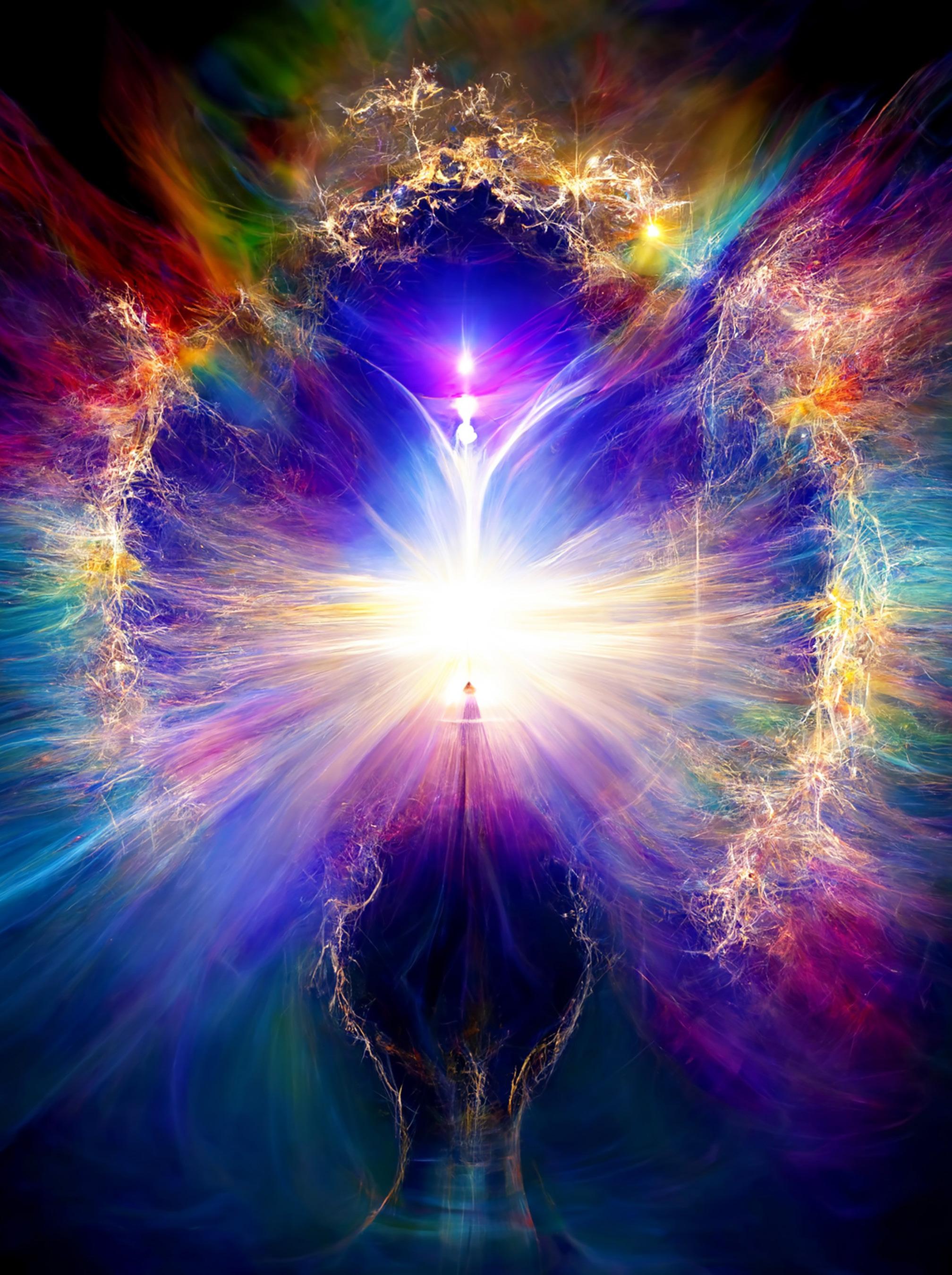 Photo by AdobeStock
Photo by AdobeStock
At every moment in our lives, we make choices that will either lead us closer to or further away from remembering the spiritual essence of who we truly are. When we choose to awaken our true selves, we ascend further into higher dimensional consciousness as we progress on the path of our spiritual evolution.
We have been in a spiritual evolution, as well as a biological evolution, throughout the span of space and time; that is, we have been evolving both spiritually and biologically. Our spiritual evolution is about growth of our being, the advancement of our souls, and the awareness and consciousness that resides within our spirits. Our awareness of who we are and why we are here is crucial to our spiritual evolutionary process while living our daily lives in awareness and consciousness.
Awareness is a term referring to our ability to perceive, to feel, or to be conscious of events, objects, or patterns. Awareness does not necessarily imply understanding nor does being aware mean that we are conscious. If we see a Coke can in a grocery store parking lot, we are aware that it is there. If we pick it up, bring it home, and put it in a recycling bin, then we are conscious of it.
People seeking their spiritual paths through awareness are curious about
themselves and the things around them. People with expanded spiritual awareness often become engaged in improving the welfare of humanity and the environment in one way or another. In the end, we will come to realize that if we expand our awareness, we can change our lives for the better on many levels of our being.
The greatest gift of living a life in awareness is knowing that our spirit never dies. We have absolute freedom to experience everything that life has to offer in all of its full glory. It is said that it is not the destination in life but the journey that makes us who we are. The trip itself is not about knowing but about experiencing. These experiences are our only purpose; they are what life is. It is in living each physical life and the experiences it has to offer that we advance in our spiritual lessons and our spiritual evolution. This is done through our awareness.
As we become spiritually aware, all things in our lives have an opportunity to change and evolve. The beauty of our spiritual evolution and spiritual experiences is that they are a doorway to unlimited new opportunities and new experiences. These opportunities and experiences are presented to us every day of our lives. Whether we choose to learn and grow from them is up to us.
Our ultimate goal in spiritual awareness is to align with a higher source and keep our vibrational frequencies at a higher level to help us live out our life’s purpose and find the special gifts and talents that we have to offer. Living a life in awareness can be done in many ways. Prayer, meditation, reading, and practicing good karma are all ways to help raise our vibrational frequency and awareness. By calming our minds, expanding our knowledge, and working on our spiritual lessons, we can bring ourselves closer to the spiritual mastery we are seeking to obtain with each life that we live.
Our awareness allows us to be treated as the unique souls that we are. We are all becoming more aware, whether we realize it or not. Awareness will make it possible for all life to blossom and for all of us to manifest our dreams, live our life’s purpose, and experience the life intended for all souls. By being aware, we ascend into higher dimensional consciousness and move forward in our spiritual evolution. In time, through awareness, unity will allow all life to stand with compassion, love, respect, and a value of wholeness and oneness. This idea is so simplistic in its value but seemingly difficult for us to execute. Through our awareness, we will be able to expand in our knowledge, grow in our wisdom, and become the enlightened beings we are capable of being.
Consciousness is another process in which we are participating in a spiritual evolution. As we sweep into the 21st century, we are becoming more spiritual, seeking divinity and knowledge of our inner worlds and looking for answers to the purpose of our existence.
Most of us feel that a higher power exists and that we are all
connected to a Divine source of some kind. Many of us in the world today are focusing on spiritual development and attaining enlightenment in growing numbers. We will soon come to realize through our consciousness that we all worship the same God in different forms and approaches, and we are all of the same essence. There will be a time when we recognize a great conscious awakening among us all, one where life will be lived without war and hatred but, instead, lived with love and compassion.
Consciousness is a difficult term to define because the word is used and understood in a wide variety of ways. What frequently happens is one person’s definition of consciousness is seen by others as something else altogether. Consciousness may involve thoughts, sensations, perceptions, moods, emotions, dreams, and self-awareness. Sometimes, it denotes being awake and responsive to ourselves and our environment in contrast to being unconscious and unaware. In the end, consciousness is about acting with our conscience. It is about physically making changes, however trivial they may seem, with thoughtfulness and compassion. All our decisions should be made with the consciousness of a picture greater than just ourselves.
In order to be in a place of higher dimensional consciousness, we must become fully conscious. This means stopping old patterns and habits that prevent us from living in heightened awareness.
One of the most common experiences of spiritual consciousness is the feeling of oneness. Oneness is often experienced as a feeling that everything is part of a whole or that we all come from one common source, share a common spirit, and are all connected. If we hurt someone, something, or the environment—we are only hurting ourselves.
We can all look back over the course of our lives and see that the difficult circumstances we have experienced were often a doorway to a new beginning or inopportunity our lives.
The spiritual experience of oneness is expressed by the perception that there is a level of consciousness that transcends our normal experience of what is good and what is bad. A person normally accepts good things that happen in life as well as bad things that happen. Through the unitary spiritual experience of oneness, we rise to a higher level of consciousness and come to understand that the difference between good and bad is not what we normally perceive. They are both beneficial to us in some way.
The bad things that happen to us in life serve a very important purpose: that purpose is to help us and the world around us with our spiritual evolution. If we look at challenging situations in our lives, we can understand that at the end of our life’s work, both our good and bad experiences are all for our highest good. Conversely, through the experience of spiritual consciousness, we begin to see that many things we perceive as good may not be truly good and may just be expressions of our desires, attachments, preferences, or karmic balancing.
We can all look back over the course of our lives and see that the difficult circumstances we have experienced were often a doorway to a new beginning or opportunity in our lives. If we can carry into our daily lives a consciousness that goes beyond good and bad, we will be able to operate from a more centered platform. This will enable us to make better decisions for ourselves and grow from our experiences as we see our world with greater and deeper insights.
Spiritual consciousness can be maintained on a daily basis by beginning each day with this thought: “Today my every word, thought, and action will be as my angels, guides, or higher pow-
er would want for my highest good.” This simple reminder will keep us conscious of our spiritual principles that we should be incorporating into our lives, such as the Law of One and the Golden Rule.
Our own consciousness is a reflection of the development of our spirit. Understanding the reason for our human existence gives rise to understanding why we go through various positive or negative experiences, why lessons continue to repeat themselves within our lives, and why we must learn to overcome our fears and resistances versus remaining a victim to ourselves and these fears.
The relationship to our own consciousness is a direct relationship to the development of our spiritual evolution. Our spiritual evolution is why we are here and why we have been coming back here over and over again. Living our lives in consciousness will always bring us closer to this process and our spiritual mastery.
Our world is ascending to higher dimensional consciousness, and we, as her children, must ascend with our Earth, or our Earth will make us change. Mother Nature will execute her plan one way or another in our ascension or shift. If we continue to ascend, we can avoid catastrophes, whether social, ecological, military, environmental, or others, which will force us to change with our world if we do not change with her.
The development of own awareness and consciousness has a direct relationship to the development of our spiritual evolution. We can arise and awaken within our consciousness our memories of all lives we have lived. We can arise and awaken to our true meaning and our true spiritual purpose. We can arise and awaken to the joys and wonders of this life and our spiritual evolution.

Nikki Pattillo graduated from Stephen F. Austin State University in Texas and began her career as a clinical and molecular biologist. As a child, Nikki was psychic, conversing regularly with her angels and guides, but it wasn’t until she was in her 30s that she accepted her gift. She is now an international author with Ozark Mountain Publishing. She authored Children of Stars: Advice for Parents and Star Children, A Spiritual Evolution, A Day in Spirit: A Spiritual Calendar for Teens, and A Golden Compass She has been featured on BRAVO and The History Channel and writes numerous magazine and newspaper articles to help raise awareness and consciousness of environmental and spiritual issues.
 By Polly Wirum
By Polly Wirum
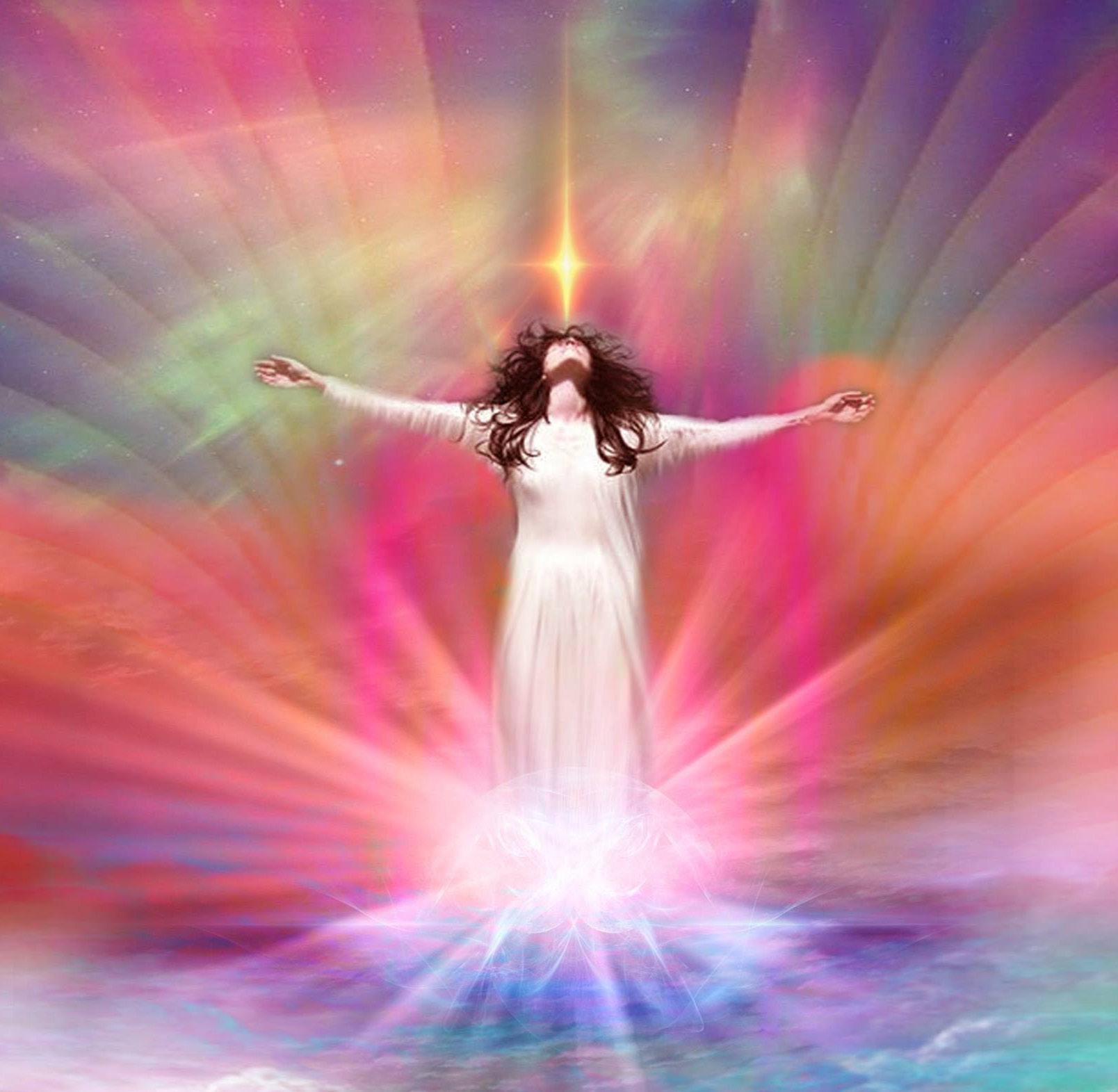
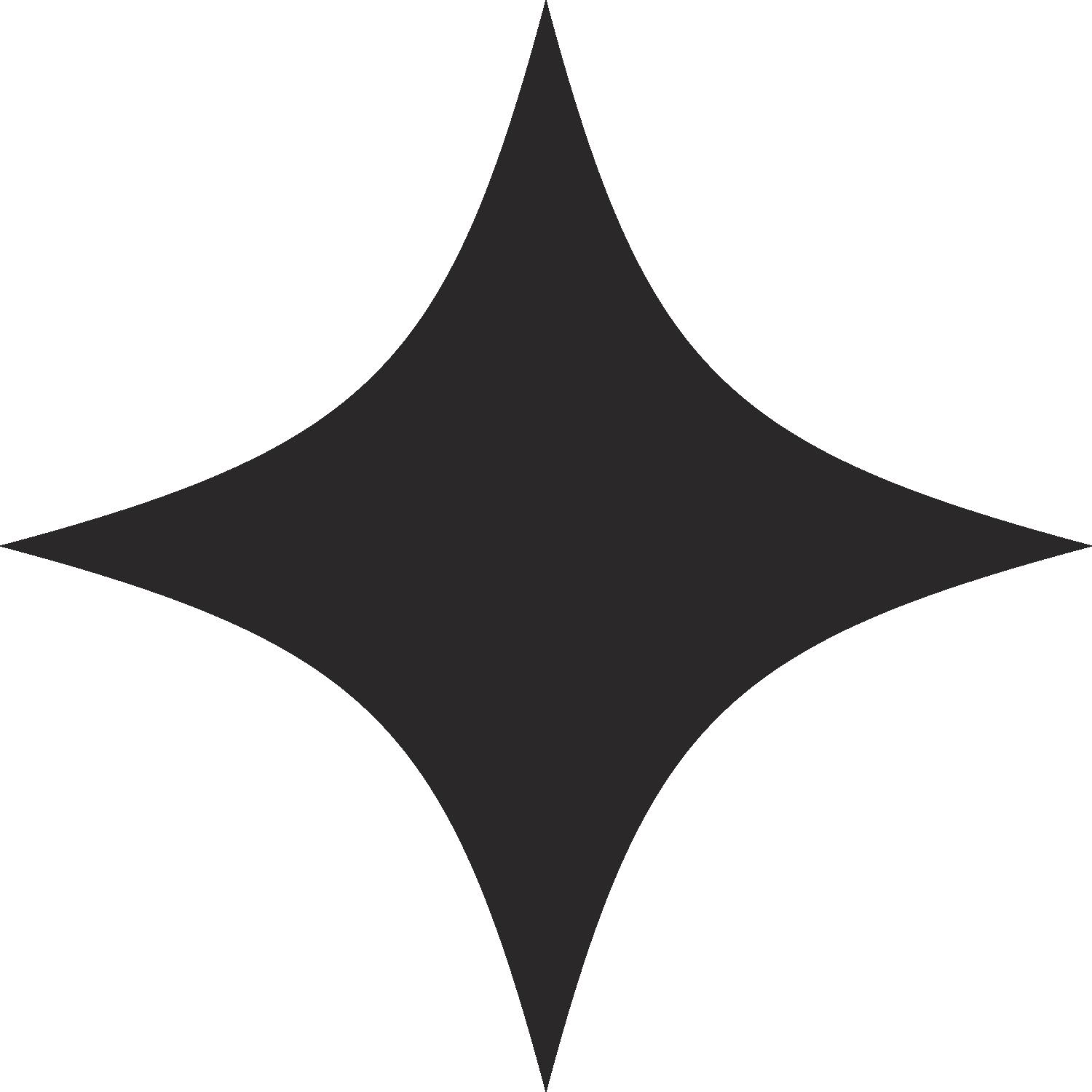
Most of us value good health. In fact, some believe our health is the most important thing in this life. This article creates an opportunity for you to check in on the complete system of your health and wellness.
I do not follow Hollywood or the rich and famous, but when Kate Middleton was recently diagnosed with cancer, it caught my attention. I felt humbled, maybe on behalf of humanity. I was reminded of our ever-changing physical form and that none of us can escape compromised health and eventual death.
We are a complex system! The state of our emotional wellness affects our physical wellness, and the opposite is true. The state of humanity and the Earth affects each of us, and the opposite is also true.
There is no part of us that is not connected to the whole! We need nutrients, water, oxygen, and shelter to survive as a singular human. From a bigger perspective, as a species, we need others to reproduce with and create a community.
Seeing ourselves as part of a limitless energetic matrix is key to our wellness. This concept affords compassion to everyone. The collective mindset also recognizes that what we put out into the world has an impact on us all, karma if you will. Hopefully, this helps us to move through life a little more thoughtfully, as we feel supported by the universe.
Check-In with Your Health and Wellness
Does your mindset recognize your connection to everything around you? Do you see yourself as part of a limitless matrix of eternal energy that is constantly evolving?
Explore different teachings that merge science and spirituality. Gregg Braden is a spiritual teacher who teaches this concept beautifully.
Do you have faith in a high power? Is it easy for you to pursue your dreams without controlling the way things come to form? Are you able to imagine there is more to life than what we see?
If your faith is wavering, explore different concepts of a higher power and see what resonates with you. Talking to a therapist or spiritual teacher can also help.
Are you able to live in the moment? This requires the ability to connect with the here and now while balancing the manifestation of your future. This is a beautiful balancing act of gratitude, connection, and curiosity.
Living in the moment takes practice. Therapy and spiritual groups can help you feel more connected now.
Is your lifestyle sustainable? If you move through life in a way that will eventually cause a break or burnout, you are jeopardizing your wellness, both physical and mental.
What can you remove from your life to simplify things and destress? If you do not slow down, the Universe will slow you down.
Are you physically strong and flexible? We may have limitations brought on by age or other circumstances, but we each can be our best version of strength and flexibility.
Find movement that helps you feel strong and flexible. This is different for everyone.
Are you emotionally strong and flexible? This is living with awareness of our connection, universal timing, and not taking everything personally.
Reach out to a therapist or another professional if you need help finding emotional strength and flexibility.
Do you feel safe in the world? This is key to creating a lifestyle that is not full of stress and other complications.
This is another great area for a professional to help you make choices that empower you.
Do you experience inspiration and joy? These are both indicators of your ability to tap into the magic of the Universe.
Do things that are a derivative of your inspiration. Join groups that offer what you want to explore. Remember you are doing this because you are curious, keep it simple and let one thing lead to another.
Do you feel empowered and recognize your ability to manifest? Having a sense of accountability and self-awareness is a key part of healthy manifestation.
There are many wonderful books on how to successfully manifest; you can also hire a life coach.
Do you feel connected to the network of Universal energy? Do you believe in other dimensions?
Join a spiritual group. Explore different spiritual beliefs. Talk about the possibilities of other realms. If this is a new concept for you, just stay curious.
Do you have some sense of a community?
This can be family, friends, or a spiritual group. People often find that part of their community is made up of friends from online groups and classes.
Do you feel loved? This can include self-love, support from a higher power, and individual relationships.
Feeling loved is a huge indicator of self-worth. If this is something you have been struggling with, find a professional that can help you connect with self-love. Animals are also great sources of love.
How often do you do things just for fun? This is actually a very important part of our health and wellness!
Create an opening every week for fun that has no agenda except raising your vibration.
What do you put in your body? Is it good for you and the planet?
Explore your food and drink. Is the planet or other life being compromised? Usually, the less processed and simpler a food is, the better it is for our world.
My wellness and life, in general, were brought into balance when I experienced a health crisis. Looking back, it was like a slow-moving pendulum that started an unstoppable transformation in my life. It was not an immediate reset of wellness. My journey began with a loss, which in turn created an opportunity for new beginnings. The biggest change was my spirituality, which completely shifted my Universal experience.
Wherever you are on your health and wellness journey, explore how you fit into the Universe What are you offering and what are you grateful for? Now really is the perfect time to create changes that allow both you and the collective to flourish in all ways.

Polly Wirum is a psychic, life coach, and writer. Years ago, she experienced a health crisis that led to a complete spiritual and life transformation. When she thought her life was crumbling, the universe was easing her grip on everything, distracting her from the truth. The healing helped her discover the beauty of a joyful and uncomplicated life. It is here that she connects with wisdom and magic. She shares this with her clients through life’s coaching psychic readings and spiritual retreats. visit Pollywirum.com

Is it safe, or is it something to fear?
As a Reiki Teacher who has practiced Reiki for over a decade and worked with people worldwide, I have answered these questions many times. In writing this article, I want to demystify some of the myths surrounding it and clear some misconceptions that energy healing may sometimes carry.
Every atom in the human body has electrons that carry particles containing electrical charge. Every cell and tissue is composed of energy. Together, they create what is known as the human energy field. Life force energy nourishes organs and cells in our body, supporting their vital functions. We are energetic beings.
Albert Szent-Györgi, the Hungarian biochemist who won the Nobel Prize in Physiology or Medicine in 1937, is known to have discovered Vitamin C and the components and reactions of the citric acid cycle. In his work at the Marine Biological Laboratory in Woods Hole, Massachusetts, Szent-Györgi stated during one of his 1971 lectures that “in every culture and in every medical tradition before ours, healing was accomplished by moving energy.”
We already know that taking care of our bodies through a healthy diet and physical fitness is as important as our mental and emotional wellness—but what about our energy? Do we need energy healing? Does it make a difference?
Considering that we are all energetic beings, taking care of our energy is essential to experiencing sustainable health. Research has shown that our bodies remember. Bessel Van Der Kolk, psychiatrist and author of The Body Keeps the Score, shares an incredible testimonial on how our traumas and emotional stress are stored in our
bodies. The body, the mind, and the soul are interconnected. Everything is.
Let me share my own experience with you all. Almost nineteen years ago, after becoming a mommy for the first time, I was diagnosed with a severe autoimmune disorder. I had days where I could barely hold my son or open a bottle. I had begun a rigorous medical protocol and followed everything I was told. After a year, I found myself not only suffering from pain each day but also living with the side effects of the medication.
In the meantime, I became more open to reflecting on my life and finding my answers. I started to realize that this physical pain was mirroring my emotional pain. My inner dialogue was negative, so no wonder a battlefield was happening inside of me. This is when my healing journey began. After seventeen years, I am grateful to share that I have been able to manage my autoimmune disorder naturally. Energy healing has been one of my most significant tools.
What is Reiki? It comes from the Japanese words Rei, meaning “universal energy” (universal consciousness), and Ki (Also Chi in Chinese or Prana in Sanskrit), meaning “life force energy.”
However, with many Western translations of Eastern wisdom, Reiki is a spiritual practice becoming lost and diluted. Since there are many branches and modalities are offered with Reiki, there are some misconceptions and miseducation surrounding the practice of energy healing.
Reiki can be explained as a gentle, non-invasive, natural energy practice that promotes self-regulation in the body. Reiki helps unlock the energy flow to restore inner balance, known as homeostasis
Reiki helps unlock the energy flow in our seven energy centers, known as chakras. The Sanskrit word chakras means “wheel” or “disk.” These energy centers are vortexes that store our thoughts, emotions, feelings, and experiences. They are connected to massive nerve centers in the body, and each energy center is linked to our major organs and our physiological, emotional, and spiritual well-being.
Our chakras or energy centers can give us a roadmap to experiencing the interconnectedness of our physical body, mindset, emotions, and energy.
Reiki sits on the Five Fundamental Pillars, which is why I explained it as a spiritual practice. It is not a technical method learned as a skill but a practice. Although it is believed that Reiki dates back about 2500 years, Dr. Mikao Usui, a Japanese Buddhist monk, discovered it in the 1920s.
Just for today, I will be at peace. Just for today, I will be a joy. Just for today, I will be grateful. Just for today, I will earn a living honestly and decently.
Just for today, I will show love and respect for every form of life.
The historical resources available on Dr. Usui’s teachings show that Reiki was taught as a spiritual path and a continuous journey to self-development and self-mastery. Reiki practice and meditation were taught to nurture a calm and peaceful mind. I often explain Reiki as a way of living or a daily practice. As perfectly stated by Lao Tzu, “Knowledge is a treasure, but practice is the key to it.” You can’t teach what you didn’t learn yourself. The healing journey is ongoing. There is no boot camp for enlightenment. Reiki should start with ourselves, practicing in ourselves, as well as healing, growing, and evolving.
Unfortunately, Reiki is often taught at the speed of Light in our fast-food, fast-paced society.
Most of the time, Reiki is taught in a few hours. Sometimes, it is offered in
an online bundle program where you receive all the levels simultaneously, and your training provides videos and certification or a piece of paper to validate the program. Sadly, these programs leave the students with no proper or fundamental knowledge. The practice is the foundation of our spiritual temple, and Reiki shouldn’t be received as a bundle all at once but should be learned and practiced, taking one step at a time. This is where we encounter the “overnight healers” phenomenon.
The lack of practice and guidance is evident, and over the years, I have encountered many people who had taken the training and left with little understanding of Reiki. I met many people who had taken Reiki training and couldn’t even explain the word Reiki. Some weren’t even taught to practice it, while others believed they were now gifted by the Divine and their guides, so practicing it wasn’t necessary because they saw themselves as powerful healers. These are red flags, and they are the source of miseducation and misconception. The Reiki training will not teach you about Reiki; it will teach you to practice Reiki. Your self-practice will teach you what Reiki is.
In our spiritual journey, there is no final graduation or diploma. After all, it is a journey, not a race, with no specific pace. As a Reiki teacher or practitioner, it is essential to remember the foundations of Reiki. We need to work on ourselves continuously to hold space for others and be a pure vessel. Practicing the five Pillars of Reiki each day can be challenging. In a world filled with hate and division, being peaceful and grateful every day is deeply rooted in our spiritual practice and our never-ending work of ourselves. As we heal our wounds, we vibrate at a higher frequency and can be a clear channel for others. Energy doesn’t lie. When working with others, people can feel it if we are not practicing and live in inner turmoil. Reiki reminds us that the ego must be parked when working with others, which, again, demands our healing and daily spiritual practice to be kept in check as we detach ourselves from the ego.

A crucial ingredient in offering Reiki to others is our inner work and spiritual practice, which some Reiki teachers dismiss during Reiki training. The focus seems to be more on the esoteric philosophy, which is interpreted differently by each person. It is almost as if some people need to add mysterious esoteric meanings to Reiki to be powerful or better received. Reiki evokes the memory within you that you are one with all that is. It is so powerful, isn’t it? Reiki taps into an unlimited supply of life force energy, helping us improve our health and enhance the quality of our lives at all levels, thus restoring inner balance.
Energy healing cannot hurt anyone or be used to manipulate or control anyone. It is an individual experience that restores and balances natural energy. Reiki is spiritually guided and is a powerful tool for personal development and self-mastery. In any way, Reiki can “play with your karma” or manipulate it. Reiki does not conflict with religious beliefs either. Sometimes, misconceptions or misinformation surround Reiki when mixed with other modalities, such as mediumship or tarot card reading. People are often promised a quick fix for their wounds and answers for their future or misled with the promises of cutting cords magically with their trauma and pain and being healed. Taking advantage of people’s vulnerabilities can leave them with tremendous pain, leaving them to feel skeptical and scared of holistic approaches.
Unfortunately, these occurrences have nothing to do with ancient wisdom like Reiki. More so, these occurrences point to the misguidance of individuals who need more understanding of what Reiki is. They are misusing energy healing to gain financial profit or to receive external recognition that they are divinely guided and highly gifted.
This is not energy healing! Reiki is not about curing or prescribing.
A healer is not someone who can heal you. A healer guides you and empowers you to connect with the healer within. We are whole. We may
be wounded, but we are not broken. Who we are is wholeness! Healing is about restoring health.
No one has the gift to heal you but you. You are the only person who has the power to heal!
It is vital to use discernment when searching for energy healing services or training. Understanding that you are responsible for your healing and acknowledging that no one else has the power to heal you are crucial in guiding you to the answers you seek. All is within you. Anyone who claims to heal your traumas, cure you, or have the answers you seek, please run away!
Just like anything we desire to improve, practice is essential. We must engage in daily mindful practices to fully receive its benefits and notice its impact on our health. We know that to have a toned body, we must exercise and diet regularly.
Well, these same principles apply to our spiritual side. To strengthen our intuition or psychic abilities, we need to start by connecting with ourselves, healing our wounds, committing to our inner work, unlearning and breaking down old thinking patterns, and purifying and aligning every level of our being with our selfpractice. Our spiritual practice will help us harmoniously align with our physical, mental, emotional, and spiritual beings to tap into our inner pharmacy.
It is a process, an ongoing journey, not an overnight transformation of sudden enlightenment. Energy healing is one of the most precious tools you can use to help yourself in your healing journey, and it certainly will support sustainable health.
Reiki can guide you to dive into the deeper causes of imbalance and unlock your inner magic.
If you read this article and have doubts about energy healing, I trust it will clarify and ease any discomfort you may have when trying this precious gift.
Love and Light,

Émilie Macas is a transformational holistic educator, Reiki Teacher and trauma counsellor, mindfulness and Chopra meditation educator, certified life coach, author, and motivational speaker. Émilie has owned a private practice for over a decade. She continues to empower others to adopt a spirit of raw truthfulness, guiding them to their inner wisdom and empowering them to connect with their inner pharmacy.
The dawn is rising above the horizon. No longer will moonbeams dance across the rolling sea. A mind transfixed, no longer drowning in the bliss of pure breath. One emerges as the morning fire prepares to penetrate the dragon’s lair while the flickering candle vanishes into the awakening eye. Lost are we humans to the tune of the pipers’ promise.
How and when did it all disappear into the mist? One’s life, in order to coexist in unison with the ALL, now functions from the in-between mainstream grey areas to maintain social acceptability. Is this a life worth living? Is this the promise of living in paradise has to offer?
Invisible we are.


Challenges will always remain your constant companion. Some will appear to have more than their fair share. Never be discouraged by making comparisons. This will only lead to positive understandings and failures.
This story could apply to anyone and is one of a false belief being real. How so? Hopefully, this might jump-start your investigation of a belief blocking your progress. A grown man of 50 years, successful, married, with a house and children, has, over time, kept his lack of self-confidence well hidden.
Could this also be you? If so, grasp this. His father is to blame, and this person has held this so close, held so deeply within his heart for over forty years, that it can never be let go. It has become the power source that has generated constant failures throughout his life and kept the story alive. This is the story, constantly regurgitated as a living truth, a belief so embedded that it maintains a container of misery existing as part of one’s stable foundation. Will this be passed on to the children? A resounding YES.
What happens when we consider this experience from a different perspective? This man was born with a lack of self-confidence. This is his life lesson; his father was just the trigger. This was his purpose in life: to overcome any challenge that made him less than a man. To rise above his experiences and become a leader among men in the corporate arena. Now, in 2024, this may also apply to you. His challenge is to forgive the father and himself in order to transcend past experiences and expectations. His experience around self-confidence never had any power over him; it was merely a mistaken mindset assumption. When we can’t see the trees for the forest, life delivers lemons, and all the while, life is offering us lemonade.
One can easily find when one’s life is stuck on past experiences by defining the results based on preconceived ideas and beliefs.
Who can say if they are true to reality, considering we have no idea of reality, only our particular versions, solely based on our choice of preference? Does this have an impact on one’s wellness, evolution, or lack thereof, and what about our relationships? Of course, you already know the answer.
When did fluff become real.
Is it possible to separate forgiveness and gratitude as we progress through our life’s challenges as an open SOURCE? Any time is a good time to clear and clean out past issues. Only after one takes action can the rewards, plus those opportunities waiting in the shadows, reveal themselves. Only then and there are we given the option to decide yes or no on how our future will unfold. First, are you even aware that options exist? Or is your reactions to past experiences still the guiding light ripping-off all of your tomorrows?
Within this world of constant change, forever remain grateful. From time to time, one may easily find themselves alone and standing on shaky ground. Realize this is only a temporary moment in a lifetime of moments. This never changes. What does is when “you” and “we” measure up and fire ourselves in order to move forward.
It is unfortunate that “men” have become the brunt of many fears that run through our society today. This is another form of segregation thatcontinues to blur any form of unity within our communities. A small percentage of this is true. A MAN is not a man; he is a male who upholds the law and, as a father, protects the family and does well in his community. He exists in every country on the face of this earth. He does not deserve to be thrown into the title of man!
Herd Mentality is a dangerous ship navigating without a rudder. For without their knowledge, humans can be steered in a direction without any knowledge of the ideas existing from an invisible human source, which has a completely different agenda. A given reason and logical way of being may carry secret consequences that may become one’s demise! The American dream, marriage, a house, a son and daughter, the dog, and then off to college appear to be slowly fading away into the never-never.
Therefore, if that old saying, “how you do one thing is how you do everything,” rings true, then resilience is an absolute behavior one must adopt to transcend daily challenges. To be strong for self and others when necessary is when the term “stand and deliver” checks on your morals, values, and virtues.
Challenges will always remain your constant companion. Some will appear to have more than their fair share. Never be discouraged by making comparisons. This will only lead to positive understandings and failures. Try this simple, effective remedy when pondering any negative thoughts. In your mind, just start singing the word, a-way, a-way, repeatedly. All will be well in no time at all, and you will have fun in the process. Just laugh to yourself and enjoy.
What we humans know about our life is so minuscule that one needs a microscope to see it. What lies for us in the long term is already sitting and waiting for us, unseen. It’s the Pied Piper story retold and relived over and over through the centuries; it never ever left us. Nothing has changed; we have, via our ignorance and the arrogance that false knowledge has bestowed upon us, unknowingly decided to remain as rats. The container you exist in is constantly being reduced
without your knowing. How has this occurred, you may ask, well you think you’re intelligent, you know stuff. It is exactly this intelligence that allows you to journey your story while being blindfolded.
And then as a gift you pass it on to your children.
Yesterday, one’s ducks stood neatly in a row; we knew who we were and how to navigate life. These days, some of those ducks have gone missing or have fallen by the wayside. I’m unsure what happened, but I’m still trying to catch up and keep up with the plan. The music carries one far off into the starry night sky, and as always, you, my darling, are forever as sweet as blueberry wine. Being aware and having the universe coming at you a thousand miles every day somehow knocks the wind completely out of you. Try as we might, for most of us today, life is not the walk in the park Lucille used to sing about. What should be said is right on the tip of my tongue, but I can’t find the correct words to express it socially.
What have you allowed?
Developing respect for the generosity that life has gifted you, and all of us have left the building many moons ago. Moving from knowledge to realization may just be the catalyst that will open those future doors beyond all that currently exists for you and only you. This may allow one to transcend beyond the self, expand far out into the outer realms of one’s existence, and not stay stuck within the container of all those accepted patterns while thinking, this is who I am.
When the wind blows, leaves begin to fall.
Transcendental Voyages: Roaming the World and Reimagining the Self
By Jan Wakefield, M.A.In the heart of Northern California lies a realm where time seems to stand still, where the whispers of ancient giants echo through the mist-shrouded canopy, and where the very essence of nature’s majesty unfolds in every rustling pine needle. Once a vast expanse of forest, the Redwoods are now a comparatively diminutive cluster of majesty that breaks your heart with the knowledge that they were overlogged without a thought for how long it takes these magnificent creatures to grow. The Redwood Forest is a sacred sanctuary of towering trees, a long history, and hidden gems of wisdom.
It was our yearly RV exploration of the West, and I was thrilled to rekindle my childhood fascination with trees by visiting the Redwoods. We’d passed so many wonderful places along the coast of California that I wasn’t sure the Redwoods could top the splendor of Big Sur or the cliffs near Mendocino. We arrived in the early evening and only had time to set up camp before we all drifted off to sleep within the cocoon of our silent campground. Not being particularly adept at sleeping, I was the first to rise the next day, and hiking in the forest was my immediate desire.
My family was still asleep when I quietly twisted the handle on the RV door, gently pushed it open despite the protesting squeaks of the hinges, and stepped onto the damp earth that gave just a little under my feet as the full weight of my body hit the ground. The light “click” of the door sounded too loud in the hush of the misty morning, and I paused to listen for rustling within. Silence. Tiptoeing away from the RV, I laughed at myself. The silence around me lured me into thinking I, too, needed to be quiet.
As I ventured into the forest, I found myself immersed in what appeared to be a massive herd of elephants standing perfectly still. Bursting with excitement, I ran to the nearest tree and threw my arms wide to hug it, instantly understanding the term tree-hugger and why people chain themselves in trees to prevent them from being cut down. I flitted from one trunk to the next, embracing each one. Life was pulsing through these trees, each with a distinct energy and personality. Amusingly, my arms could not even wrap one-quarter of the way around. Redwoods can reach two hundred to three hundred feet tall and have a diameter of up to 20 feet.

I set out to explore the forest’s hidden treasures. Guided by the dappled light filtering through the towering trees, I chose a trail that climbed steadily upward. I was still wearing my dimmed headlamp because the sun was not yet high in the sky. The sound of my breathing provided a cadence for each step; the wind rustled through the branches, and I felt as if I were completely alone in the world. About half an hour into the hike, I realized I had not seen anyone hiking in either direction. The treetops were getting closer, and I wondered if I would reach the canopy. I sat down on a flat rock to drink some water and to meditate.
The Redwood Forest is not merely a collection of trees; it is a living testament to the resilience of nature and the enduring spirit of those who have walked beneath its boughs. Only 5% of the Redwood Forest is still standing. Here, among these giants, every step feels like a journey through time itself. It takes about 20 years for a Redwood to grow to 50 feet, and the tallest tree in Redwood Forest is more than 300 feet. Redwoods have entire ecosystems in their branches, some never leaving the canopy, and the forest floor is home to myriad woodland creatures. Redwoods experience endless life cycles of those who call their forest home.

“
I ran to the nearest tree and threw my arms wide to hug it, instantly understanding the term tree-hugger and why people chain themselves in trees to prevent them from being cut down. I flitted from one trunk to the next, embracing each one.

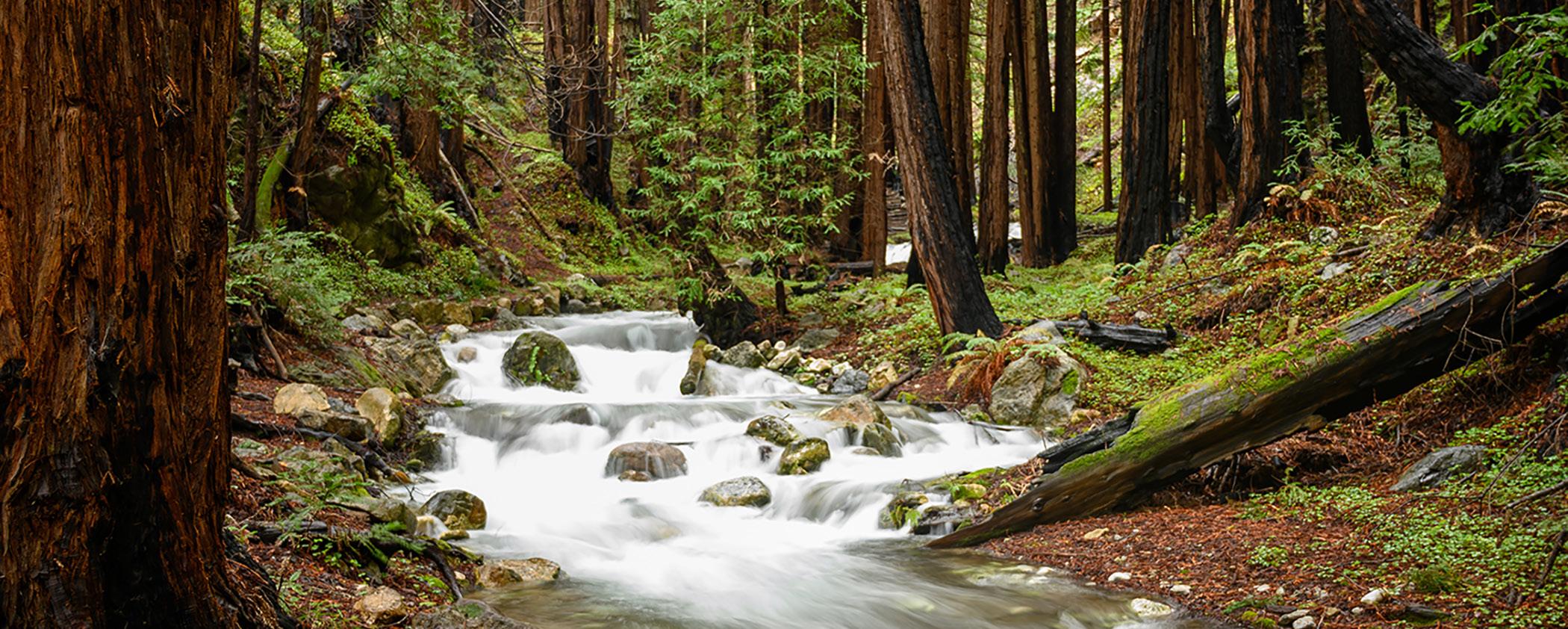
I opened my eyes, regained my sense of direction, and froze when my eyes landed on a beautiful mountain lion. It was utterly surreal. She was looking at me with the same curiosity as I had for her. I sat there blinking at the mountain lion and wondered what she was thinking. I felt peaceful and calm. Our eyes met, and we entered that place with time and thoughts that no longer existed. It lasted forever, and then, all at once, I wondered if she also had children nearby. Maybe she wondered the same thing about me. She averted her gaze and padded away. When she was completely out of sight, panic struck, and my heart instantly pounded in my ears. I carefully stood up and craned my neck to try to see where she went, and when I was sure she was gone, I headed back down the trail at a RUN. My only thought was that my children would be tremendously grateful if I did not get eaten by a mountain lion that day.
As a family, we spent our days exploring trails, searching for waterfalls, riding bikes, and enjoying ranger talks. We learned that Redwood trees date back to the time of dinosaurs; they are the tallest trees on the planet, and they can live for thousands of years. Some of the trees around us stood for over two millennia. According to the rangers, Redwoods rely on each other for survival, and it is believed they talk to each other. Here, among the moss-covered trunks and fern-clad forest floor,
we found ourselves humbled by the sheer magnitude of nature’s grandeur.
That evening, as the campfire died down to crackling red coals, the stars emerged like diamonds in the velvet sky, and I felt a sense of gratitude wash over me. Camping in the Redwood Forest was not just about vacationing with my family; it was about forging a connection with the land and its history and coming closer together in the absence of constant stimulation from the modern world. As I lay beneath the stars, I could hear the whispers of the trees talking to each other; their voices carried on the gentle breeze.
Reluctantly, we packed up camp on our final day in the Redwood Forest. I’d never seen my children so reluctant to get in the RV and move on to the next place. As we drove out, we talked about what it would take to plant one of these trees and watch it grow. We pondered how big it would be by the time they were grown up and had kids of their own. We talked about the devastating effects of deforestation and made a pact to sponsor forest renewal for our annual holiday donations. We watched the trees move by the windows. When we could no longer see them, it occurred to me that one of the greatest lessons we learned from the Redwood Forest was upon us. Silence. In those moments of silence and stillness, we connected deeply. We communicated without words, just like the Redwoods.
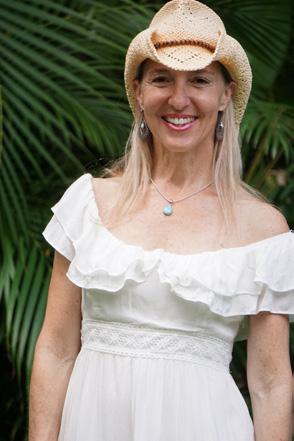
A lifelong traveler and educator, Jan Wakefield sees the world as a vast opportunity for expanding her understanding of the human condition.
For her, travel equals transformation. Jan’s passion for travel and decades of experience as a personal transformation coach are the foundation for her international retreats, where people release who they once were and embrace who they want to be through meditation, relaxation, and a gentle return to self.
In addition, Jan plans to visit all 195 countries in the world and share her experiences with readers and audiences worldwide.
For more about Jan’s transformational retreats and programs, visit http://jan-wakefield.com


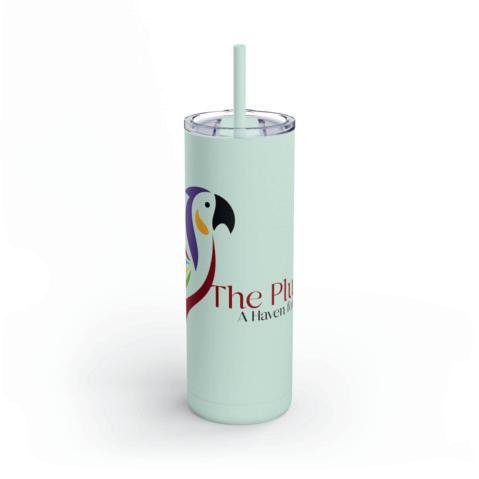

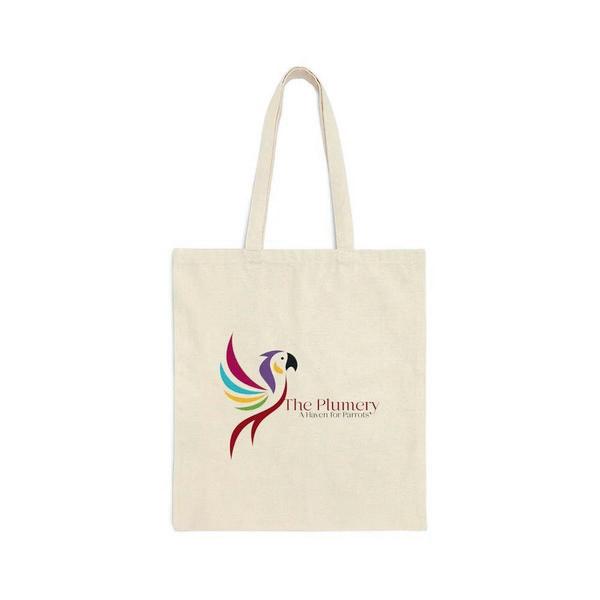


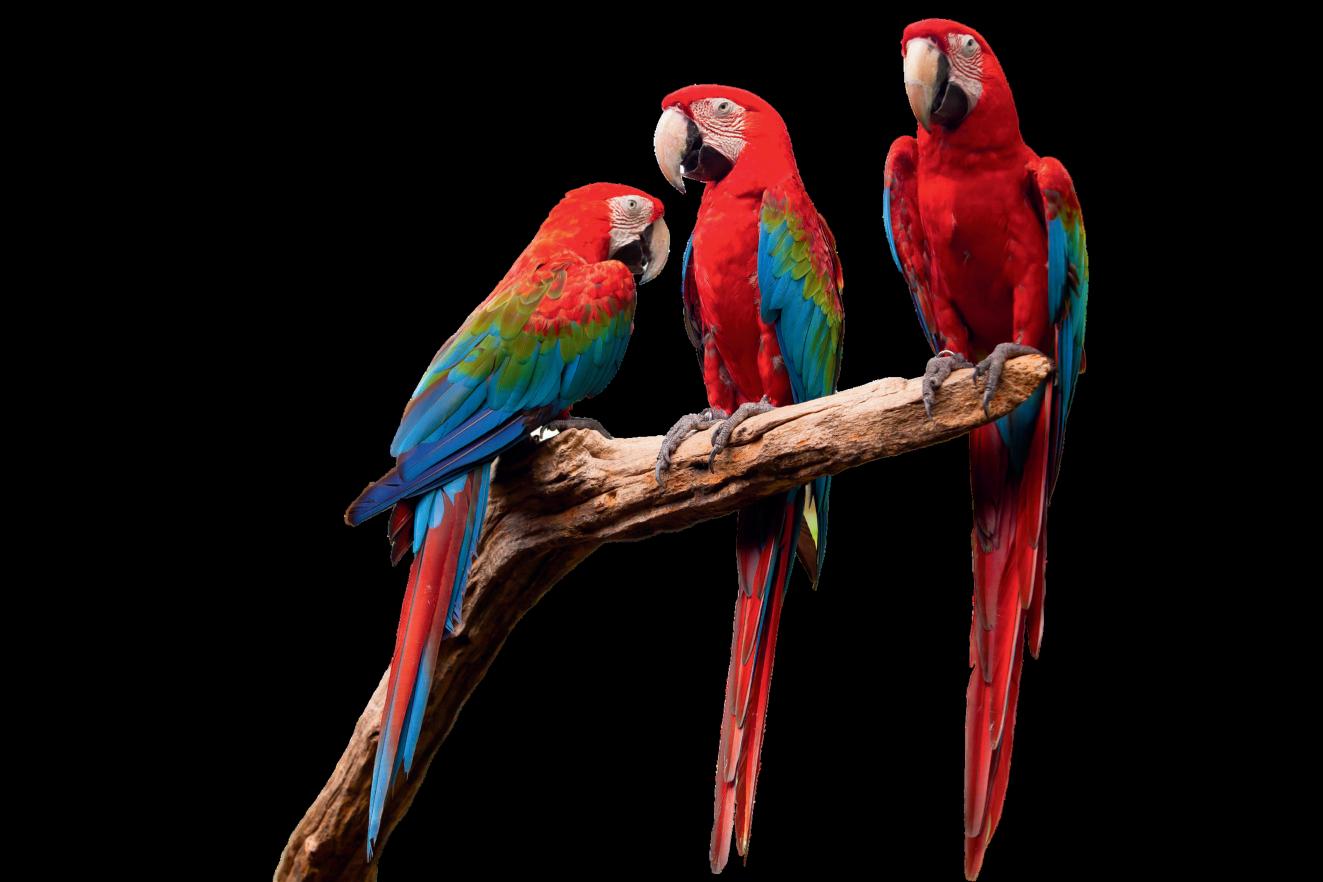



Somewhat paradoxically, those first couple of years are also vitally important for developing strong emotional attachments—for learning how to connect and how to love.
Our children are born into a naturally social world. During the first couple months of life, infants spend most of their time sleeping, getting used to life outside the womb. Even in utero, there is evidence that suggests that our babies are reacting to input going on around them. I recommend that you engage in every opportunity you can to build a bond with your child and communicate, both verbally and nonverbally, even from the very beginning, in order to foster that social development. When you’re feeding your baby, talk to him, look him in the eye, smile at him, and tell him he’s wonderful. Sing to him, coo with him, marvel at the moment and the singular blessing of those interactions.
Very young babies typically do not engage in interactive play with other infants. Developmentally, they are simply not neurologically programmed for that kind of social interaction yet. However, social development does begin in infancy through eye contact and observation. By the time a child reaches the age of two, three, or even four, they normally engage in what’s called “parallel play”—exploring the world by themselves, often in a room filled with others their age who are exploring on their own as well.
Yet, somewhat paradoxically, those first couple of years are also vital-
ly important for developing strong emotional attachments—for learning how to connect and how to love. The paradox is one you can easily observe in a pasture that is filled with horses, yet in which a newborn foal stays as close as it possibly can to its mother. Infant humans, too, need an anchor—one person (or two people) who stays very close at hand to help them feel secure in their environment so that they can explore it freely. It’s only when they understand that their anchors are rock solid and always dependable that babies (whether human or equine) become secure enough to begin freely exploring and interacting with others— which is a major developmental step that cannot occur until that anchoring is given in their lives.
It’s important to observe how your child interacts with other babies, toddlers, and other children, no matter what his age. This can give you critical cues into how your child is beginning to view the world and get along with others. Does he prefer to be with adults— who are more “predictable,” let’s say than most kids are? Because adults seem so steady by comparison, children who have underlying anxieties or fears or who simply find it difficult to interact with their environment often gravitate toward familiar and comfortable adults from whom they receive comfort and support—normally a mom or a stay-at-home dad, or whomever they view as their chief “protector.”


By the time a child reaches two, he should recognize other kids around him, learning what’s “mine,” and how to say “no!”—in essence establishing his territory, creating boundaries, and setting limits. It’s at this point that parenting begins to be as much about shaping your child’s socialization as maintaining his physical health and development. Teaching your child how to share, how to refrain from hitting or biting when she seeks something she wants, and how to be cooperative instead of selfish are tasks that require gentle reinforcement and constant modeling to create behavioral patterns that can endure. This is a skill that starts at home and continues to grow and develop through early childhood.
Issues that arise when a child is in the first or second grade— such as pronounced difficulty with handwriting or trouble sitting still— can often be linked back to the likelihood that they walked too early or that they never crawled. I recently spoke with a gentleman in his seventies who told me how he had never crawled and had only recently realized what a problem this had been for him. He had been an avid golfer throughout his life and had successfully developed his own style to compensate for the challenges that skipping the
developmental stage of crawling had created for him. Not long before we spoke, he had begun a program that addressed many of the same issues we take on with the children we see. Even as an adult, later in life, he was delighted with the changes he was observing in his memory, attention, and focus.
Being aware of developmental challenges—and knowing how best to support your child through them— can make a huge difference in your child’s ultimate success and selfesteem. Educating yourself to know whether your child is demonstrating a characteristic that’s simply unique to her or whether she is facing a true developmental challenge and needs help is vital. If you have a nagging doubt about how she is doing—let’s say you’re seeing a bit too much anxiety or a little too much frustration, or she’s avoiding activities that her friends seem to love—take a long, objective, and unworried look at her. Investigate. Do not run away from the issue or assume that it is “nothing.” Many times, it is something that is very easy to fix—when it’s addressed early. Our children don’t come with an instruction manual, and the best way to ensure that they develop as fully and joyfully as possible is by becoming their strong and steadfast developmental advocate.

Sally Fryer Dietz, PT, DPT, CLC, CST-D, is a highly esteemed Doctor of Physical Therapy, developmental specialist, sensory integration expert, lactation counselor, and Upledger CranioSacral Therapy Diplomate and presenter. With unmatched dedication to therapeutic pediatrics and as a devoted mother to two boys with distinct learning styles, she has touched the lives of thousands of children and their families, helping them lead healthier, happier lives. Her innovative therapy methods have garnered international acclaim, making her a true pioneer. Residing in Dallas, Texas, Dietz continues to advocate for the potential within every child to succeed naturally.
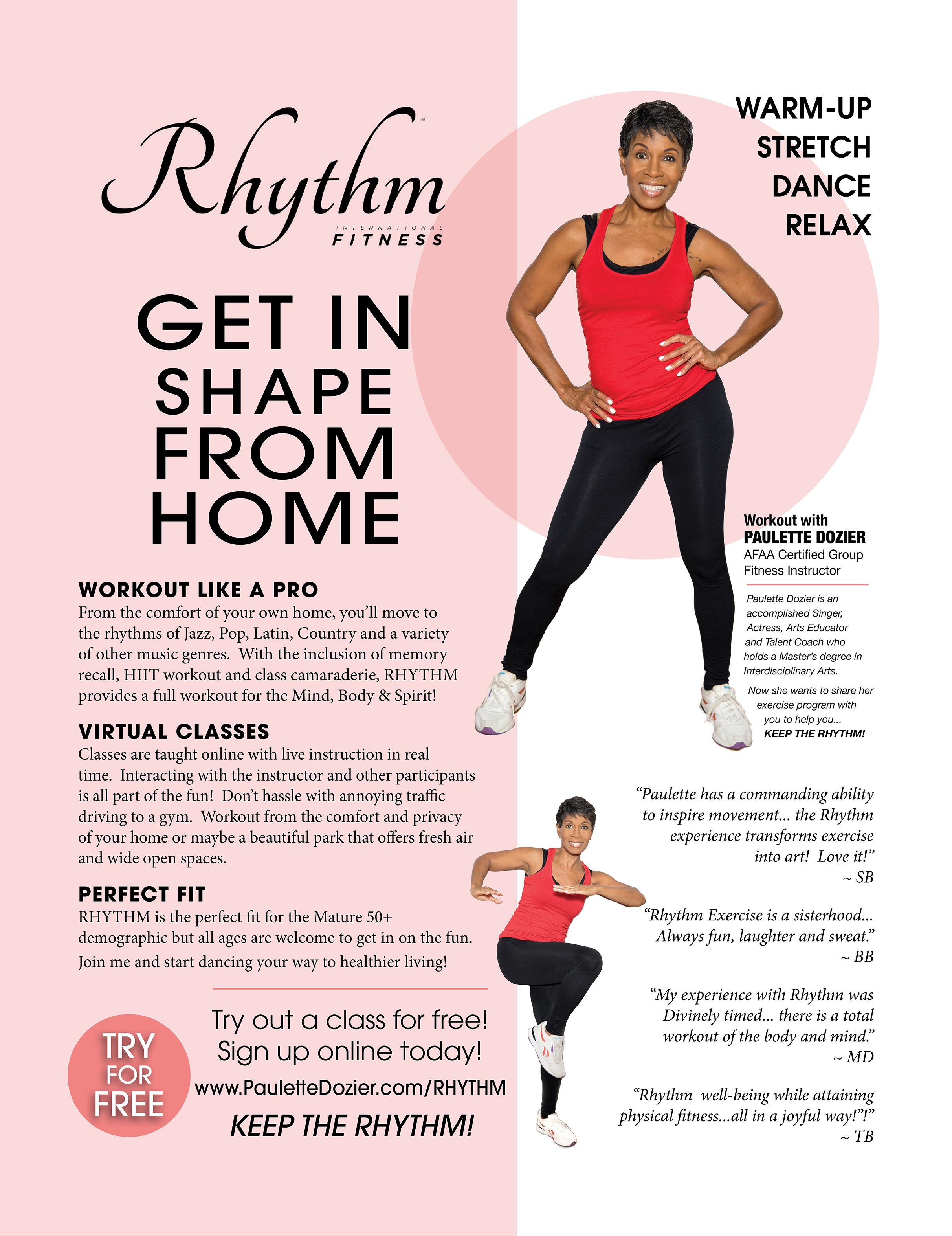
If you’re reading this, you have an inkling of an idea that your menstrual cycle is important enough to learn about. What you—and the world—need to know is that the effects of the menstrual cycle go far beyond reproduction. In fact, in 2016, the American College of Obstetricians and Gynecologists named the menstrual cycle a vital sign, like pulse and body temperature.1
Yet, modern society teaches us to neglect, suppress, and hide our menstrual cycles, even though the cycle is intertwined with the function of the whole body. Your brain, metabolism, microbiome, stress response, immune system, and reproductive cycle are all closely linked to your fertility.
Society conditioned us menstruators to cringe at period talk, stuff our tampons to the bottom of our bags in fear others will see them, and blame any negative mood on “PMS.” The reality? Your period—or your entire menstrual cycle—holds
vital clues to your health and immense wisdom around your Wellness.
The human body relies on many cycles to function and thrive. However, not all cycles work in the same time frame. Circadian rhythms are processes that occur on a 24-hour basis, like the sleep-wake cycle. Ultradian rhythms occur repeatedly within 24 hours, such as sleep stages, appetite, and blood circulation. And infradian rhythms last longer than 24 hours. These cycles work in synergy to ensure you survive and, hopefully, thrive. Ignoring the menstrual cycle’s infradian rhythm puts body systems at risk of not working optimally, and the effects don’t feel good.
Think about how you feel when your circadian rhythm gets messed up, like if you get jet lag, have a rough night’s sleep, or spend a week in Alaska during summer when it’s sunny at night.
 Photo by Zagranyasha
Photo by Zagranyasha
You typically feel groggy and tired and may even experience stomach or mood problems. In a similar way, when other cycles fall out of whack, including your menstrual cycle, you can end up feeling unwell. Think about a stressful month at work when your premenstrual symptoms are way worse than usual or if your menstrual cycle disappears completely due to poor nutrition and you have no energy to do the sports you love anymore.
Your body’s many cycles dictate how you feel, and cycles are inherently made up of a process of change. The levels of hormones that run the menstrual cycle change over the course of a cycle. Because of this built-in cyclical nature, we as humans with menstrual cycles can’t realistically expect to show up the same exact way day after day. That would be fighting our very biology! We are cyclical beings, and there’s no changing that. We are not robots.
Unfortunately, the structure of society is built primarily on a 24hour cycle. Office workers typically stay at work from 8 a.m. to 5 p.m. every day, no matter their energy levels. Our social media feeds are full of highlights, and it is as if everybody is always at peak happiness. Workout and nutrition plans often recommend a “same thing every day” approach. The idea of productivity is so often reliant on what you do in a day when, in reality, most parts of life, like exercise, seasonal nutrition, the creative process, and so on, more naturally flow in phases.
When people repeat the same habits in the same way day after day, it could be called linear living. They might eat the same breakfast every day, clock into work at the same time every day to plow through the same tasks, force themselves
through the same workout that doesn’t sound appealing that day, etc. This isn’t to say that habits and structure are bad, but all too often, our linear-leaning standards set us up to ignore our bodies’ nudges when managing health and happiness. Your body and mind might be screaming for something different—the nutrients in your food, the benefits of a different workout, or a new creative endeavor—but we’re conditioned to tamp down any feelings of discontent for the sake of the hustle and grind.
There’s another way, which I call cyclical living. It might not look drastically different from linear living from the outside, but it can make all the difference in how you approach your habits, work, selfcare, and beyond. Cyclical living involves adapting your schedule, actions, and routines in order to best fit what your body needs at that particular time.
You might cycle through four different morning routines over the course of the month, switching every week. You might change your workouts periodically to incorporate times of building and times of rest (rather than pushing yourself at the same moderate intensity day after day). You can plan ahead for how you anticipate you’ll energetically feel on a certain weekend, so you can avoid committing to plans you won’t feel up to when the day arrives and instead schedule social activities for when you know you’ll feel most up for it.
Linear living says, “If you try hard enough, you might be able to have it all someday!” Cyclical living says, “You can have it all—just not all at once.”
Linear Living says, “Get better at time management, and you’ll get more done.” Cyclical living says, “Manage your energy, not your time.”
When you can work with your physiology to identify your needs and desires for any given day and week—rather than expecting them to be unchanging—you can move, eat, work, and play in a way that feels happier, healthier, and easier.
Linear living says, “You’re stuck because you’re unmotivated and need to push yourself through the resistance.” Cyclical Living says, “You know that you’ll be better suited for that task next week, and right now is better for the other task.”
Realistically, given the way our world is structured, we’ll always have some amount of linear living built into our lives. But what if we could work just a bit more in harmony with our bodies by tapping into cyclical living practices where we can?
Turns out, cyclical living can come pretty naturally to many of us. The menstrual cycle acts as a built-in blueprint for living cyclically over the days, weeks, and months. With half the people on Earth experiencing periods at some point in life, and with every human’s reason for existing being owed to the menstrual cycle, our physiology itself holds immense wisdom for living with more harmony across our busy lives.
The concept of cycle syncing describes a framework and set of tools for people with periods, whom I call “menstruators,” to align their nutrition, fitness, work, creativity, relationships, and hobbies with their menstrual cycle. Due to changing hormone levels, the menstrual cycle is composed of four phases, and each phase lends itself to a way of life that can optimize how you think, feel, and perform.
When you can work with your physiology to identify your needs and desires for any given day and week—rather than expecting them to be unchanging—you can move, eat, work, and play in a way that feels happier, healthier, and easier.
Have you ever noticed that some
weeks you’re on fire, banging out the whole to-do list, but then the next week, you can’t focus at all on those same tasks? Or that some weeks you kick butt exercising at high intensity and feel super strong, but then the next week you feel like you can’t keep up? Maybe you snap at your partner a few days a month and just blame it on PMS, or you crave avocados for a week but then can’t bring yourself to finish the rest before they rot.
These are all clues from your body’s hormonal changes, manifesting as a change in what you desire and how you feel. If you learn how to decode the clues, you can be proactive and reactive to your current cycle phase and primed to feel optimally well. Cycle syncing helps you honor those cyclical patterns, give yourself grace for not showing up the exact same way day after day, and notice what you feel, want, and need in each unique day.
And if you’re not currently having periods? That’s okay you can still use a cycle syncing framework! Whether you’re on hormonal birth control, are postpartum, or no longer get periods, you can learn to live cyclically without true menstrual cycles. (I cover this subject in more detail toward the end of this book.)
Living a lifestyle that accounts for your menstrual cycle will likely make you feel healthiest and happiest. Once you understand how and why your cycles work, you’ll feel more motivated to implement positive change and make progress toward your goals.
Cyclical living doesn’t have to be complicated. It’ll eventually come easy. Nature designed you to be a strong and efficient leader, connector, and creator, and in this book, we’ll explore how to use those powers.

A trailblazer in nature and menstruation,
Angie Marie is an outdoor athlete leading women toward more adventurous, creative, and rhythmic lives. She is a speaker, author, and mountain athlete who’s fascinated by the intersection of nature and womanhood. Fueled by her career background in expanding access to outdoor adventure to girls and women, Angie takes lessons learned from nature. She teaches audiences how to think adventurously so they can face fear, foster creativity, and beat burnout. She has taught many menstruators how to connect with their inner nature and interpret their fertility to enhance the way they move, eat, work, and play.
Her unique blend of passions and storytelling encourages a happier, healthier, more adventurous world where women can thrive. An avid mountain climber and ultrarunner.
Angie finds her home in the Columbia River Gorge in Washington. No matter where she’s exploring, she feels her best when tuning into her body’s wisdom.
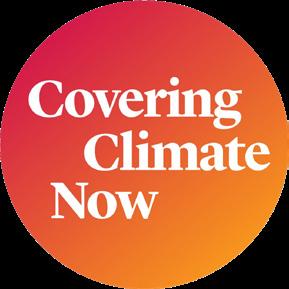

Innovators and early adopters drove the boom. Now, we’re confronted by the reality of persuading the majority.
by Gabrielle Doré
Tesla CEO Elon Musk recently sent a company-wide email stating, “We have made the difficult decision to reduce our headcount by more than 10% globally.” That comes out to over 14,000 employees.
Musk stated that this new batch of layoffs is due to a “duplication of roles”; however, there is a more plausible culprit. For the first time in the company’s history, its stock has been down over 31% year-to-date, as reported by Business Insider. Furthermore, Fast Company reports that sales have fallen by 8.5% each year since 2020. The company’s analysts describe this as a disaster, as some of Tesla’s competitors—such as Hyundai, Kia, Toyota, and BMW—have increased their sales in Q1.
But Tesla isn’t alone. Ford, for example, has recently announced a delay in rolling out its new line of electric pickups and SUVs. Ford explained that it will first work on adding gas-electric hybrids, citing a slower-than-expected EV sales market as the reason for the change.
Over the past few months, we have all heard about how the slowing EV market keeps us from hitting our CO2 emis-
sion-reduction goals. But there is no reason to panic, as the industry is following the natural product adoption process.
Any marketing or sociology course will likely include Everett M. Rogers’s idea of the “adoption curve.” It details who and to what degree consumers adopt a new technology or product. Any population can be split into five categories: innovators, early adopters, early majority, late majority, and laggards.
Innovators make up about 2.5% of the overall population. They’re eager to try anything new, not scared off by risk or the idea of failure. You can find them on crowdfunding sites like Indiegogo or Kickstarter, investing in products still in their conceptual stage.
Then you have early adopters, who make up a whopping 13.5%. They’re willing to work around or ignore kinks in a product. But unlike innovators, they’re not as willing to risk failure. Thus, they’ll test it out before preaching it to the choirs. Think of them as the first people to own a Blackberry or iPhone. Were there bugs? Yes. Did they care? No. Did they preach about the usefulness of either product? Also, yes.
Then, you get to the early and late majority, who together make up 68% of the population. The only real difference between the two is that the early majority is more trustworthy of data that shows a product or technology does solve a problem, at which point they are willing to try it out.
Lastly, there are laggards, who make up the remaining 16%. These are the few who refuse to try new tech even if a product is objectively better than its predecessor. They won’t naturally adopt it; rather, they must be convinced of its use and value time and time again before they even think it might be worth a look.
So, how does this connect back to Tesla and EVs?
Simple. Environmentalists, journalists, and market analysts alike were excited about early growth because they looked at sales data driven by innovators and early adopters. Now, we’re confronted by the reality of persuading the majority—which takes time. We jumped the gun in our excitement. That’s all.
Let’s be frank: EVs have kinks that the majority do not want to deal with. Consumer Reports’ latest annual car reliability survey found that “EVs from the past three model years [have] 79% more problems than conventional cars.” The most common issues are with the battery and charging system, which would be the equivalent of a traditional car having an issue with its gas tank.
If you’re wondering where the majority is comfortable, that’s hybrid and plug-in hybrid electric vehicles (PHEVs). The latter vehicles can run on battery power for an average day around town and then switch to a gas-electric mix if they have to go further. When Pat Ryan, CEO of the car shopping app CoPilot, spoke with NPR, he
stated, “The mainstream has adopted hybrids, so hybrid sales are white-hot.” Also, some PHEVs qualify for federal tax credits.
Going back to the iPhone example, we can use its adoption as a roadmap of expectations for EVs. Innovators bought the product in 2008-2009; the early adopters then naturally came in with the iPhone 3GS as the product still had some bugs but nothing that would risk failure. And then with the iPhone 4, the market exploded in 2012. The early and late majority saw the mountain of evidence on how having constant access to their emails and the internet added something to their personal or professional lives but without the bugs. But that was after three years of innovators and early adopters acting as the guinea pigs.
With EVs, we are currently in limbo between the early adopters and the early majority because of persisting issues with charging speed, range, and overall reliability—just as the iPhone was before the 4’s release. In order to have the same boom as the iPhone, EV automakers need to do what Apple did—a complete upgrade.
The iPhone 4 introduced what are now staple features, including the retina display and Facetime. Overall, it had over 100 new features and upgrades. Steve Jobs effectively took an iron to all of the 3G and 3GS’s wrinkles (antenna gate notwithstanding), such as spotty network connections and issues caused by the battery. Sound familiar?
So, as EV production begins to roll back to a more realistic pace, please note that this is the combination of the natural adoption cycle and the need for automakers to take an iron to EVs’ proverbial wrinkles.
This article was originally published by “WORTH MAGAZINE,”https://worth.com/person/gabrielle-dore/. It is republished here as part of The Eden Magazine’s partnership with Covering Climate Now a global journalistic collaboration to strengthen the covering of the climate story.
